Meet Our Past Interns - 2020
- Biodiversity and Conservation
-
Bruce, Janaya ’21
Molecular Biology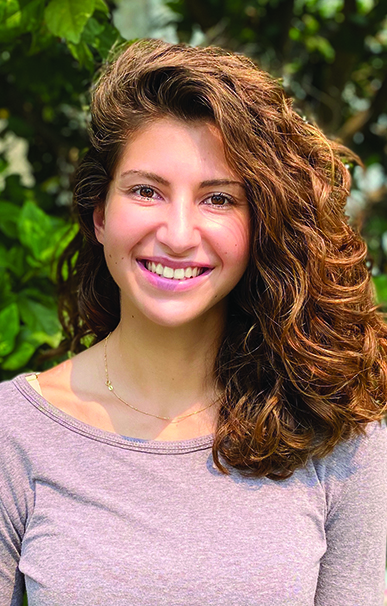 PROJECT
PROJECTZooxanthellae Community Composition in Hawaiian Coral Reefs
ORGANIZATION / LOCATIONGates Coral Lab, Hawai‘i Institute of Marine Biology
MENTOR(S)Robert Toonen, Professor, Hawai‘i Institute of Marine Biology, University of Hawai‘i at Manoa; Mariana Rocha de Souza, Ph.D. candidate, Hawai‘i Institute of Marine Biology, University of Hawai‘i at Manoa
SEE PRESENTATIONCertificate(s): Environmental Studies
My goal was to determine if environmental conditions influence the composition of the symbiotic single-celled plankton known as Zooxanthellae in two species of coral. My internship focused on using bioinformatics to analyze NextGen DNA sequences and determine the species of Zooxanthellae present in each of the coral samples. I used various bioinformatics software — in addition to creating my own programs — designed to isolate characteristic regions of DNA from the Zooxanthellae genome and compare them to existing databases. The results showed differences in Zooxanthellae community composition based on coral species and the depth of collection, but only partial differences based on location. These results provide insight into the susceptibility of certain coral reefs to climate change and warming ocean temperatures because different Zooxanthellae species can provide coral with greater resilience against temperature fluctuations. This internship helped me develop a strong knowledge of computer programming and bioinformatics, as well as understand the complexities of marine conservation. I am continuing to work with the Gates Coral Lab for my senior thesis. I also realized my interest in a conservation-based career, and I plan on pursuing a graduate degree in the field of marine conservation.
-
Cooke, Eve ’22
Ecology and Evolutionary Biology
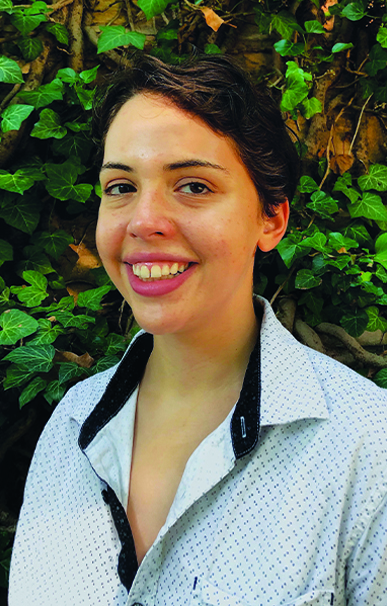 PROJECT
PROJECTImpact of Grazing Regimes on Rangeland Quality and Wildlife and Livestock Use
ORGANIZATION / LOCATIONRubenstein Group, Department of Ecology and Evolutionary Biology, Princeton University; Mpala Research Centre
MENTOR(S)Daniel Rubenstein, Class of 1877 Professor of Zoology, Professor of Ecology and Evolutionary Biology; Andrew Gersick, Associate Research Scholar, Ecology and Evolutionary Biology
SEE PRESENTATIONI studied the effects of cattle grazing in Kenya on the ranging patterns of the endangered Grévy’s zebra. At the Mpala Research Centre in Kenya, wild herbivores including Grévy’s zebras graze in grasslands alongside cattle. We hypothesized that if cattle stimulate rangeland, Grévy’s zebras would move toward cattle-grazing areas, and if cattle damaged the rangeland, Grévy’s zebras would avoid those areas. I filtered and submitted photographs and GPS locations of Grévy’s zebras taken by Mpala field researchers to Wildbook, an artificial intelligence software that identifies animals by their distinctive markings. The unique pattern of a zebra’s stripes functions like a “barcode” for identifying individuals. Working with postdoctoral fellow Andrew Gersick, I helped troubleshoot the software, create a user’s manual for inputting field data, and I compiled spreadsheet templates to assist with data entry. By the end of my internship, I identified 140 unique Grévy’s zebras. Time constraints prevented us from drawing a definitive conclusion on the interaction between cattle and Grévy’s zebras, but this internship confirmed my desire to study the interaction between humans, livestock and wildlife in order to sustain ecosystems.
-
Dalehite, Willow ’22
Ecology and Evolutionary Biology
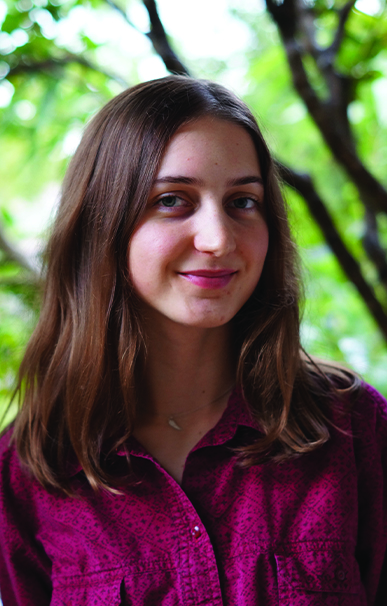 PROJECT
PROJECTNestling Feeding Behavior and Adult Interactions in a Cooperatively Breeding Bird
ORGANIZATION / LOCATIONRiehl Lab, Department of Ecology and Evolutionary Biology, Princeton University
MENTOR(S)Christina Riehl, Assistant Professor of Ecology and Evolutionary Biology; Amanda Savagian, Ph.D. candidate, Ecology and Evolutionary Biology
SEE PRESENTATIONI studied nestling provisioning behavior in a population of greater anis in Panama. These birds are unique for being cooperative breeders, meaning that two or more breeding pairs lay their eggs in the same nest and jointly care for their offspring. My research aimed to help better understand the dynamics of this breeding system and the factors that might influence those dynamics. I watched nest-camera footage of adults feeding nestlings and collected data on prey allocation between nestlings, nestling begging behavior, and instances of adult conflict (when multiple adults handle a single prey item during a feeding event). I designed a project for which I investigated the factors that might lead to adult conflict, as well as the effects this behavior might have on prey allocation and provisioning rates. I learned a lot about breeding behavior in greater anis, as well as how to develop effective questions, hypotheses and data collection methods. I gained a lot of insight into academic ecological research from the great experience I had, and I hope to continue to study questions in behavioral ecology in the future.
-
Duggal, Keenan ’23
Molecular Biology
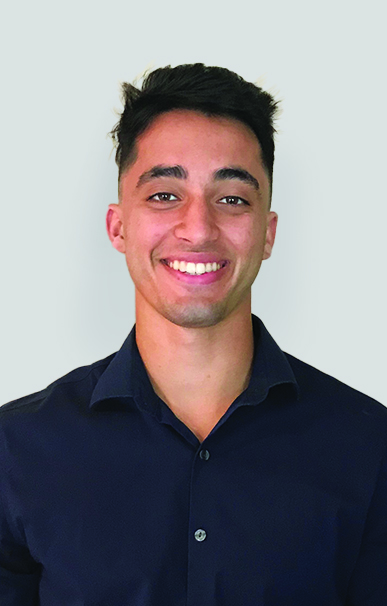 PROJECT
PROJECTGo to the Ant Thou Sluggard, Consider Her Ways Be Wise: Buffelgrass Seed Preferences, Predation and Dispersal in the Kenya Home Range by Messor Harvester Ants
ORGANIZATION / LOCATIONMpala Research Centre
MENTOR(S)Dino Martins, Executive Director, Mpala Research Centre; Ivy Ng’iru, Scientific Researcher, Mpala Research Centre
I worked to further our understanding of harvester ant ecology with a particular focus on the ants’ preferences for the seeds of different grass species. Ideally, the data we collected will help determine whether harvester ants situationally help or hinder buffelgrass, a dry perennial grass that is an invasive species in the Southwestern United States. We designed a series of experiments that tested for preferential selection in different seed groupings. For each experiment, the field team took site pictures at multiple time points and sent them to me to analyze remotely. I later organized the data into charts and performed an ANOVA statistical significance test, which concluded that one or more of the seeds were being selected at a higher rate. More data will be needed to ultimately answer the buffelgrass question. In addition to vastly increasing my knowledge of harvester ants, this experience taught me valuable lessons in organization, data collection and patience. Most importantly, I experienced the value and meaningfulness that field research can have.
-
Kummel, Misha ’22
Ecology and Evolutionary Biology
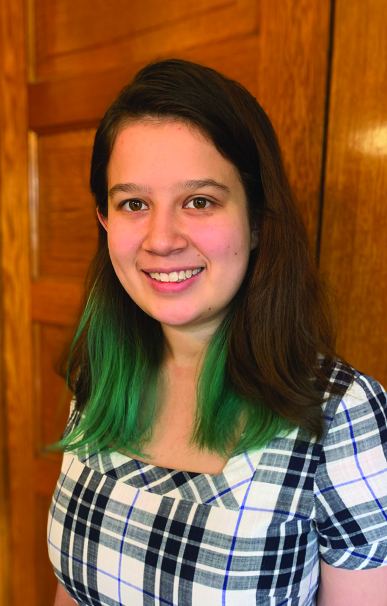 PROJECT
PROJECTClimate Change, Plant-Pollinator Interactions and Hummingbird Color Vision in the Rocky Mountains
ORGANIZATION / LOCATIONStoddard Lab, Department of Ecology and Evolutionary Biology, Princeton University
MENTOR(S)Mary Caswell Stoddard, Assistant Professor of Ecology and Evolutionary Biology
SEE PRESENTATIONI studied broad-tailed hummingbird behavior using data collected at the Rocky Mountain Biological Laboratory (RMBL). The project’s overarching goal is to better understand hummingbird pollination behavior and how it is affected by climate-driven changes in flower phenology. This summer, our team sought a clearer picture of which flowers hummingbirds visit during the season. I looked through thousands of camera-trap photographs to extract photos of hummingbirds visiting flowers. This allowed the team to determine hummingbird visitation rates at various flower species. I also carried out a thresholding analysis, which will allow the team to reduce the number of photographs that have to be manually inspected for data processing and analyses. Finally, I worked with another researcher at RMBL on a collaborative project for the team. Overall, I learned a lot about hummingbird behavior and flower phenology, gained valuable new data processing/analysis skills, and really connected with the members of my research group. This experience has inspired me to continue my current academic path and provided me with an invaluable mindset and skills for my independent work and beyond.
* This internship is connected to the HMEI Climate and Energy Grand Challenges project, “Investigating the Effects of Climate Change on Hummingbird Sensory Landscapes.”
-
Liebich, Maggie ’23
Ecology and Evolutionary Biology
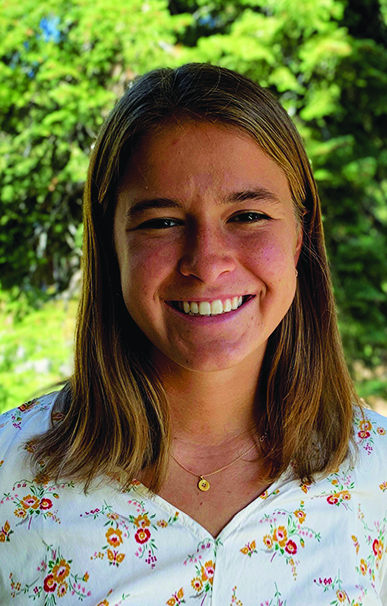 PROJECT
PROJECTImpact of Grazing Regimes on Rangeland Quality and Wildlife and Livestock Use
ORGANIZATION / LOCATIONRubenstein Group, Department of Ecology and Evolutionary Biology, Princeton University; Mpala Research Centre
MENTOR(S)Daniel Rubenstein, Class of 1877 Professor of Zoology, Professor of Ecology and Evolutionary Biology; Andrew Gersick, Associate Research Scholar, Ecology and Evolutionary Biology
SEE PRESENTATIONI studied the responses of Grévy’s and plains zebras to different cattle grazing patterns at the Mpala Research Centre in Laikipia County, Kenya, where pastoralism is an important part of the economy. Understanding the impacts of cattle on wildlife is necessary for sustainable development and the coexistence of humans and wildlife. Using the mapping software QGIS, I modeled the movement of cattle, plains zebras and Grévy’s zebras. The animal data was recorded by researchers in Kenya and logged in a program called Wildbook, which tracks repeated sightings of individual zebras. I focused on the impact of grazing on vegetation quality using the normalized difference vegetation index, which allowed me to understand how vegetation changed and recovered in response to cattle movement. I gained a lot of valuable experience in using QGIS and I enjoyed being able to work with Professor Rubenstein on studying zebra movement. Through this internship, I learned how rewarding it is to focus on and understand a specific ecological concept. I plan to continue working with Professor Rubenstein on these projects and study sustainable agriculture further.
-
Logan-Sankey, Fiona ’23
Chemical and Biological Engineering
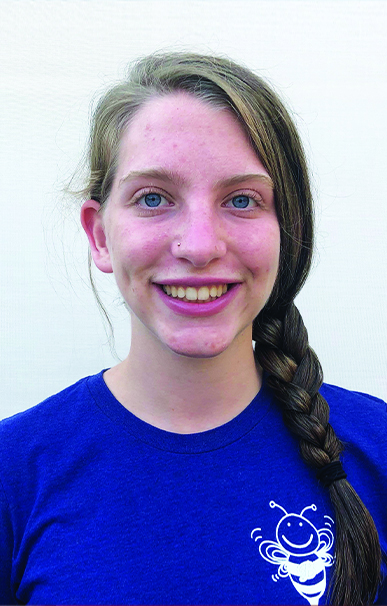 PROJECT
PROJECTImpact of Grazing Regimes on Rangeland Quality and Wildlife and Livestock Use
ORGANIZATION / LOCATIONRubenstein Group, Department of Ecology and Evolutionary Biology, Princeton University; Mpala Research Centre
MENTOR(S)Daniel Rubenstein, Class of 1877 Professor of Zoology, Professor of Ecology and Evolutionary Biology; Andrew Gersick, Associate Research Scholar, Ecology and Evolutionary Biology
SEE PRESENTATIONI interned for a project based at Mpala Research Centre in Kenya that examined how the introduction of cattle onto a landscape impacted the movements of plains and Grévy’s zebras. I analyzed photographs of zebras taken in the field and helped develop a system for efficiently uploading and processing them in Wildbook, our stripe-recognition software platform. I also worked with geographic information systems to plot the locations of the zebras and cattle in our experiment and determine whether the zebras were more or less likely to be observed in areas grazed by cattle. This internship was deeply rewarding. It provided me the opportunity to learn about rangeland health, as well as to develop a deeper understanding of the many elements that go into research and development. This experience has motivated me to learn more about sustainable development and taught me to be more mindful of how scientists can help local communities be better stewards of our natural environment. I hope to carry these lessons forward in my research and independent work.
-
McLaughlin, Katie ’23
Computer Science
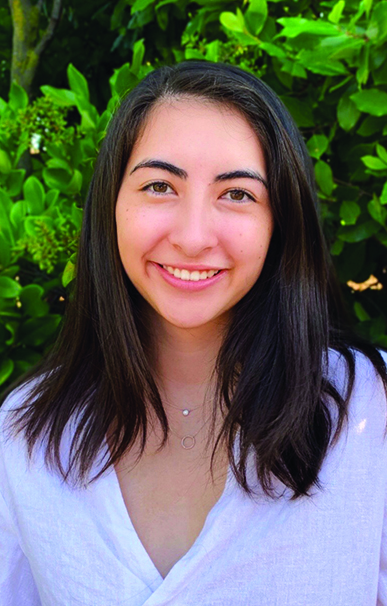 PROJECT
PROJECTResponses of Corals to Temperature Changes That Reflect the Large Seasonal Temperature Range of Bermuda (20-28ºC)
ORGANIZATION / LOCATIONBermuda Institute of Ocean Sciences (BIOS)
MENTOR(S)Yvonne Sawall, Assistant Scientist, BIOS
SEE PRESENTATIONI investigated how two coral species common to Bermuda adjust to naturally occurring temperature fluctuations. It is crucial to understand the mechanisms and capacities of physiological adjustment to gain insight into the ability of organisms to cope with climate change. I analyzed data from a temperature-manipulation experiment and identified patterns on thermal adjustments. I wrote Python scripts to extract, perform calculations on, and graph large volumes of data. I then analyzed trends in metabolic rates, the density of Zooxanthellae (photosynthetic symbiotic algae), pigment concentrations, and biomass over a temperature-reduction and acclimatization period. We are finalizing a paper for submission to a peer-reviewed journal that summarizes our questions and findings. This opportunity allowed me to further build my experience with popular tools used by data scientists and other professionals in my major and to learn more about coral biology. My internship also encouraged me to further explore the application of computer science and technology to environmental issues.
-
Reeves, Camille ’23
Astrophysics
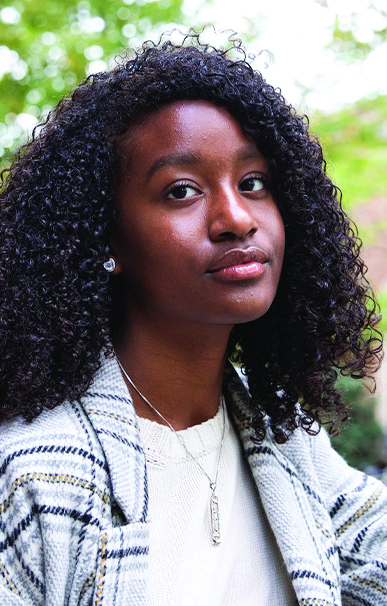 PROJECT
PROJECTTeaching Assistant for Conservation Clubs
ORGANIZATION / LOCATIONRubenstein Group, Department of Ecology and Evolutionary Biology, Princeton University; Mpala Research Centre
MENTOR(S)Daniel Rubenstein, Class of 1877 Professor of Zoology, Professor of Ecology and Evolutionary Biology
The Northern Kenya Conservation Clubs (NKCC) work in conjunction with the Mpala Research Centre to teach primary and secondary students about their natural environment through experiential learning. Though COVID-19 changed our work, we provided students with engaging content that can be used virtually or in-person for years to come. Our work included creating the Reading Corner, a collection of storytime-style videos featuring books about the natural environment, as well as creating lesson plans concerning various environmental topics to be used once in-person classes can safely resume. Because I was working with NKCC remotely and with limited resources, I was able to refine my skills in preparedness and resourcefulness. The most exciting result of our work was being told that our Reading Corner videos would be featured on Kenyan national television — which is being used for remote teaching during the pandemic — as supplemental content between lessons. Working with NKCC has cemented my lifelong love for teaching and education, and it has encouraged me to look further into Princeton’s Program in Teacher Preparation.
-
Remez, Elena ’23
School of Public and International Affairs
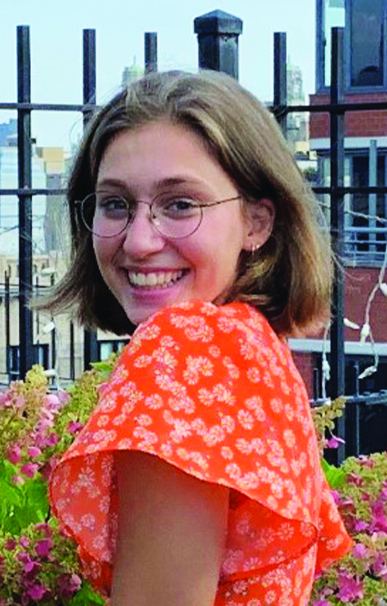 PROJECT
PROJECTTeaching Assistant for Conservation Clubs
ORGANIZATION / LOCATIONRubenstein Group, Department of Ecology and Evolutionary Biology, Princeton University; Mpala Research Centre
MENTOR(S)Daniel Rubenstein, Class of 1877 Professor of Zoology, Professor of Ecology and Evolutionary Biology
Certificate(s): Environmental Studies, Gender and Sexuality Studies
The Northern Kenya Conservation Clubs (NKCC) teach children about the environment and their responsibility to take care of nature. Because the program was moved online, we focused on developing a virtual “library” of stories read aloud by me, my fellow intern, Camille Reeves, and our adviser. For the majority of the summer, I worked to develop a template for the videos, including a small animation of the NKCC logo. Next, I worked on editing the recorded videos and adding comprehension questions that linked back to the NKCC curriculum. Working with the NKCC increased my video production skills and general knowledge of Kenya. We got to listen to local community leaders speak daily about the research and programs they have developed. It was amazing to hear research from such a different environment than Princeton. Prior to starting this internship, I wanted to pursue a certificate in gender and sexuality studies. After this experience, I have realized that I want to make sure my gender and sexuality classes are not primarily American-focused, and that I obtain a greater worldview of gender and sexuality.
-
Reynolds, Hannah ’22
Anthropology
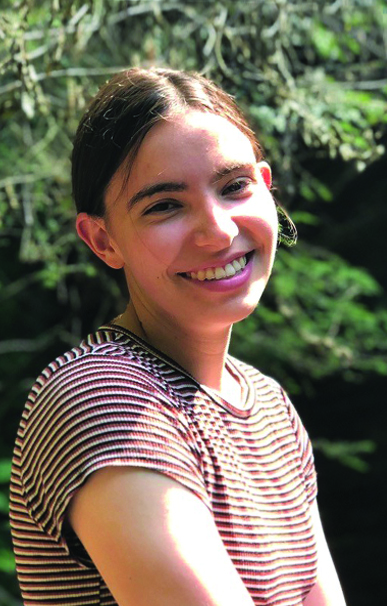 PROJECT
PROJECTIndigenous Language, Culture and Land Use in Southeast Alaska: Rethinking Environmental Justice in America’s Climate Forest
ORGANIZATION / LOCATIONHMEI Environmental Scholars Program, Princeton University
MENTOR(S)Christiane Fellbaum, Lecturer with the Rank of Professor in the Council of the Humanities, the Program in Linguistics, and Computer Science
SEE PRESENTATIONCertificate(s): Environmental Studies
I studied the connections between Indigenous language, culture and land use in Southeast Alaska, primarily by conducting surveys and interviews in the region. I also engaged in participant observation by partaking in traditional Alaska Native celebrations and language classes, as well as working with local conservation groups in lobbying for the protection of Tongass National Forest. The goal of this project was to rethink how environmental justice efforts can be tailored to fit the specific needs of Alaska Native communities that have lived and depended on the land for as long as 10,000 years, rather than simply focusing on conservation. Throughout this project, I gained a lot of useful skills in lobbying and writing op-eds, as well as in conducting original research in a virtual setting. Because I am interested in working in environmental policy after graduation, one highlight of my summer was speaking with two members of the U.S. House of Representatives about the issues I studied. I loved the chance to connect with people and hear their stories, and I hope to maintain these relationships in the future.
-
Rodriguez, Jamie ’23
School of Public and International Affairs
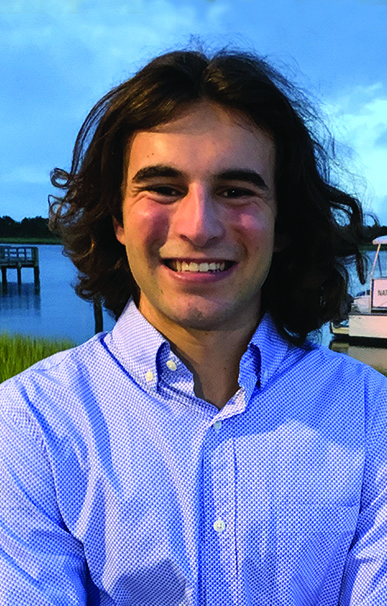 PROJECT
PROJECTWild About Wild Horses: What Does the Public Know and How Does It Know It?
ORGANIZATION / LOCATIONRubenstein Group, Department of Ecology and Evolutionary Biology, Princeton University
MENTOR(S)Daniel Rubenstein, Class of 1877 Professor of Zoology, Professor of Ecology and Evolutionary Biology
SEE PRESENTATIONI studied how visitors to North Carolina’s Shackleford Banks learn about the island’s wild horse population. The horses have inhabited the island for centuries and are protected and managed by the U.S. National Park Service. Though the Park Service educates visitors about the horses through pamphlets, exhibits and tours, we wanted to quantify the educational value of having firsthand encounters with the animals. With the assistance of Professor Rubenstein, I helped design and administer a survey that measured the educational outcomes of visitors’ experiences with the Shackleford horses. My work consisted of creating survey questions that minimize bias, developing methods of delivery that mitigate viral transmission, and soliciting responses in the field. My experiences exposed me to a unique intersection of social science and ecology, prompting my interest in the planning and design of public spaces.
-
Singhal, Nishant ’23
Operations Research and Financial Engineering
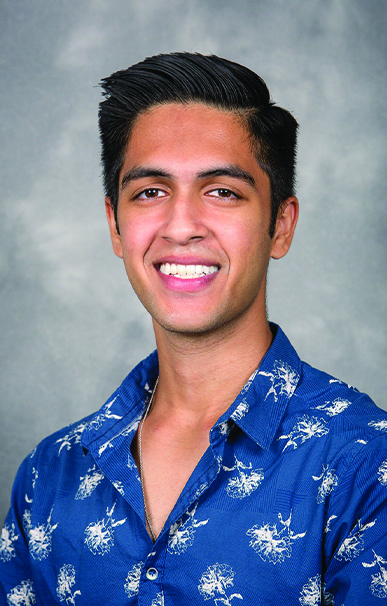 PROJECT
PROJECTReconstructing Earth’s First Reefs and Their Impacts on the Cambrian Explosion
ORGANIZATION / LOCATIONMaloof Research Group, Department of Geosciences, Princeton University
MENTOR(S)Adam Maloof, Professor of Geosciences; Ryan Manzuk, Ph.D. candidate, Geosciences
My focus was on modeling and analyzing the structure of prehistoric sponge-reef fossils to determine the role these reefs played in the Cambrian explosion, the period more than 500 million years ago when multicellular animals began appearing on Earth. I segmented images of fossil cross sections to produce training data for a convolutional neural network, which allowed us to turn fossil samples into digital 3D models of reefs. I also wrote code in MATLAB software that allowed us to trace reef branches across different cross sections of a fossil sample. This capability let us quickly analyze basic structural properties such as branching angle, which is crucial for understanding how these reefs contributed to the evolution of marine life. During my internship, I improved my coding and data skills and developed a greater awareness of the Cambrian Period. I also deepened my understanding of the research process and how I can approach and structure problems in the natural sciences.
-
Torrens, Kai ’22
Physics
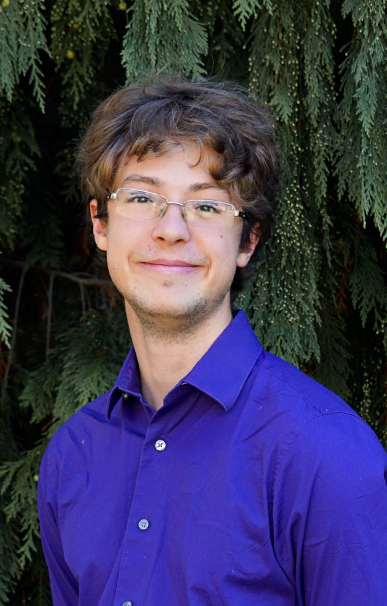 PROJECT
PROJECTThe Effects of Large Carnivore Reintroduction on Antelope, Birds and Parasites in Gorongosa National Park
ORGANIZATION / LOCATIONPringle Lab, Department of Ecology and Evolutionary Biology, Princeton University
MENTOR(S)Robert Pringle, Associate Professor of Ecology and Evolutionary Biology; Matthew Hutchinson, Ph.D. candidate, Ecology and Evolutionary Biology
SEE PRESENTATIONCertificate(s): Applied and Computational Mathematics
I studied two ecological puzzles in Gorongosa National Park in Mozambique. As wildlife recovered from the Mozambican civil war, a single species of antelope known as waterbuck experienced huge population growth. I helped the Pringle Lab investigate how this population growth impacted waterbuck ecology by analyzing camera-trap videos to determine the variation in waterbuck foraging rates across habitat. Secondly, it is suspected that nyala and bushbuck — two largely forest-dwelling antelope species — compete for the same resources as waterbuck and that nyala generally outcompete them. With guidance from the lab, I used camera-trap data to start building an occupational model of the spatial overlap of these two species and dietary data from DNA metabarcoding to investigate the overlap of their diets. I gained a working knowledge of the R programming language, familiarity with a broad range of data types, and vastly expanded my confidence in my ability to explore literature and understand scientific papers. The Pringle Lab is incredibly welcoming and a fantastic group of people. I feel lucky to have worked with them, and I hope to keep working on these problems with them going forward!
-
Ulrich, Devon ’23
Computer Science
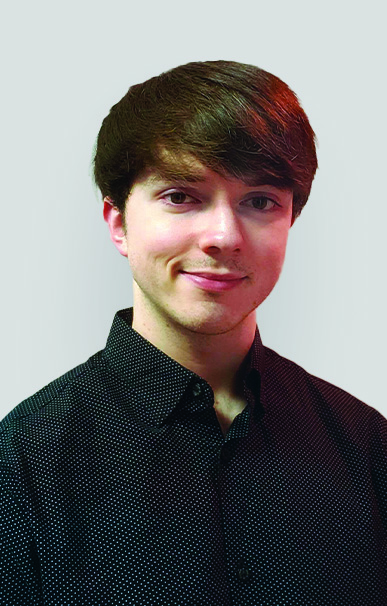 PROJECT
PROJECTReconstructing Earth’s First Reefs and Their Impacts on the Cambrian Explosion
ORGANIZATION / LOCATIONMaloof Research Group, Department of Geosciences, Princeton University
MENTOR(S)Adam Maloof, Professor of Geosciences; Ryan Manzuk, Ph.D. candidate, Geosciences
My internship focused on analyzing fossils from the Cambrian explosion, a period in Earth’s history marked by an enormous increase in new species and overall biodiversity as complex life forms first evolved and spread. Not much is known about why it took place, however, and its origins and causes are still largely unexplained. The Maloof Research Group is investigating the importance of oceanic reefs in the development of life during the Cambrian explosion. My primary goal was to create a computational method for analyzing fossilized shell samples obtained from an ancient Cambrian reef. I used machine learning and computer vision algorithms to automatically categorize each sample into different types of rock. I also created MATLAB programs to automatically search through our images and identify shells with the help of machine learning models. This was a really great hands-on introduction to computer vision and data science, and I learned about programming in MATLAB using different machine learning algorithms and analyzing digital images. I will definitely explore more opportunities in computer vision and data science.
-
Vasen, Samuel ’23
Ecology and Evolutionary Biology
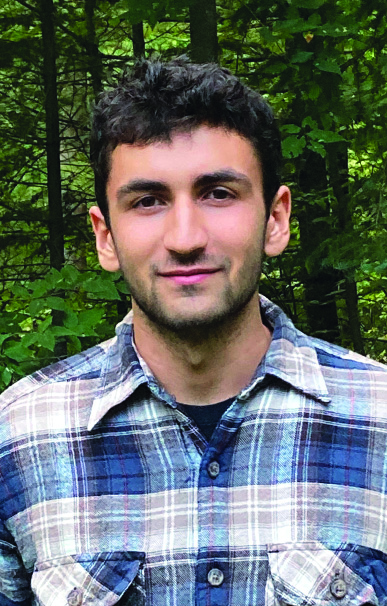 PROJECT
PROJECTReserve and Forest Restoration Study
ORGANIZATION / LOCATIONThe Watershed Institute
MENTOR(S)Steve Tuorto, Director of Science and Stewardship, The Watershed Institute
SEE PRESENTATIONFor my internship, I worked on a detailed forestry survey of over 1,000 acres of preserved land at The Watershed Institute, a land and water conservation organization in New Jersey. The goal of my project was to translate the survey’s significant data set into accessible metrics on the health and composition of distinct sections of the forest. I worked with my mentor to analyze and extract relevant data points that reflected forest health. I compiled these data into interactive layers on a digital map using a geographic information system (GIS) program. My final product was an interactive website embedded with this map that functions as a tool to help The Watershed Institute ascertain forest health and composition. From this project, I gained substantial analytical skills and a strong command of GIS mapping software. I found the open-ended and creative side of this project very engaging. Working with an organization like The Watershed Institute has increased my drive to do more work in conservation.
- Climate and Environmental Science
-
Arnold, Janelle ’23
Chemical and Biological Engineering
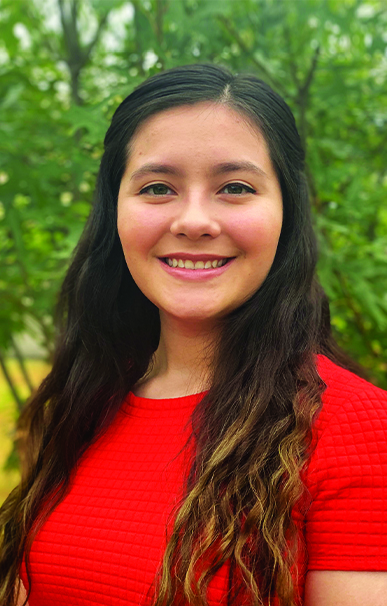 PROJECT
PROJECTInvestigating Trace-Gas Uptake in Chilean High Andes Soil Microbe Communities
ORGANIZATION / LOCATIONGeomicrobiology Group, Department of Geosciences, Princeton University
MENTOR(S)Tullis Onstott, Professor of Geosciences; Zachary Garvin, Ph.D. candidate, Geosciences
SEE PRESENTATIONCertificate(s): Environmental Studies
I analyzed metagenomic data recovered from soil samples collected from a hot spring in Chile’s Atacama Desert. The microbial communities in this region are unique in that they survive under extreme conditions and with few nutrients. My goal was to investigate the biodiversity of these microbial soil communities and to identify high-affinity trace-gas oxidizers. Previously, the Onstott Lab identified from these soil samples hydrogen and carbon monoxide gas uptake that appeared to be biological and more active in areas farther from the hot spring. I investigated the uptake of hydrogen by using the group 1h hydrogenase enzyme in nickel-iron alloy as a biomarker to identify organisms with hydrogen-scavenging metabolisms. Using Hidden Markov models, I was able to train a program to identify these hydrogenases within genome sequences. Similar to the previous data, I identified more high-affinity hydrogen oxidizers farther from the hot spring. This supports the idea that microbial communities in low-nutrient environments are more likely to rely on trace-gas scavenging for their survival. This internship gave me more insight into the field of geobiololgy and bioinformatics, while equipping me with the knowledge to analyze more genomic data in the future.
-
Baskind, Abigail ’22
Geosciences
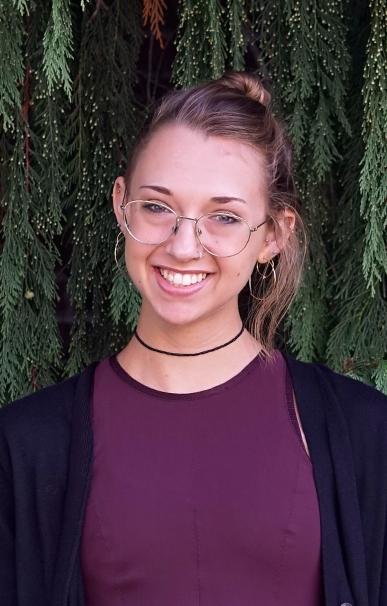 PROJECT
PROJECTMetabolic Pathways of “Microbial Dark Matter” Found in Thawing Siberian Permafrost
ORGANIZATION / LOCATIONGeomicrobiology Group, Department of Geosciences, Princeton University
MENTOR(S)Tullis Onstott, Professor of Geosciences; Renxing Liang, Postdoctoral Research Associate, Geosciences
SEE PRESENTATIONThe recently defined phylum of Candidatus Coatesbacteria remains underexplored due to the limited number of metagenome-assembled genomes (MAGs) that originate from deep-sea hydrothermal vent and hot-spring sediments. Deep metagenomic sequencing has recovered two high-quality MAGs from ancient marine sediment collected from Siberia in conjuction with the Onstott Lab. My analysis of these MAGs revealed that they belong to the Coatesbacteria phylum, thus expanding the genomic diversity of this Candidatus phylum. I also calculated the MAGs’ amino acid identities and found that their low average value compared to previously published Coatesbacteria MAGs suggest that the MAGs might be phylogenetically novel at the sub-phylum level. The two permafrost MAGs are closely related to each other and a likely misclassified Zixibacteria MAG. Annotation of the permafrost MAGs showed the bacteria to be anaerobes. The identification of glycolysis and gluconeogenesis, and of the pentose phosphate pathway, suggested the genetic potential for heterotrophic carbon metabolism. Furthermore, these novel bacteria appear to be capable of ethanol metabolism, butyrate fermentation and beta-oxidation of fatty acid. Pangenome analysis of Coatesbacteria-related MAGs from permafrost and non-permafrost sediment sampled from geographically different regions could provide further insight.
-
Bethel-Brescia, Chaz ’22
Computer Science
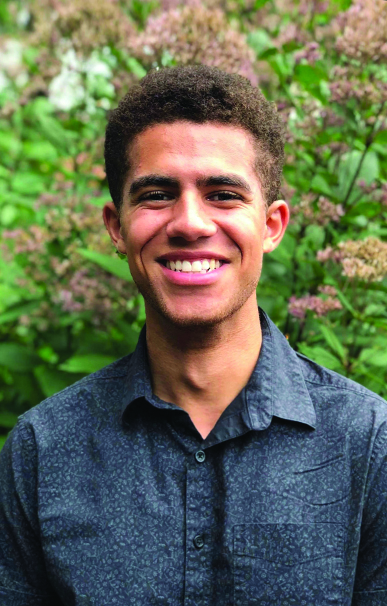 PROJECT
PROJECTTracking the Expansion of Corrosive Waters in the Global Ocean in Earth System Model Projections
ORGANIZATION / LOCATIONSarmiento Group, Program in Atmospheric and Oceanic Sciences, Princeton University
MENTOR(S)George J. Magee Professor of Geoscience and Geological Engineering, Emeritus, Professor of Geosciences, Emeritus; Graeme MacGilchrist, Postdoctoral Research Associate, Atmospheric and Oceanic Sciences; Sarah Schlunegger, Postdoctoral Research Associate, Atmospheric and Oceanic Sciences
SEE PRESENTATIONCertificate(s): Statistics and Machine Learning
I worked to quantify the pace of migration necessary for calcifying marine organisms to remain within habitable regions. I refined the measurement of climate velocity — which is a metric for how quickly environmental boundaries migrate due to climate change — to provide better insight into when and where organisms will face danger, and how quickly they must adapt. I analyzed 30 Earth system model simulations of the years 1950-2100, focusing mainly on carbonite-ion concentration in seawater. With an improved “escape velocity” calculation, I tracked the movement of the critical undersaturation boundary in which calcifying organisms can no longer build their shells or skeletons, and developed novel ways to visualize that information. I found that calcifying organisms globally and regionally must migrate increasingly quickly over the 21st century, particularly from the early- to mid-21st century in a high-emission scenario. In future investigations, my escape-velocity calculation method will be applied to additional climate stressors. During my internship, I learned about climate modeling, oceanography, managing large data sets and how to navigate the nonlinear research process. I hope to continue investigating current issues with data science through my independent work at Princeton.
-
Borstlap, Hanne ’22
Civil and Environmental Engineering
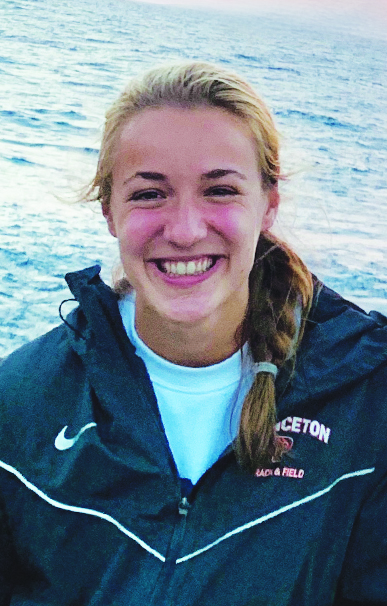 PROJECT
PROJECTPhysical and Biogeochemical Processes in the Subtropical South Pacific
ORGANIZATION / LOCATIONScripps Institution of Oceanography, University of California–San Diego
MENTOR(S)Sarah Gille, Professor, Scripps Institution of Oceanography; Lynne Talley, Professor, Scripps Institution of Oceanography; Channing Prend, Ph.D. candidate, Scripps Institution of Oceanography
SEE PRESENTATIONCertificate(s): Environmental Studies
I studied the seasonal variability of phytoplankton productivity in the subtropical Pacific Ocean. I used the programming language Python to analyze data collected by autonomous Argo floats deployed in the Southern Ocean that estimate chlorophyll and particulate organic carbon levels at depths of up to 2,000 meters. I mainly looked at how changes at the depth of the mixed layer — the portion of the ocean’s top layer that experiences turbulence — influence the seasonal cycles of phytoplankton blooms. Because the existing literature on this topic is very limited, I felt like I made significant contributions to the world of physical oceanography. In nine weeks, I learned an incredible amount not only about the ocean, but also about coding and data analysis. I also partook in a 10-day research cruise to collect data for future studies. I am now even more certain I want to continue doing research after I graduate and the skills and experiences from my internship will be huge assets in my application to graduate school.
-
Cano Renteria, Emilio ’23
Civil and Environmental Engineering
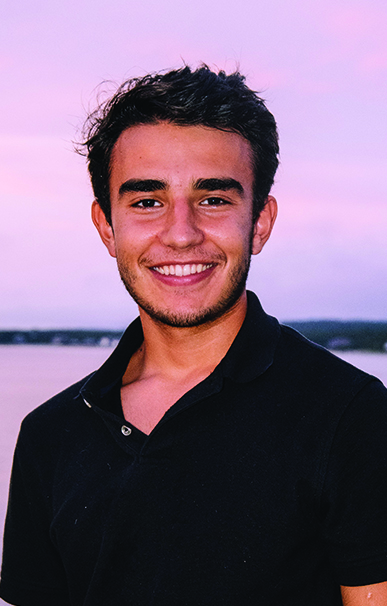 PROJECT
PROJECTDetecting Growth Rings in Ancient Giant Ooids
ORGANIZATION / LOCATIONMaloof Research Group, Department of Geosciences, Princeton University
MENTOR(S)Adam Maloof, Professor of Geosciences; Bolton Howes, Ph.D. candidate, Geosciences
SEE PRESENTATIONCertificate(s): Applications of Computing, Statistics and Machine Learning, Sustainable Energy
I studied ooids, which are small, sedimentary grains that form in shallow water. Ooids grow through precipitation and shrink through abrasion, so their shapes and sizes vary greatly depending on environmental factors such as ocean chemistry and current velocity. Our goal was to construct three-dimensional models of ancient ooids in order to measure their morphology. These measurements provide insight into ocean conditions throughout Earth’s history, and help us better understand the ocean’s response to climate perturbations. I automated the process of creating 3D models by developing a machine learning algorithm that could independently detect ooids from an image. This process required lots of work removing noise from images, performing segmentations, and extracting shapes from the processed images. I gained substantial experience with the powerful MATLAB programming language by using it to develop all of my code. Moreover, I had the opportunity to work on an original research project that helped prepare me for future independent work at Princeton. This internship was an amazing opportunity and, as a result, I am now pursuing the statistics and machine learning certificate to pursue similar work in the future.
-
Chen, Linda ’23
Mechanical and Aerospace Engineering
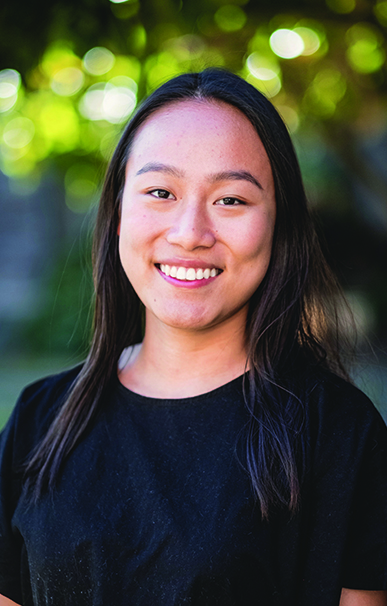 PROJECT
PROJECTMeasuring Bathymetry Using NASA’s ICESat-2 in Andros Island, Bahamas
ORGANIZATION / LOCATIONMaloof Research Group, Department of Geosciences, Princeton University
MENTOR(S)Adam Maloof, Professor of Geosciences
The Ice, Cloud, and land Elevation Satellite (ICESat-2) NASA mission measures ice sheet elevation, sea-ice thickness and vegetation canopy to quantify the effects of global warming. The instrument on the ICESat-2 is the Advanced Topographic Laser Altimeter System (ATLAS), a photon-counting lidar that emits six separate laser pulses to the surface of the Earth. I investigated whether the ATLAS instrument can measure the depth of shallow water. I used a depth-measurement model based on optical satellite imagery and direct measurements from northern Andros Island, Bahamas. Developing accurate depth maps on shallow continental shelves is crucial for modeling water and nutrient transport, and for ultimately understanding how sediments accumulate to form a stratigraphic record of Earth’s history. I studied different ATLAS data products and developed an algorithm to extract water depth from noisy photon data. I learned about the engineering of Earth’s satellites and how to extract data using various statistics and clustering algorithms. I also learned how to manipulate large data sets using parallel computing and high-performance computing clusters. After this internship, I would like to hone my skills in data analysis and explore space-technology engineering.
-
Edling, Sean ’22
Ecology and Evolutionary Biology
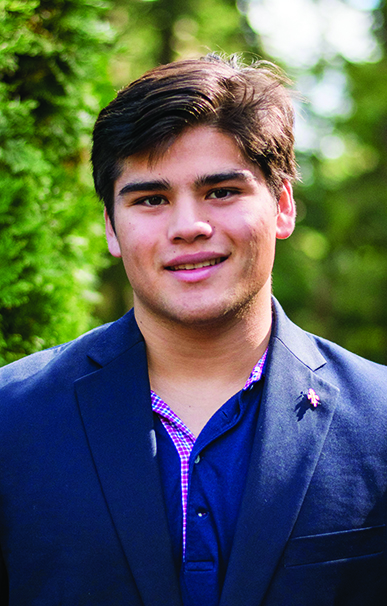 PROJECT
PROJECTGlobal Estuarine Nitrous Oxide Distribution
ORGANIZATION / LOCATIONWard Lab, Department of Geosciences, Princeton University
MENTOR(S)Bess Ward, William J. Sinclair Professor of Geosciences and the High Meadows Environmental Institute; Weiyi Tang, Postdoctoral Research Associate, Geosciences
SEE PRESENTATIONCertificate(s): Global Health and Health Policy
I spent the summer studying the production of nitrous oxide in global estuarine and coastal regions. Nitrous oxide is an ozone-depleting agent with about 300 times the warming potential of carbon dioxide. Measurements of nitrous oxide in global estuaries vary considerably, however, due to environmental and anthropogenic factors. I worked with Weiyi Tang to read, extract, compile and analyze data from 80 published papers covering over 100 estuaries to identify the factors contributing to the variability in global nitrous oxide distribution. After contacting the authors of the published works, we compiled their individual data sets into a central nitrous oxide estuarine database. We then used the data to create a new global estuarine nitrous oxide distribution map. Additionally, the data allowed us to perform correlation analyses between nitrous oxide and other environmental factors on a global scale. Through this internship, I gained skills in data analysis, presentation and communication, and I was introduced to the amazing world of biogeochemistry and environmental science.
-
Eusebi, Ryan ’22
Computer Science
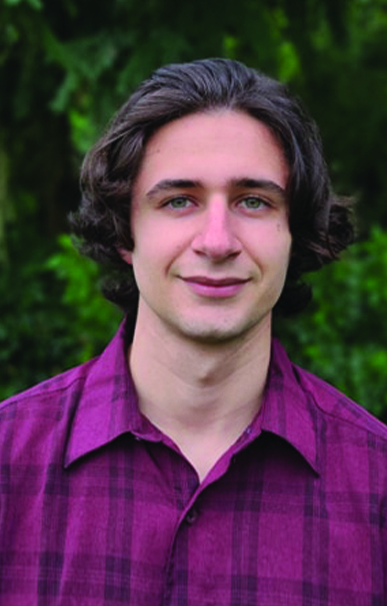 PROJECT
PROJECTInvestigating the Effects of Warmest Tropical Waters on Hurricane Frequencies
ORGANIZATION / LOCATIONVecchi Research Group, Department of Geosciences, Princeton University
MENTOR(S)Gabriel Vecchi, Professor of Geosciences and the High Meadows Environmental Institute; Wenchang Yang, Associate Research Scholar, Geosciences
SEE PRESENTATIONCertificate(s): Applied and Computational Mathematics, Statistics and Machine Learning
My goal was to build a statistical hurricane model that could predict seasonal hurricane counts in the North Atlantic based on a number of indices. Prior research has shown that these seasonal frequencies can be explained very well using Atlantic Main Development Region sea-surface temperatures (SSTs) and tropical average SSTs. I wanted to find out if the statistical model can be improved using the warmest 30% of SSTs in the tropics instead. After training the statistical model on hundreds of model runs in a variety of different climate scenarios, I found that using those warmer temperatures is in fact more accurate than using the tropical average. I also found that carbon dioxide plays an important factor in hurricane frequencies independent of temperature change. I applied the statistical model to a variety of model forecasts for SST and carbon dioxide for the next century. The ensemble average showed a general decrease in hurricane frequencies beyond 2030. Throughout the summer, I gained a lot of experience in the climate sciences and in data analysis. I thoroughly enjoyed my time and it confirmed my desire to pursue an education and career in atmospheric sciences beyond Princeton.
-
Hunt, Jess ’21
Civil and Environmental Engineering
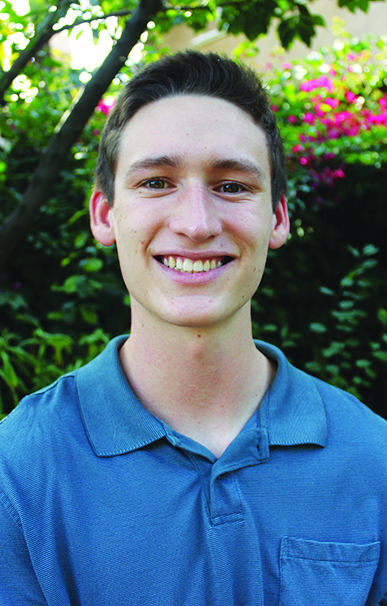 PROJECT
PROJECTPhysical and Biogeochemical Processes in the Subtropical South Pacific
ORGANIZATION / LOCATIONScripps Institution of Oceanography, University of California–San Diego
MENTOR(S)Sarah Gille, Professor, Scripps Institution of Oceanography; Lynne Talley, Professor, Scripps Institution of Oceanography; Channing Prend, Ph.D. candidate, Scripps Institution of Oceanography
SEE PRESENTATIONCertificate(s): Geological Engineering
I aimed to better understand what drives air-sea carbon dioxide exchange in the ocean south of the 30th parallel. I wanted to identify why and where this phenomenon’s seasonal cycle switches phases from being thermally to non-thermally driven. Air-sea carbon dioxide exchange is primarily driven by wind and disparities in carbon dioxide concentration between the ocean’s surface and the sea-level atmosphere, so I focused on measurements of the partial pressure of carbon dioxide (pCO2). I studied an area of the Pacific basin that aligns with the trajectories of 10 unmanned floats sufficiently far from the coasts of New Zealand and Chile. I confirmed previous observations that the subtropical zone (closer to the equator) had a seasonal pCO2 cycle strongly correlated with sea surface temperature (SST) and that the subantarctic zone had nearly no pCO2 cycle. These data suggest that this is where surface ocean pCO2 transitions from being thermally to non-thermally driven. I also found further significance of SST range and suggested that issues with this value are largely responsible for discrepancies in pCO2 seasonality between observations and models. This was my first taste of oceanography and it deepened my appreciation for earth science in the context of climate change.
-
Kennedy, Mae ’23
Ecology and Evolutionary Biology
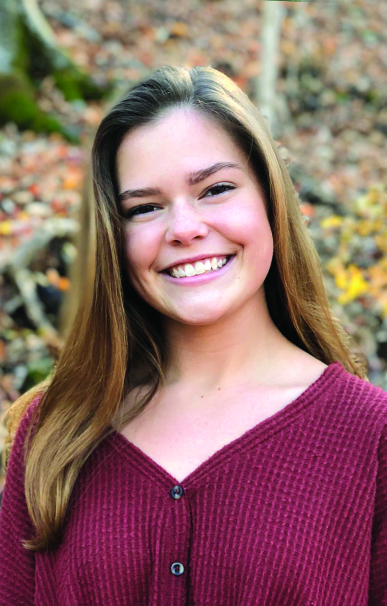 PROJECT
PROJECTInvestigating Trace-Gas Uptake in Chilean High Andes Soil Microbe Communities
ORGANIZATION / LOCATIONGeomicrobiology Group, Department of Geosciences, Princeton University
MENTOR(S)Tullis Onstott, Professor of Geosciences; Zachary Garvin, Ph.D. candidate, Geosciences
SEE PRESENTATIONCertificate(s): Neuroscience
I investigated carbon monoxide uptake in soil microbes located near the Polloquere Hot Spring in northern Chile. I examined soil samples from our site in Chile for the correlation between gas-uptake data and the presence of carbon monoxide dehydrogenase (CODH) enzymes, which are indicative of gas metabolisms. I used bioinformatics programs to search for CODH and compared the relative abundance of the major subgroups of CODH (i.e., Types I and II). Relating these results to gas-uptake data, I found that the functionally uncharacterized Type II-classified genes commonly represent a significant majority over Type I, despite the latter’s sequences being historically associated with soil carbon monoxide uptake. My findings were fruitful in the progression of this project and I gained excellent insight into the world of bioinformatics research. I also became more aware of the intriguing interconnectedness of our planet — how the smallest organisms can have significant impacts on the biosphere. My work considerably opened my sights to the extent of opportunities available to me as an environmental scientist.
-
Lam, Ethan ’23
Mechanical and Aerospace Engineering
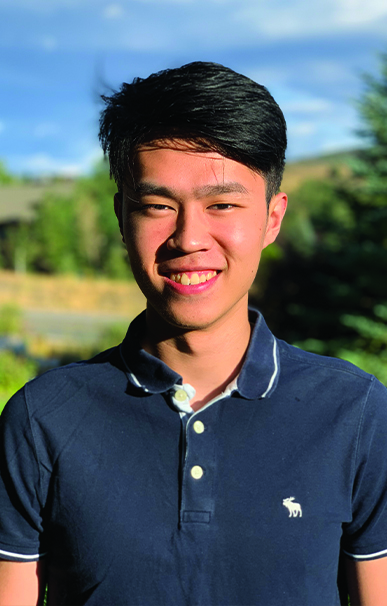 PROJECT
PROJECTRising Bubbles in Volcanic Chambers
ORGANIZATION / LOCATIONDeike Lab, Department of Mechanical and Aerospace Engineering, Princeton University
MENTOR(S)Luc Deike, Assistant Professor of Mechanical and Aerospace Engineering and the High Meadows Environmental Institute; Wouter Mostert, Postdoctoral Research Associate, Mechanical and Aerospace Engineering; Jiarong Wu, Ph.D. candidate, Mechanical and Aerospace Engineering
SEE PRESENTATIONI studied the applications of rising bubbles in volcanic chambers by modeling large viscous bubbles rising in a narrow tube. Physical factors such as viscosity, surface tension and bubble diameter affect both the rise velocity and the final bubble morphology. I performed simulations using Basilisk, an open-source software that solves partial differential equations using adaptive Cartesian meshes. I then produced videos of bubbles rising in different physical parameters and graphs from the simulation output, then used the data to compare how each physical factor affects both rise velocity and final bubble morphology. This experience gave me an introduction to independent research while sharpening my data analysis skills and coding knowledge. In addition, I learned more about fluid dynamics and a potential area of exploration in my major as a mechanical and aerospace engineering student. The experience and the connections I made during this internship will help me as I conduct further research during my undergraduate career.
-
Li, Lindsay ’23
Undeclared
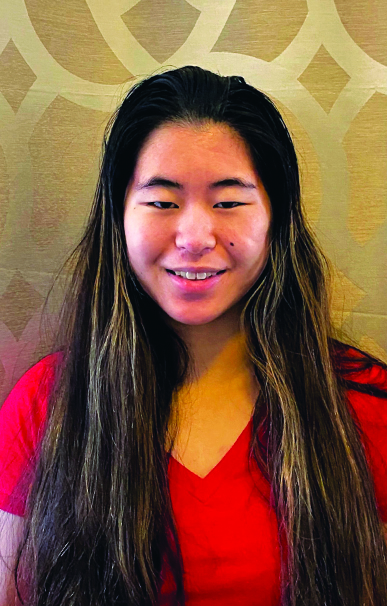 PROJECT
PROJECTReconstructing the History of Nutrient Conditions in the Mediterranean Sea at Times in the Past
ORGANIZATION / LOCATIONSigman Research Group, Department of Geosciences, Princeton University
MENTOR(S)Daniel Sigman, Dusenbury Professor of Geological and Geophysical Sciences, Professor of Geosciences; Ellen Ai, Ph.D. candidate, Geosciences
SEE PRESENTATIONCertificate(s): Environmental Studies
I investigated the context of the formation of sapropels — ocean sediment layers rich in organic material — in the Mediterranean Sea by working with foraminifera. One of the leading hypotheses for sapropel formation posits that escalated river runoff increased the availability of phosphorus, which spurred nitrogen fixation and thus productivity. The goal of my project was to identify and separate different foraminifera species into samples prepared for nitrogen-isotope analysis, the results of which can shed light on the potential of the river runoff hypothesis to predict an isotope ratio consistent with higher nitrogen fixation rates. I gained skills in identifying foraminifera and in microscopy, and learned much about the cycles, biogeochemical and otherwise, that govern the Mediterranean ecosystem. I thought the influence of astronomical cycles on ocean circulation was particularly interesting. I gained insight into lab work and research through this internship, and I’ve been inspired to continue to explore earth and environmental sciences.
-
Lin, Mandy ’23
Computer Science
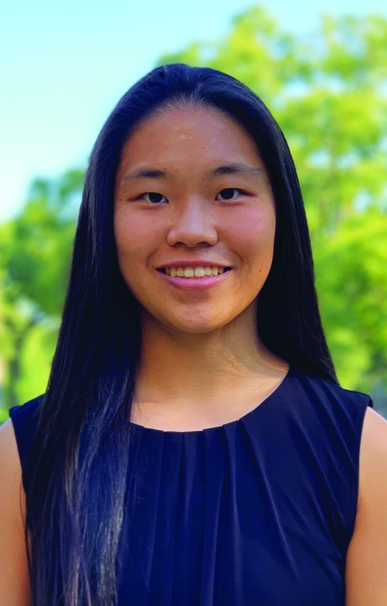 PROJECT
PROJECTCreating nirK and nosZ Microarrays to Study Denitrification
ORGANIZATION / LOCATIONWard Lab, Department of Geosciences, Princeton University
MENTOR(S)Bess Ward, William J. Sinclair Professor of Geosciences and the High Meadows Environmental Institute; Naomi Intrator, Ph.D. candidate, Geosciences
SEE PRESENTATIONI worked on building microarrays for nirK and nosZ — two genes in the denitrification pathway — in order to study denitrification and nitrogen loss in the ocean. Both genes are important because nitrous oxide, a potent greenhouse gas, is produced during the pathway. The microarrays will be used to determine the organisms in my mentor’s ocean samples that use these two genes. My project involved narrowing down all the nirK and nosZ gene sequences from the National Center for Biotechnology Information database and identifying the best 70 base-pair regions to be the probes on the microarray. I used various programs including CD-HIT, MAFFT, EMBOSS and RAxML-NG to make clusters, alignments, consensus sequences and phylogenetic trees to organize and analyze the genes. I also was able to learn and improve my programming skills by writing shell scripts, SLURM scripts and a MATLAB program. In addition, I used Excel to create a database of the sequences to aid in sequence analyses. Although this internship was not directly related to my career path, I learned valuable data analysis and coding skills, and I gained a better understanding of oceanographic research.
* This internship is connected to the HMEI Water and the Environment Grand Challenges project, “Fate of Nitrite Determines Nitrogen Removal in Coastal Waters.”
-
Liu, Grace ’23
Computer Science
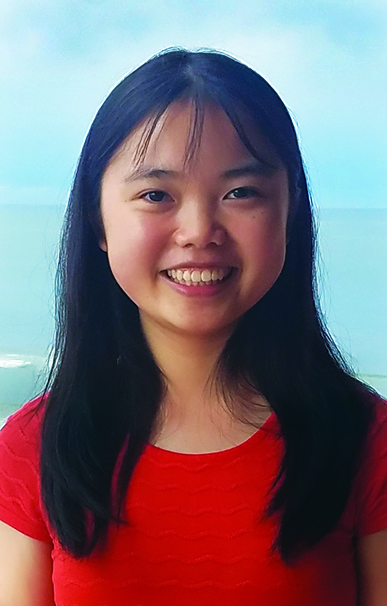 PROJECT
PROJECTBreaking the Ice: Trends in Intermittent Lake Freezing
ORGANIZATION / LOCATIONVecchi Research Group, Department of Geosciences, Princeton University
MENTOR(S)Gabriel Vecchi, Professor of Geosciences and the High Meadows Environmental Institute; Nadir Jeevanjee, Research Physical Scientist, Geophysical Fluid Dynamics Laboratory; Sirisha Kalidindi, Postdoctoral Research Associate, Geosciences
SEE PRESENTATIONI explored lake freezing as a local and tangible signal for climate change. We used a new approach to reconstruct freeze records of Princeton’s Lake Carnegie using newspaper archives. These records showed a decrease in the frequency and probability of ice skating over the past century. Subsequently, we extended our analysis to other intermittent ice-covered lakes in the National Snow and Ice Data Center’s Global Lake and River Ice Database and observed a similar trend of decreasing freeze events. Finally, we explored how ice intermittency might evolve globally in the future by building a model to classify intermittent ice-covered lakes and generate projections for various warming scenarios. From this experience, I learned how to process, analyze and visualize data, as well as how to use machine learning algorithms to classify data. More importantly, I learned how to ask questions, find answers and critique the results. My mentors fostered an environment of exploration and curiosity that was integral to the research process. As a result, this experience solidified my desire to pursue a career in academia, hopefully using computer science as a tool for environmental research.
-
Liu, Danxian ’23
Electrical Engineering
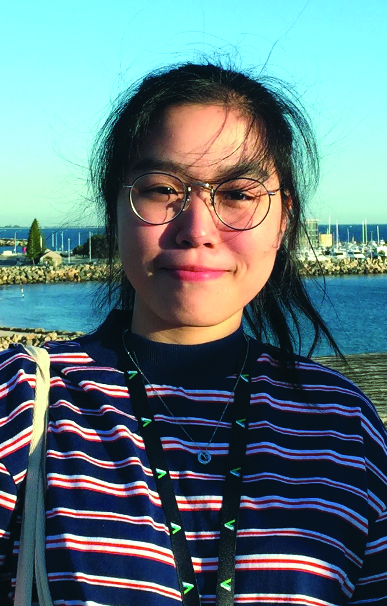 PROJECT
PROJECTReconstruction of Metagenome-Assembled Genomes from Ancient Siberian Permafrost Sediments
ORGANIZATION / LOCATIONGeomicrobiology Group, Department of Geosciences, Princeton University
MENTOR(S)Tullis Onstott, Professor of Geosciences; Renxing Liang, Postdoctoral Research Associate, Geosciences
SEE PRESENTATIONI analyzed three reconstructed metagenome-assembled genomes (MAGs) from marine permafrost sediments from the coast of the East Siberian Sea to study the microorganisms responsible for past and present methane production and consumption in ancient permafrost sediments. I discovered that one of the MAGs was closely related to methanogen affiliated with the microorganism Methanoregula, while the other two were related to anaerobic methanotrophs ANME-1 and ANME-2. All MAGs contained genes encoding methyl-coenzyme M reductase, the crucial enzyme responsible for the last step in methanogenesis and the first step in anaerobic methane oxidation. My work focused on reconstructing the metabolic pathways of the methanogenic and methanotrophic microorganisms contributing to the methane cycling present in the permafrost sediments. Through this experience, I gained familiarity with Linux, improved my understanding of phylogenetics and enhanced my ability to interpret and analyze data. This internship helped me better understand the relationship between microorganisms and methane cycling and encouraged me to further study phylogenetics.
-
Lynch, Margaret ’21
Geosciences
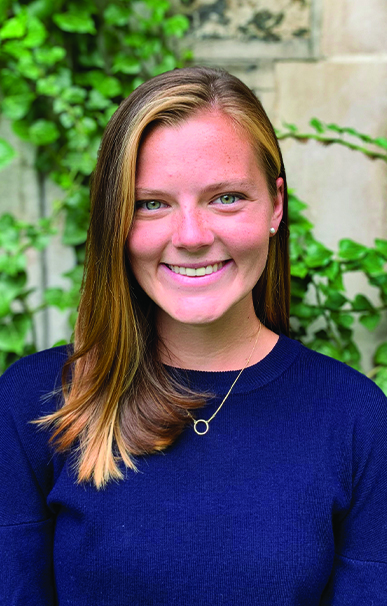 PROJECT
PROJECTConstraining Nutrient-Consumption Patterns in the Atlantic-Sector Antarctic Zone Using Foraminifera-bound Nitrogen-Isotope Analysis
ORGANIZATION / LOCATIONSigman Research Group, Department of Geosciences, Princeton University
MENTOR(S)Daniel Sigman, Dusenbury Professor of Geological and Geophysical Sciences, Professor of Geosciences; Matthew Lacerra, Ph.D. candidate, Geosciences
SEE PRESENTATIONMy research consisted of preparing samples of the plankton foraminifera from two Southern Ocean sediment cores for isotopic analysis. After using microscopy techniques to isolate different foraminifera species, oxygen and nitrogen isotopic analyses are performed on these samples. The resulting oxygen isotope records are used to produce age models for sediment cores, and the nitrogen records serve as proxies to reconstruct nutrient consumption, which provides insight into understanding the role of the Southern Ocean in the global carbon cycle over time. I valued the weekly meetings with my program mentors when we discussed new and old scientific articles in the field and the implications of those studies in our own research. Throughout this project, I learned more about stable isotope geochemistry, microscopy and the theoretical background surrounding paleoclimate research. This project strengthened my interests in geochemistry and climate studies, and I look forward to applying the skills and knowledge acquired during this internship in my studies and senior independent research.
-
Mimi, Yazan ’22
Computer Science
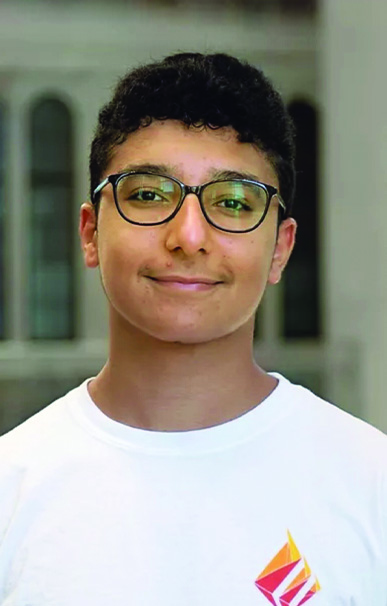 PROJECT
PROJECTWeatherPower 3.0: Solar and Wind Energy Forecaster
ORGANIZATION / LOCATIONClimate Central
MENTOR(S)Eric Larson, Senior Research Engineer, Andlinger Center for Energy and the Environment, Princeton University; Jennifer Brady, Manager of Analysis and Production, Climate Central
SEE PRESENTATIONI worked with the not-for-profit organization Climate Central creating reports related to climate science. I worked as a software engineering intern mainly developing Climate Central’s app called WeatherPower. WeatherPower is a wind and solar energy forecasting app that displays the amount of electricity generated from wind and solar energy sources at different locations across the United States. I used Python programming language and Django, a Python web framework, to upgrade WeatherPower from the 2.0 version to the 3.0 version by testing the accuracy of forecast analysis, adding new features and updating the backend database.
-
Myers, Eleanor ’23
Psychology
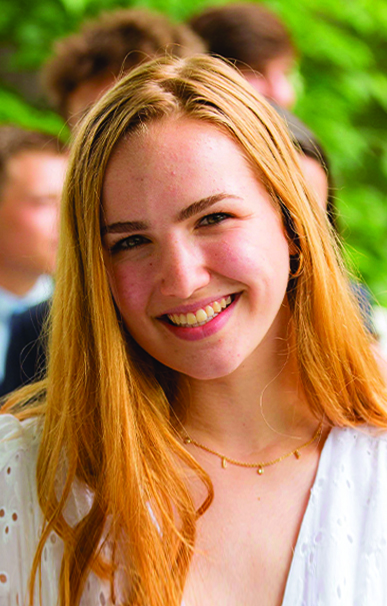 PROJECT
PROJECTBig Data Oceanography – Ocean Oxygenation
ORGANIZATION / LOCATIONResplandy Group, Department of Geosciences, Princeton University
MENTOR(S)Laure Resplandy, Assistant Professor of Geosciences and the High Meadows Environmental Institute
My internship focused on the exploration and charting of data collected from the multi-institutional Southern Ocean Carbon and Climate Observations and Modeling (SOCCOM) project, which seeks to understand the Southern Ocean’s role in climate change and biogeochemistry. My work focused on charting the trajectories of the automated floats equipped with biogeochemical sensors that SOCCOM uses to measure variables such as temperature, acidity and salinity. This project presented an opportunity to work directly with big data sets, which required that I learn new coding skills. I had little prior coding experience, so I spent significant time learning and sharpening those skills. I benefited greatly from being able to work with a visiting graduate student in the Resplandy Group, Mathieu Poupon. This experience furthered my interest in environmental studies, which I plan to pursue as a certificate.
-
Singh, Jaiteg ’22
Computer Science
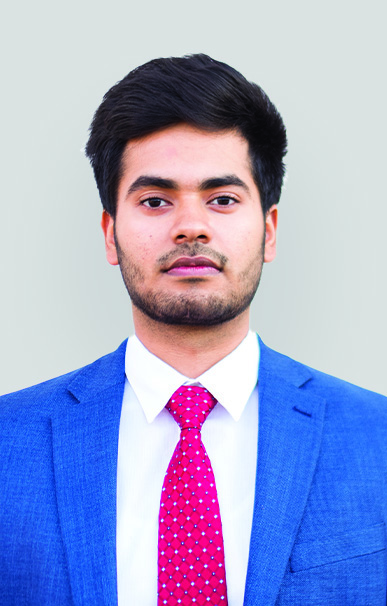 PROJECT
PROJECTWeatherPower 3.0: Solar and Wind Energy Forecaster
ORGANIZATION / LOCATIONClimate Central
MENTOR(S)Eric Larson, Senior Research Engineer, Andlinger Center for Energy and the Environment, Princeton University; Jennifer Brady, Manager of Analysis and Production, Climate Central; Leila Hadj-Chikh, Senior Software Developer, Program on Sea Level Rise, Climate Central
SEE PRESENTATIONI interned as a software engineer focused on improving WeatherPower, an app that forecasts daily wind and solar energy generated in various states, media markets, counties and congressional districts. It is used by meteorologists and journalists across the nation to aid their research and analysis. I added new features to WeatherPower, including rankings that enable the users to sort regions in ascending order based on the absolute power generated and power generated per capita. I also worked with a team of developers to implement automatic updates for the wind turbine and solar capacity databases. During my internship at Climate Central, I got the opportunity to work with the sea-level rise team and I developed mobile prototypes to work with various Climate Central products. Through this internship, I learned more about the potential of sustainable energy and familiarized myself with new technologies relevant to my major and career path.
-
Song, Annie ’21
Ecology and Evolutionary Biology
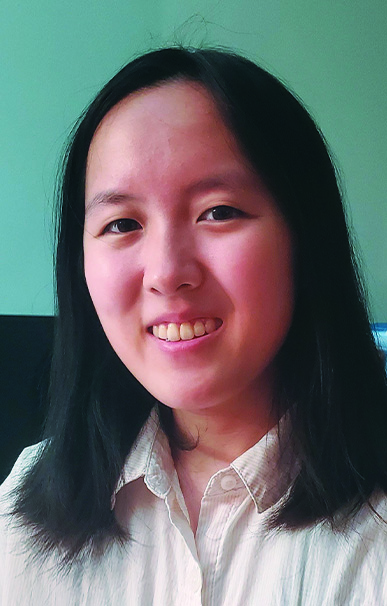 PROJECT
PROJECTRacial Disparities in Exposure to Air Pollution
ORGANIZATION / LOCATIONUniversity of Washington
MENTOR(S)Julian Marshall, John R. Kiely Endowed Professor, Civil and Environmental Engineering, University of Washington
Certificate(s): Computer Science, Global Health and Health Policy
I was matched with my project through the Pace Center for Civic Engagement’s new Recognizing Inequities and Standing for Equality (RISE) program, which encourages students to explore and advocate for racial justice broadly. My mentor’s research group works on issues of air pollution and energy consumption, specifically how different demographics are disproportionately exposed to forms of pollution and, thus, multiple health risks. That some groups are exposed to pollution and its effects more than others falls under environmental injustice. I worked on making the lab’s information and results more accessible for the average person. I worked on a data set of racial-ethnic disparities in pollution exposure across the continental United States from 1990-2010. I used Tableau Desktop to transform the raw data into maps and graphs that mimicked the figures published in research articles. Additionally, Tableau data visualizations are interactive, which makes them more appealing to people who are uninterested in reading papers or who would like to explore the data themselves. These figures can be published and shared online, which helps connect the science to the general public.
-
Stochel, Yael ’22
Computer Science
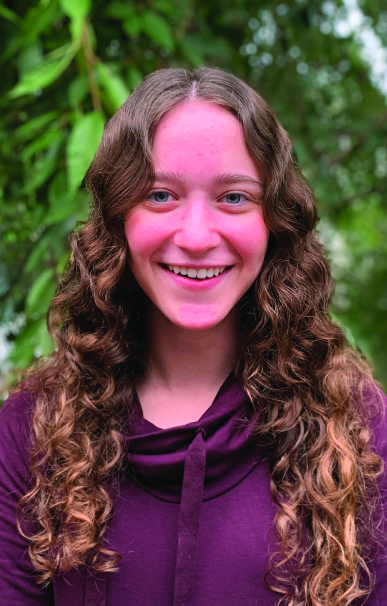 PROJECT
PROJECTOcean Deoxygenation and Warming Spell: An Uncertain Future for Habitat Range of Fish Species
ORGANIZATION / LOCATIONSarmiento Group, Program in Atmospheric and Oceanic Sciences, Princeton University
MENTOR(S)Jorge Sarmiento, George J. Magee Professor of Geoscience and Geological Engineering, Emeritus, Professor of Geosciences, Emeritus; Graeme MacGilchrist, Postdoctoral Research Associate, Atmospheric and Oceanic Sciences; Sarah Schlunegger, Postdoctoral Research Associate, Atmospheric and Oceanic Sciences
SEE PRESENTATIONCertificate(s): Environmental Studies
I projected habitat reductions for fish species using their metabolic index (MI), which is the ratio of an organism’s oxygen supply against its oxygen demand. Ocean warming reduces the concentration of oxygen while increasing the metabolic rates of marine organisms, resulting in higher oxygen demand but decreasing supply. I quantified habitat reduction in an ensemble of climate projections using the Geophysical Fluid Dynamics Laboratory Earth System Model. I focused on assessing the range of uncertainty in habitat reduction due to natural climate variability in the context of two biological unknowns: The exact sensitivity, or MI threshold, of each species, and the duration for which that species can survive below that threshold. I partitioned the projected habitat reduction into these uncertainties to quantify the primary factors confounding the projection of habitat compression through the end of the century. I found that the biological unknowns were the main source of uncertainty, suggesting that improved understanding of species distribution, behaviors and physiology is of critical importance. I acquired invaluable skills in data analysis and visualization, as well as knowledge about climate modeling and environmental processes. I look forward to continuing related work at Princeton and beyond.
-
Toure, Saran ’22
Politics
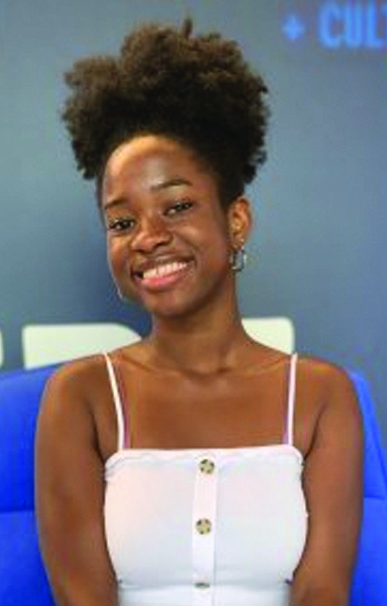 PROJECT
PROJECTRacial Disparities in Exposure to Air Pollution
ORGANIZATION / LOCATIONUniversity of Washington
MENTOR(S)Julian Marshall, John R. Kiely Endowed Professor, Civil and Environmental Engineering, University of Washington
Certificate(s): African American Studies, French Language and Culture, Statistics and Machine Learning
I had the opportunity through the Princeton Recognizing Inequities and Standing for Equality (RISE) program to explore the racial and ethnic disparities that exist in exposure to air pollution. I engaged with national data sets from the Center for Air, Climate and Energy Solutions to better understand the effects of air pollution disparities in Black and Latinx communities in the contiguous United States. I then worked on finding creative outreach strategies to make these findings more accessible and available to environmental justice groups. Through this internship, I gained a better understanding of matrix manipulation and other statistical methods. My internship partner and I learned even more about current initiatives and different organizations in the New Jersey and New York areas established to eradicate racial environmental disparities. My work provided me with the space to think deeply about environmental justice and how I can use data analysis to uncover other existing disparities.
-
Yan, Karena ’23
Operations Research and Financial Engineering
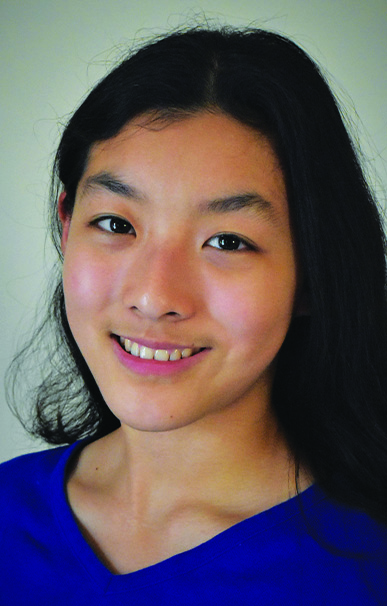 PROJECT
PROJECTHumid Heat Halves Summertime Labor Productivity for Between 10 and 40% of the Global Population by 2100
ORGANIZATION / LOCATIONSarmiento Group, Program in Atmospheric and Oceanic Sciences, Princeton University
MENTOR(S)Jorge Sarmiento, George J. Magee Professor of Geoscience and Geological Engineering, Emeritus, Professor of Geosciences, Emeritus; Graeme MacGilchrist, Postdoctoral Research Associate, Atmospheric and Oceanic Sciences; Sarah Schlunegger, Postdoctoral Research Associate, Atmospheric and Oceanic Sciences
SEE PRESENTATIONCertificate(s): Environmental Studies
I studied the effect of climate change on labor productivity. As the climate becomes hotter and more humid, workers will need to take longer breaks when performing manual labor to minimize the risk of heat stress. I analyzed output from two Earth system models to estimate when vulnerable regions may begin experiencing significant labor-capacity reductions due to extreme heat. Additionally, I looked at how natural climate variability and differences in model design contribute to uncertainty in predictions. My analysis showed that in the absence of resilience strategies, labor productivity may be reduced by half for as much as 40% of the global population by the end of the century. During my internship, I gained experience working with large data sets and was able to learn more about how high-resolution climate models operate. I found the socioeconomic implications of my project particularly interesting because developing nations are disproportionately threatened by extreme heat, yet frequently lack sufficient cooling access. Overall, my internship motivated me to learn more about global environmental inequality and further explore the applications of data science in studying climate change.
-
Yancopoulos, Demetra ’22
Civil and Environmental Engineering
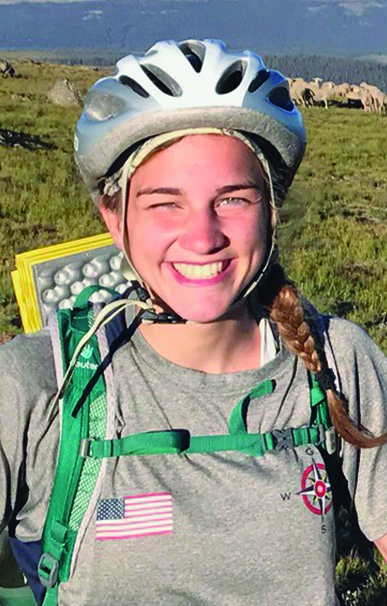 PROJECT
PROJECTSpray Generation and Bubbles Bursting
ORGANIZATION / LOCATIONDeike Lab, Department of Mechanical and Aerospace Engineering, Princeton University
MENTOR(S)Luc Deike, Assistant Professor of Mechanical and Aerospace Engineering and the High Meadows Environmental Institute; Baptiste Neel, Postdoctoral Research Associate, Mechanical and Aerospace Engineering
SEE PRESENTATIONCertificate(s): Sustainable Energy
I conducted research on collective bubble dynamics at the water’s surface. Bubble dynamics play an important part in a breadth of natural processes, but their role in the production of droplets at the ocean-atmosphere interface drew me to the lab. Water droplets containing compounds such as salt are ejected into the atmosphere by bursting bubbles where they serve as nuclei in the formation of clouds, influencing climate and weather on large scales. My research group hoped to improve understanding and predictions of climate and weather by isolating the parameters in these natural processes in an experimental setting. My research involved processing sequences of images of variously sized bubbles formed under different conditions. My daily work consisted of refining and running programs with Python software to detect and link bubbles across the sequences. I developed a deeper appreciation of coding in a research setting through my internship. The analysis using Python showed me how coding is not only a means of creation, but also a means of discovery. This internship motivated me to consider more courses in computing and data analysis so I can continue to utilize these powerful tools.
* This internship is connected to the HMEI Urban Grand Challenges project, “Extreme Wave Breaking in Coastal Urban Areas.”
-
Zecchin, Kaylee ’22
Mathematics
 PROJECT
PROJECTWeatherPower 3.0: Solar and Wind Energy Forecaster
ORGANIZATION / LOCATIONClimate Central
MENTOR(S)Eric Larson, Senior Research Engineer, Andlinger Center for Energy and the Environment, Princeton University; Jennifer Brady, Manager of Analysis and Production, Climate Central
SEE PRESENTATIONCertificate(s): Statistics and Machine Learning
My internship focused on updating — and improving the accuracy of — the database of wind-turbine and solar-panel installations in the United States that forms the basis of Climate Central’s online WeatherPower tool. WeatherPower educates meteorologists and journalists on clean energy-related forecasting, and my internship included remodeling the format and method by which Climate Central collects and utilizes wind and solar data. After updating the data and approach to processing the data, I contributed to rewriting major portions of the documentation for WeatherPower to reflect the changes made. I became fluent in Python, familiar with Django, and I furthered my research skills and ability to communicate complex topics. This internship was my first hands-on experience handling big data, programming and software development, and I have decided to incorporate large data and coding in my future opportunities. I utilized more coding and programming skills than mathematical skills. As a mathematics major, I would like to have an equal balance of computer skills and math in my future career as well.
- Food Systems, Water And Human Health
-
Campbell, Ci’Anee ’23
Anthropology
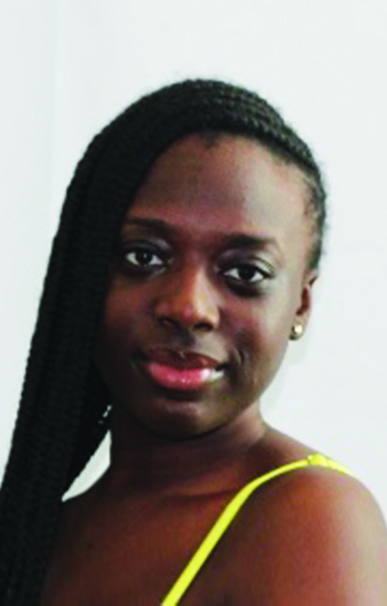 PROJECT
PROJECTWorld Wildlife Fund: Next California Project
ORGANIZATION / LOCATIONWorld Wildlife Fund (WWF)
MENTOR(S)Julia Kurnik, Director, Innovation Startups, WWF
SEE PRESENTATIONI interned with the World Wildlife Fund (WWF) on behalf of the Princeton Recognizing Inequities and Standing for Equality (RISE) program. I conducted qualitative research and found quantitative data to support the Next California Plan to shift food production from California to the mid-Mississippi River Delta region. I documented the sentiments and experiences of Black farmers in the region to better help the WWF design a project that would boost opportunities for historically underrepresented groups while also working to combat climate change. With the help of the AgLaunch Outreach Team, I facilitated two focus groups of urban growers, mass producers, council members and aqua-culturalists that participated in a discussion on food insecurity, the sentiments of racial oppression, environmental injustices and the influence of technology on production. I gained skills in data collection and analysis through my communication with the National Agricultural Statistics Service, as well as in my dialogue with the agriculture specialists who shared their stories with me. My experience with the Next California Plan has influenced my consideration of urban planning as a career path with the intention of vocalizing the experiences of marginal communities similar to my own.
-
Cao, Ashley ’23
Civil and Environmental Engineering
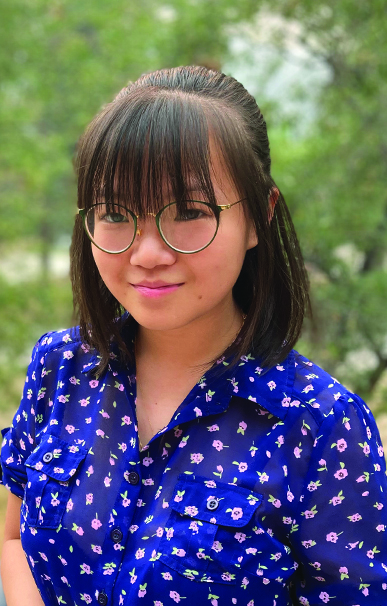 PROJECT
PROJECTGrowing in the Garden State: Understanding Factors That Impact Food Production
ORGANIZATION / LOCATIONRubenstein Group, Department of Ecology and Evolutionary Biology, Princeton University
MENTOR(S)Daniel Rubenstein, Class of 1877 Professor of Zoology, Professor of Ecology and Evolutionary Biology; Gina Talt, Sustainability Project Assistant, Office of Sustainability
SEE PRESENTATIONI studied how environmental factors and farming philosophy affect crop health and productivity at five local New Jersey farms. I focused on the farms’ chard and zucchini crops by compiling and analyzing data gathered from harvest and sales records, weekly questionnaires, on-the-ground sensors, crop measurements and insect traps. I was able to identify diseases or infestations afflicting the crops and see their causes and consequences on a holistic level. Ultimately, what was most interesting to me was being able to see in real time the many interconnected factors that influence plant health. For example, a no-till farming philosophy encourages root stimulation and, in turn, soil nutrient exchange, which allowed plants to grow more robustly. Throughout the growing season, I was able to compile and share two summary reports with each farm, detailing the nexus of chard and zucchini health, environmental factors, and individual farming practices. This work deepened my understanding of the scientific and social factors that influence food production and agriculture; I hope to apply what I learned to future endeavors in environmental engineering.
-
Chitluri, Sruti ’23
Operations Research and Financial Engineering
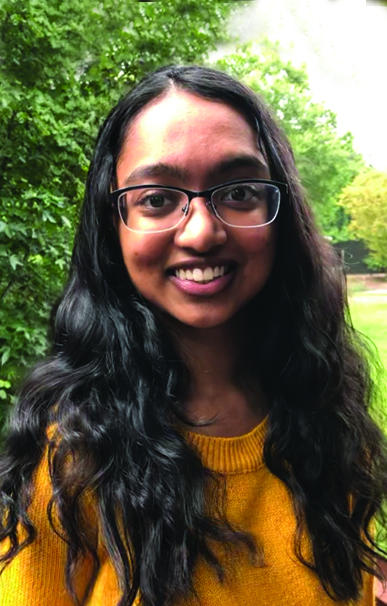 PROJECT
PROJECTGrowing in the Garden State: Understanding Factors That Impact Food Production
ORGANIZATION / LOCATIONRubenstein Group, Department of Ecology and Evolutionary Biology, Princeton University
MENTOR(S)Daniel Rubenstein, Class of 1877 Professor of Zoology, Professor of Ecology and Evolutionary Biology; Gina Talt, Sustainability Project Assistant, Office of Sustainability
SEE PRESENTATIONI studied five farms around Princeton, New Jersey, looking at how different farming styles impact such outcomes as crop health, greenhouse gas emissions, weed presence and the onset of disease. We collected data on precipitation, temperature, leaf wetness, soil fertility and animal pressure. We then used statistical software and Microsoft Excel to model the various factors that influence crop health. I focused on farmland owned by Princeton University that is dedicated to growing soybeans in 11 plots, with each plot receiving a different treatment. Conducting significance testing, I was able to compare and contrast each plot’s relative success. The conventional practices of growing genetically modified plants and using herbicide resulted in few diseases and weeds, but such practices also contributed to increased greenhouse gas emissions and poor soil fertility. Organic practices at other farms led to more biodiversity and less environmental impact. Those crops, however, often succumbed to fungal disease. Comparing the success of crops across farms allowed me to understand the complexities of the agricultural system and has encouraged me to pursue a career in climate science and research.
-
Duan, Yaxin ’23
Chemical and Biological Engineering
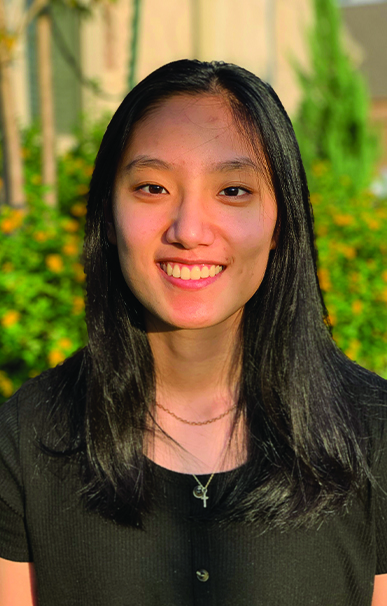 PROJECT
PROJECTGrowing in the Garden State: Understanding Factors That Impact Food Production
ORGANIZATION / LOCATIONRubenstein Group, Department of Ecology and Evolutionary Biology, Princeton University
MENTOR(S)Daniel Rubenstein, Class of 1877 Professor of Zoology, Professor of Ecology and Evolutionary Biology; Gina Talt, Sustainability Project Assistant, Office of Sustainability
SEE PRESENTATIONI worked on a group project that analyzed crop data from five farms in New Jersey to study how environmental factors and farming methods affect crop health and productivity. I monitored the growth and health of tomatoes specifically, and I found that disease was a major factor impacting productivity. I discovered that farmers could maintain productivity without spraying fungicide by investing in various farming practices such as planting disease-resistant companion crops or implementing wide-row spacing. These farming techniques affect not only plant health, but also profits and environmental health. For example, wide-row spacing slows the transmission of disease, but decreases the number of plants per acre and thus the profit per acre. By observing the potentially devastating effects of disease on crops, I gained a better appreciation for all the food I took for granted. From the various other tasks I performed, I acquired a greater awareness of how different farming practices can either sequester or release carbon, which will help me as I continue to seek out ways to help the environment.
-
Mancoridis, Viki ’23
Computer Science
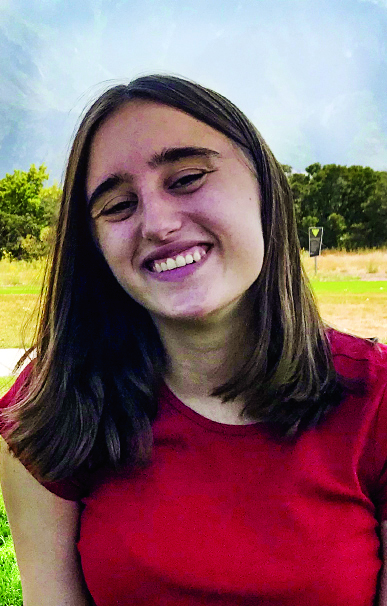 PROJECT
PROJECTDrivers of Variability in Exploited Marine Fish Populations
ORGANIZATION / LOCATIONSarmiento Group, Program in Atmospheric and Oceanic Sciences, Princeton University
MENTOR(S)Jorge Sarmiento, George J. Magee Professor of Geoscience and Geological Engineering, Emeritus, Professor of Geosciences, Emeritus; Fernando González Taboada, Associate Research Scholar, Atmospheric and Oceanic Sciences
SEE PRESENTATIONThe purpose of this project was to predict the survival rates of Atlantic cod through models that consider climate trends and market pressure. I parsed online databases and implemented various estimation techniques to compile data on the biological, geospatial, environmental and economic attributes of cod stocks. I fed relevant data into a hierarchical linear mixed model that calculated the fit of classic discrete population models to my data. I compared fits of two competing population models: One that considered the impact of sea surface temperatures on stock survival rates, and one that did not. Correlation rates were higher when climate trends were considered. Next, I modeled the economic impacts of cod price flexibility. I found that various cod-stock prices were inelastic, while others were elastic. This is critical information for fisheries’ managers, who must react to resource depletion responsibly. The most interesting part of my work was learning about oceanic sciences, which was entirely new to me. The project also gave me proficiency in using Python and Stan software for research purposes, and taught me how to manage a GitLab repository. In the future, I will keep an eye out for other computational biology opportunities!
-
Mishra, Maya ’22
Ecology and Evolutionary Biology
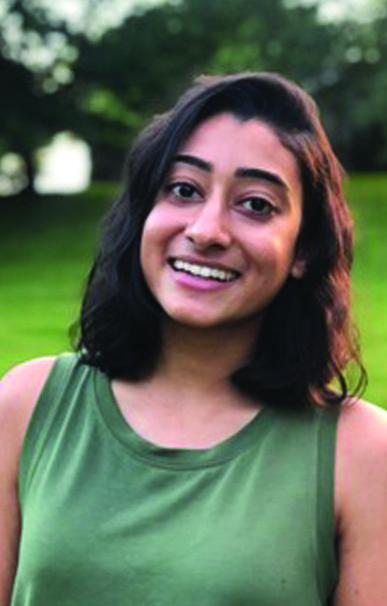 PROJECT
PROJECTTracking Hospital-Acquired Resistant Infections
ORGANIZATION / LOCATIONCenter for Disease Dynamics, Economics and Policy
MENTOR(S)Ramanan Laxminarayan, Senior Research Scholar, High Meadows Environmental Institute, Princeton University
SEE PRESENTATIONCertificate(s): Global Health and Health Policy, Planets and Life
I worked with the Center for Disease Dynamics, Economics and Policy to contribute to a global study on mapping hospital-acquired antibiotic-resistant infections. I primarily conducted a literature review of studies within several nations that had surveyed the proportion of hospital-acquired infections resistant to various antibiotics. In the last half of the internship, I used the data I collected to explore the techniques of mapping these infections in the software R. I had the privilege of undertaking this experience alongside an externship with the antibiotic resistance branch of the U.S. Centers for Disease Control and Prevention. Between the two experiences, I gained a greater understanding of how we combat antibiotic resistance. Epidemiologists and policy experts use the science and the data I was gathering to put together plans that help save lives and ensure that we stay ahead in the battle against bacterial evolution. My internship ensured that I will explore a topic within antimicrobial resistance for my independent work during the next two years. It’s an interdisciplinary field that brings together scientists, doctors, farmers and more, and I can’t wait to dive into it further.
-
Reguyal, Sabrina ’22
Electrical Engineering
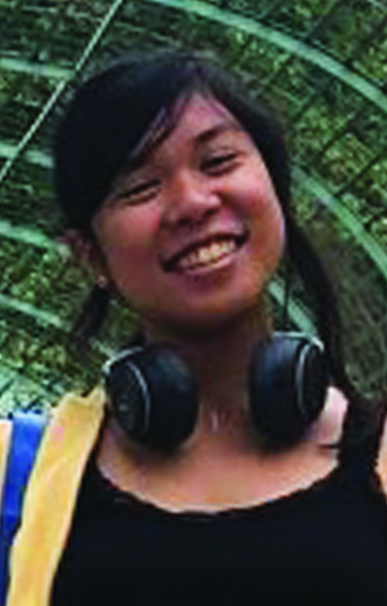 PROJECT
PROJECTImproving the Social, Economic and Ecological Outcomes of Aquaculture
ORGANIZATION / LOCATIONEnvironmental Defense Fund (EDF)
MENTOR(S)Rod Fujita, Lead Senior Scientist, Oceans Emerging Issues, EDF
Certificate(s): History and the Practice of Diplomacy
I spent the summer doing research on sustainable, regenerative aquaculture practices. The issue of what kinds of systems are being developed in the fish farming sector is a crucial topic for global food security as mariculture now makes up over half of marine production — a percentage that will only increase as time passes. I produced a white paper on different types of sustainable aquaculture systems, their geographical distribution, local impacts, and necessary areas for future work. Other related topics I studied included approaches to blue carbon, alternative aquaculture technologies, mariculture supply-chain issues and oceans-centered environmental justice issues. Besides the research experience, this internship gave me a different, unique understanding of pressing current topics such as climate change, globalization, international relations and environmental justice. I also got an inside look at the Environmental Defense Fund’s markets-based approach to environmental action, and I really enjoyed getting to know people that have dedicated themselves to defending the oceans and the environment.
-
Riggins, Collin ’24
Undeclared
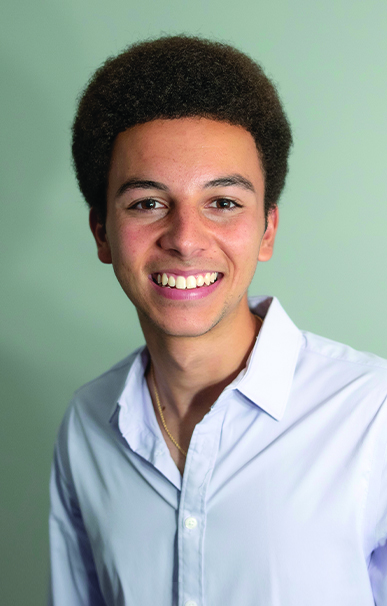 PROJECT
PROJECTWorld Wildlife Fund: Indoor Soilless Agriculture Project
ORGANIZATION / LOCATIONWorld Wildlife Fund (WWF)
MENTOR(S)Julia Kurnik, Director, Innovation Startups, WWF
SEE PRESENTATIONI worked on a project by the World Wildlife Fund (WWF) to establish urban agriculture in St. Louis by building coalitions in support of local food-accessibility efforts. Given that “food apartheid” most often impacts predominantly Black communities, my contribution centered around incorporating a racial justice component to WWF’s work. I spent time researching impacts of food insecurity on the Black community by analyzing data from the City of St. Louis Department of Health regarding health outcomes and racial demographics. I conducted video interviews online with St. Louis residents affected by food insecurity and various individuals working to promote food justice. I established these connections by reaching out to local professors, not-for-profit organizations, government officials and more. I compiled my findings into a final presentation for the WWF Markets Institute. I also created infographics that break down food insecurity in relation to racial justice that will be used by WWF in their future advocacy efforts. Through this experience, I met incredible people dedicated to a more equitable future and greatly expanded my outlook on what racial justice entails.
-
To, Hannah ’22
Economics
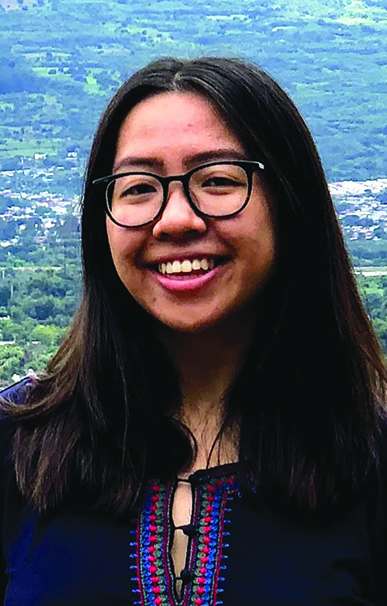 PROJECT
PROJECTTracking Hospital-Acquired Resistant Infections
ORGANIZATION / LOCATIONCenter for Disease Dynamics, Economics and Policy
MENTOR(S)Ramanan Laxminarayan, Senior Research Scholar, High Meadows Environmental Institute, Princeton University
SEE PRESENTATIONCertificate(s): Latin American Studies
I conducted a literature review to gather geospatial data on hospital-acquired infections that were caused by antimicrobial resistance. Specifically, we were looking at the resistance levels of different pathogens to various antibiotics. After collecting this data, we also had the opportunity to analyze it and create maps and graphs. The data we collected will be part of an ongoing survey my mentor is leading on global antimicrobial resistance. I was drawn to this internship because I’m interested in applying the data skills I have learned in my economics and statistic courses to a variety of subjects. I was particularly interested in learning about antimicrobial resistance because it is a crucial topic in the field of global health. Pursuing a certificate in Latin American Studies and taking many environmental science courses has honed my interest in environmental health, especially in developing regions. This position reaffirmed that I would like to conduct research that includes a large statistical component and possible mapping component. In the future, I hope to conduct research on either environmental health impacts or the effectiveness of environmental regulations.
- Innovation and a New Energy Future
-
Ahmad, Amina ’22
School of Public and International Affairs
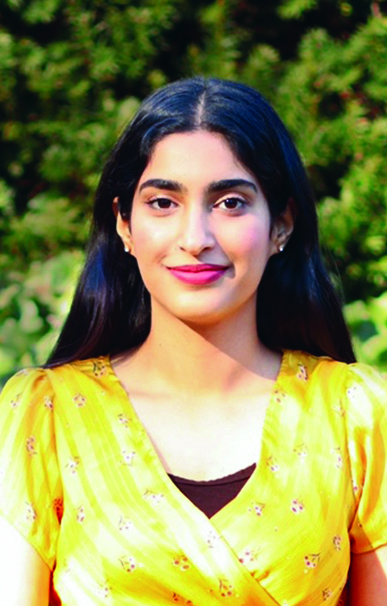 PROJECT
PROJECTNorm Dynamics and Rapid Decarbonization
ORGANIZATION / LOCATIONBehavioral Science for Policy Lab, Princeton University
MENTOR(S)Elke Weber, Gerhard R. Andlinger Professor in Energy and the Environment, Professor of Psychology and Public Affairs; Johanna Matt-Navarro, Research Lab Manager, Andlinger Center for Energy and the Environment; Jordana Composto, Ph.D. candidate, Psychology; Sara Constantino, Postdoctoral Research Associate, Princeton School of Public and International Affairs and the Program in Science, Technology and Environmental Policy, and Lecturer in the High Meadows Environmental Institute; Alicia Cooperman, Postdoctoral Research Associate, Princeton Institute for International and Regional Studies
I focused on the climate change and sustainability policies of several key financial institutions across time. I constructed extensive data sets by parsing the banks’ corporate social-responsibility reports; analyzing the role of activist groups in forming coalitions; reporting on trends in the banks’ fossil fuel investments; and closely following the associated public statements. I used PowerPoint and the statistical software R to create data visualizations of this information for a broader audience. I also worked on the “Distributed Solar Resources” project in India, a collaboration between Princeton and the India-based Council on Energy, Environment and Water. I explored ways to effectively implement community solar-power projects by studying the role of civil society organizations in urban, peri-urban and rural areas of India, analyzing the strengths and weaknesses of existing projects, and suggesting ways of collecting data virtually. In addition to developing my research skills, the internship gave me an appreciation for the complex mechanisms at play at an institutional level and our ability to leverage behavioral psychology to create more effective environmental policy. This experience has prompted me to dive deeper into the world of policy research, particularly pertaining to sustainability and the environment.
* This internship is connected to the HMEI Urban Grand Challenges project, “Norm Dynamics as Agents of Urban Social Change and Environmental Sustainability: Investigating Cross-Cultural Differences and Longevity of Intervention.”
-
Bauman, Daniel ’22
Mathematics
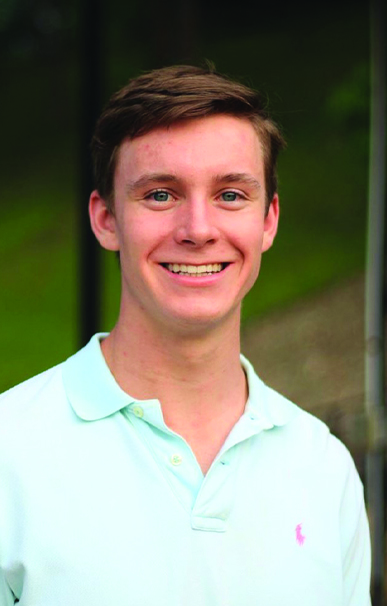 PROJECT
PROJECTStatistical Approaches to Methane Measurement
ORGANIZATION / LOCATIONBP
MENTOR(S)Kieran Bhatia, Climate Science Program Lead, BP
SEE PRESENTATIONCertificate(s): Applications of Computing
My project focused on evaluating how drones could be used to measure methane emissions at BP’s oil and gas facilities in order to help the company finalize its methane-measurement strategy. Working with data obtained during an initial trial, I focused on understanding measurement uncertainties and the major challenge they present. By learning from my initial attempts, I transitioned to providing data-driven evidence for why a large measurement campaign is necessary and the best ways it can be accomplished. Above all, I learned how complex and challenging this issue is, and I still feel like there is much to be explored and learned. Throughout my internship, I was able to greatly improve my ability to not only analyze data, but also clearly communicate my findings so that it can be used by others. This was an incredible opportunity that inspired me to explore careers and future studies related to the application of mathematics to environmental problems.
-
Burt, Hayden ’22
Mechanical and Aerospace Engineering
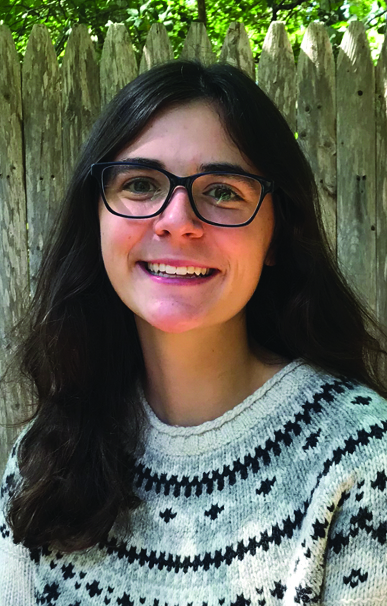 PROJECT
PROJECTEfficient Propulsion of a Robotic Tuna
ORGANIZATION / LOCATIONSmits Fluid Mechanics Lab, Department of Mechanical and Aerospace Engineering, Princeton University
MENTOR(S)Alexander Smits, Eugene Higgins Professor of Mechanical and Aerospace Engineering, Emeritus; Liuyang Ding, Postdoctoral Research Associate, Mechanical and Aerospace Engineering
SEE PRESENTATIONMy internship employed a robotic tuna to study the oscillatory propulsion that fish use to swim. Most underwater vehicles utilize a propeller design. While this design works well, live fish are significantly more efficient, which inspired this study. I used the imaging software Creo to model the robot’s fins over a range of sweep angles as the fish had previously only been tested with one rectangular and one lunate (crescent-shaped) fin. Additionally, I used computational fluid dynamics to model the robotic tuna fish as if it were swimming. I used the Ansys Fluent software to calculate drag forces and generate animations of the wake formation behind the oscillating tail. Through this internship, I became comfortable with two types of software related to my major and learned the fluid dynamics of oscillatory propulsion. My experiences allowed me to explore some of the applications of my academic studies and reinforced my interest in fluid dynamics.
-
Cross, Mathias ’22
Mechanical and Aerospace Engineering
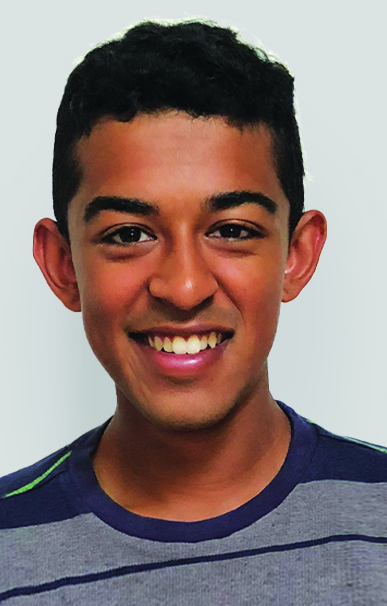 PROJECT
PROJECTOptimization of Vehicle Interior Structure for Drag Reduction
ORGANIZATION / LOCATIONSmits Fluid Mechanics Lab, Department of Mechanical and Aerospace Engineering, Princeton University
MENTOR(S)Alexander Smits, Eugene Higgins Professor of Mechanical and Aerospace Engineering, Emeritus; Liuyang Ding, Postdoctoral Research Associate, Mechanical and Aerospace Engineering
Certificate(s): Architecture and Engineering
I conducted research related to increasing the aerodynamics of cars. Reducing drag would increase fuel efficiency and reduce vehicle emissions. Our research focused on designing car models that allow airflow to pass through the interior of the vehicle. I first conducted a literature review of drag-reducing accessories or inventions to see which properties were most effective. Then, my project group and I began an iterative design process in which we used computer-aided design (CAD) software to model modified car interiors and structures. We then conducted wind-tunnel simulations to identify the drag properties of these models. I designed an effective model that used tubes to allow airflow to pass through the car and could reduce drag by 7-10%. My work during this internship improved my CAD skills, simulations knowledge and analysis skills. I now know that I want to continue to focus on sustainability-oriented projects during my career, and I am excited to continue practicing engineering toward that goal.
-
DiMare, Francesca ’23
Chemical and Biological Engineering
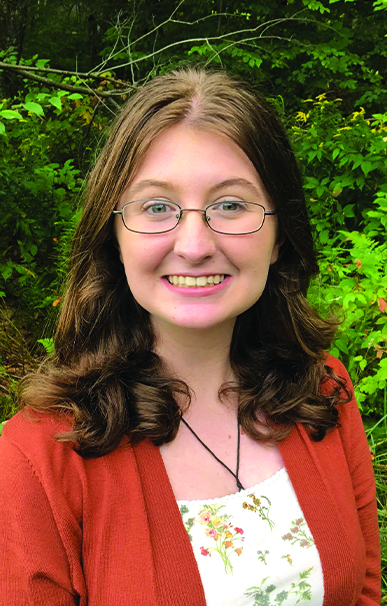 PROJECT
PROJECTCarbon Capture Materials: A Molecular Dynamics Approach to Investigating Calcium-Based Layered Double Hydroxides
ORGANIZATION / LOCATIONSustainable Cements Group, Department of Civil and Environmental Engineering and the Andlinger Center for Energy and the Environment, Princeton University
MENTOR(S)Claire White, Associate Professor of Civil and Environmental Engineering and the Andlinger Center for Energy and the Environment; Maria Curria, Ph.D. candidate, Civil and Environmental Engineering
SEE PRESENTATIONI researched calcium-based layered double hydroxides (LDHs) to investigate their applications for carbon capture. After an extensive literature review, I compiled my findings and determined there was a lack of research surrounding this topic. I then used force field molecular dynamics (FFMD) to simulate a calcium-aluminum-chlorine LDH with the goal of investigating how the structure is impacted by temperature. FFMD is valuable because if successfully applied and experimentally validated, additional LDHs can be tested virtually with less time and expense than in a lab. Using the Large-scale Atomic/Molecular Massively Parallel Simulator (LAMMPs) program, I was able to apply an energy-minimization process to the LDH structure that resulted in significant progress toward completing a simulation in which LDH is heated from 1 to 1,273 degrees Kelvin. I compiled my work on molecular dynamics into a second report. This internship allowed me to gain experience with molecular dynamics simulations and showed me what scientific research entails. It also furthered my interest in pursuing materials science and sustainable energy, whether as certificates or my major. Though I am undecided between pursuing chemical engineering or chemistry, these experiences will be highly valuable.
* This internship is connected to the HMEI Urban Grand Challenges project, “Fate of Heavy Metals in Valorization of Municipal Solid Waste Incineration Ash.”
-
Drossman, Joshua ’22
Operations Research and Financial Engineering
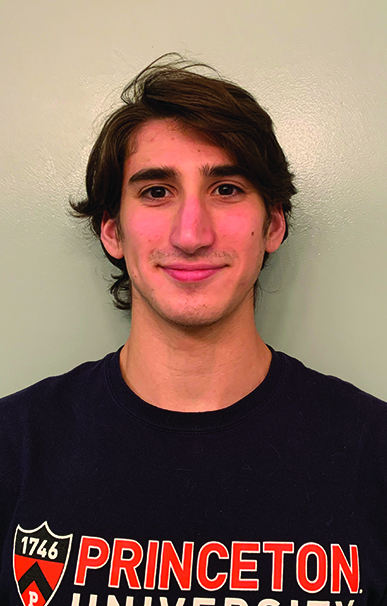 PROJECT
PROJECTNet-Zero America Project
ORGANIZATION / LOCATIONEnergy Systems Analysis Group, Andlinger Center for Energy and the Environment, Princeton University
MENTOR(S)Eric Larson, Senior Research Engineer, Andlinger Center for Energy and the Environment; Chuan Zhang, Postdoctoral Research Associate, Andlinger Center for Energy and the Environment
SEE PRESENTATIONI studied various pathways to achieving a carbon-neutral energy system in the United States across all sectors by 2050. We looked at how various inputs and constraints affect the kinds of technologies we would expect to see in use, with each set of inputs referred to as a “sensitivity.” I translated the constraints to numerical values we could run in our software. I also visualized many of these sensitivity results in the visualization software Tableau, which I then incorporated into the final presentation. I tackled other tasks such as calculating the carbon intensity of the main sensitivities, calculating and visualizing installed capacity and transmission costs state-by-state and nationally, visualizing the buildout of electric vehicles and charging stations, and researching web-design software. I gained a thorough understanding of Tableau and sharpened my skills in working remotely. I also have a much greater understanding of the scale and impact of the American energy system, and the importance of green technology in getting us to a carbon-neutral future. I would like to incorporate energy-systems research as a senior thesis topic, and possibly even pursue it in graduate school.
-
Feng, Joseph ’22
Mechanical Engineering
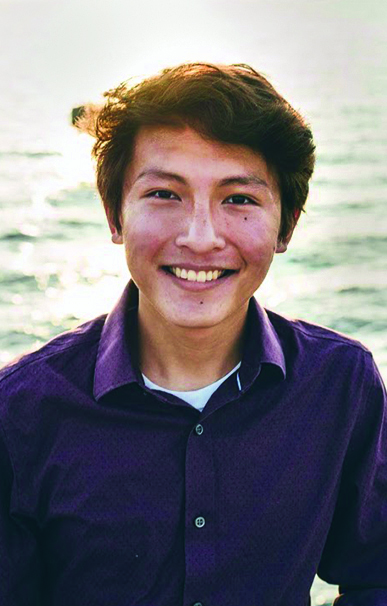 PROJECT
PROJECTOptimization of Vehicle Interior Structure for Drag Reduction
ORGANIZATION / LOCATIONSmits Fluid Mechanics Lab, Department of Mechanical and Aerospace Engineering, Princeton Universit
MENTOR(S)Alexander Smits, Eugene Higgins Professor of Mechanical and Aerospace Engineering, Emeritus; Liuyang Ding, Postdoctoral Research Associate, Mechanical and Aerospace Engineering
Certificate(s): Engineering Physics, Robotics and Intelligent Systems
I worked in the fluid dynamics lab where my primary focus was researching, designing and testing car designs in order to reduce drag. I first conducted a literature review on existing and theoretical design features, including passive structural changes to the car design and active pump systems. I then worked with the industry-standard fluid-dynamics software Fluent to simulate and test flows around different car designs. Since the Smits Lab is primarily an experimental fluids lab, my testing with Fluent gave the lab valuable experience in the use of computational fluids software. Not only was my team able to create an exterior vehicle design that resulted in promising drag reduction, I also learned a lot about the iterative design process that research labs use to create new and exciting technologies.
-
Finch, Benjamin ’23
Electrical Engineering
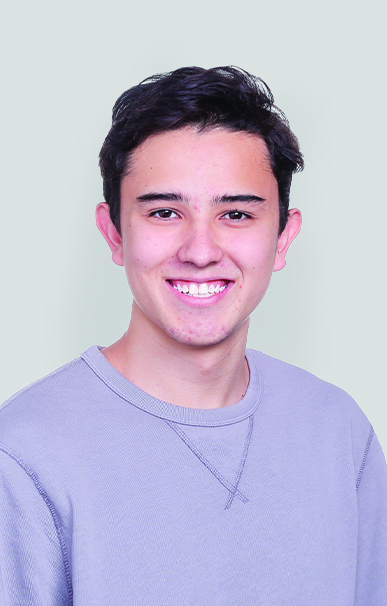 PROJECT
PROJECTNatural Capital Assessment in the Energy Sector
ORGANIZATION / LOCATIONBP
MENTOR(S)Sarah Wilford, HSE Manager, BP; Anne-Christine Aycaguer, Alaska Carbon Strategy Lead, BP
SEE PRESENTATIONI interned with BP working on Net Zero Teesside, a proposed carbon capture and storage project in North East England. I conducted a pilot natural capital assessment (NCA) — a monetary valuation of all the environmental impacts of a given development — for the project and contribued to an NCA methodology for evaluating new projects. I researched a number of available NCA methodologies and tested some of them on Net Zero Teesside. I produced a 40-page paper describing my findings and created a presentation to introduce NCA to the wider BP Global Concept Development community. I learned from my internship the importance of working as efficiently as possible and working in iterations when creating something like a new NCA methodology. As there are countless ways to conduct an NCA, it is very easy to get lost pursuing impractical methods or other dead ends. I averted much of that risk by creating the simplest working methodology first then looking for ways to improve it. Overall, this internship was a great experience that reaffirmed my interest in the transition to net-zero energy.
-
Govil, Bharat ’22
Computer Science
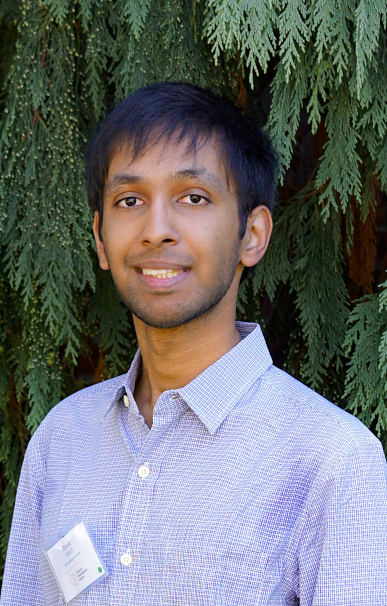 PROJECT
PROJECTData Visualization for GenX Model
ORGANIZATION / LOCATIONZERO Lab, Department of Mechanical and Aerospace Engineering, Princeton University
MENTOR(S)Jesse Jenkins, Assistant Professor of Mechanical and Aerospace Engineering and the Andlinger Center for Energy and the Environment; Neha Patankar, Postdoctoral Research Associate, Andlinger Center for Energy and the Environment
Certificate(s): Linguistics, Statistics and Machine Learning
I worked on creating data-analysis and visualization scripts for the GenX model system. GenX is essentially a linear optimization model that maximizes social welfare and minimizes costs relative to the capacity and generation of electricity power systems. My primary role was to write scripts that could format the data produced by GenX, along with scripts that could create plots from this formatted data. I also was involved in creating a few other scripts, such as analyzing candidate project sites for potential wind and solar farm locations. My work provided useful insights into introductory data analysis, statistics and optimization models related to environmental research and has encouraged me to further pursue these topics. My junior paper will involve data analysis concepts I learned over the course of this internship.
-
Jackson, Karl ’22
Chemistry
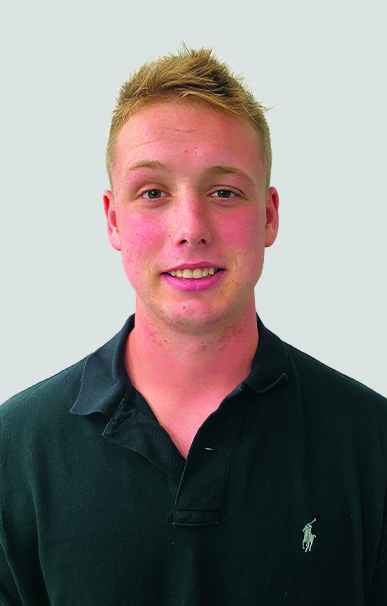 PROJECT
PROJECTCarbon Capture Materials
ORGANIZATION / LOCATIONSustainable Cements Group, Department of Civil and Environmental Engineering and the Andlinger Center for Energy and the Environment, Princeton University
MENTOR(S)Claire White, Associate Professor of Civil and Environmental Engineering and the Andlinger Center for Energy and the Environment; Maria Curria, Ph.D. candidate, Civil and Environmental Engineering
SEE PRESENTATIONCertificate(s): History and the Practice of Diplomacy
For my project, I first conducted an extensive literature search of various carbon-capture technologies. This involved an analysis of their costs, energy penalties, adsorption/absorption levels, cyclability and efficacy. I examined the use of amines, zeolites, activated carbon, calcium hydroxide and calcium oxide to draw carbon dioxide from post-combustion flue gases and ambient air, as well as the policies regarding their implementation. I then ran force-field molecular dynamics simulations on a specific layered double hydroxide, Ca2FeCl(OH)6 • 2H2O, at ascending temperatures up to 1,000 degrees Kelvin. Both projects gave me experience with Large-scale Atomic/Molecular Massively Parallel Simulator (LAMMPS) software and in effectively and efficiently analyzing scientific literature. I also gained important insights into the necessity for effective communication between the scientific and policymaking worlds. In order for there to be cost-effective and efficient climate policy, there must be a greater level of capital investment in carbon-capture technologies and an understanding of the options available to address anthropogenic climate change. This internship has made me strongly consider a career in government to help ensure the more effective implementation of energy and climate policy.
* This internship is connected to the HMEI Urban Grand Challenges project, “Fate of Heavy Metals in Valorization of Municipal Solid Waste Incineration Ash.”
-
Kaz, Alkin ’23
Electrical Engineering
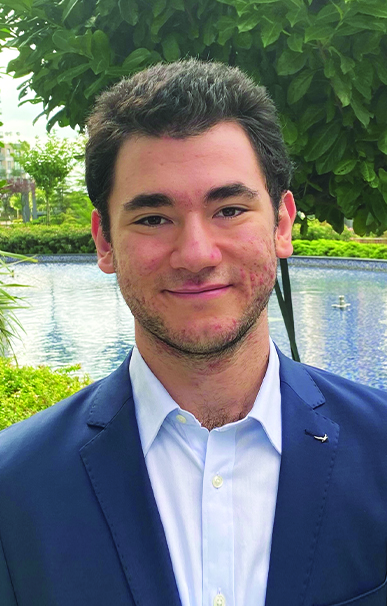 PROJECT
PROJECTClean, Small Fusion Reactors
ORGANIZATION / LOCATIONPrinceton Plasma Physics Laboratory
MENTOR(S)Samuel Cohen, Director, Program in Plasma Science and Technology, Princeton Plasma Physics Laboratory, Lecturer with the Rank of Professor in Astrophysical Sciences
SEE PRESENTATIONI interned with the Princeton Field Reversed Configuration (PFRC) fusion-energy research group where I focused on simulating the PFRC’s design. Fusion energy presents one of the most promising options for clean energy. Due to the complex nature of fusion’s physical parameters, however, many of the theoretical models are inapplicable and cannot provide critical technical insights. Highly sophisticated computational simulations are therefore crucial. I helped model the PFRC’s design with an industry-level open-source simulation-code suite, Vector Particle-In-Cell (VPIC), developed and maintained by scientists at Los Alamos National Laboratory. My main contribution was modeling the PFRC radio-frequency antennas, the shaping of which is essential for this type of fusion reactor. Close collaboration with my mentor helped in starting from scratch and coming up with a model of the fields inside the machine. Considering the intricacies of the fusion research as further learning opportunities, I was able to gain experience in both theoretical and computational plasma and fusion physics, C and C++ programming languages, Linux-operated supercomputing clusters, and the visualization software ParaView. I am looking forward to further experiences with the physics of the PFRC.
-
Kolenbrander, Josh ’23
Operations Research and Financial Engineering
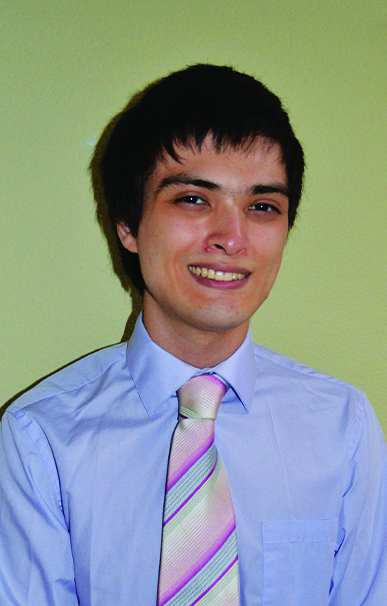 PROJECT
PROJECTAnalysis of Global Energy Infrastructure Trends
ORGANIZATION / LOCATIONLane Group, Princeton Institute for International and Regional Studies (PIIRS), Princeton University
MENTOR(S)Joe Lane, Associate Research Scholar and Lecturer, PIIRS
My internship focused on cleaning and summarizing large data sets of energy-system transition models. I analyzed the Shared Socioeconomic Pathways database and the Energy Technology Perspectives scenario, which describe energy-system transitions for a variety of climate and socioeconomic contexts. I extracted from these data carbon capture and storage usage information across various regions, scenarios, energy sectors and time ranges. I primarily used Python’s pandas, numPy, Matplotlib and seaborn libraries to tabulate, clean and visualize the data. An important part of my internship was creating code that is modular and flexible so that the user can extract many different types of visualizations about the data they want. Additionally, I contributed to a project that aims to cluster power plants in India by similar characteristics. My role was to create a code base in Python that extracts plant information from large spreadsheets and stores it in a SQLite database structure. Through this internship, I gained an appreciation for energy-sector modeling and a familiarity with relevant technologies for data analysis and visualization within data science, a career path I would like to explore further.
-
Li, Jarrad ’22
Chemical and Biological Engineering
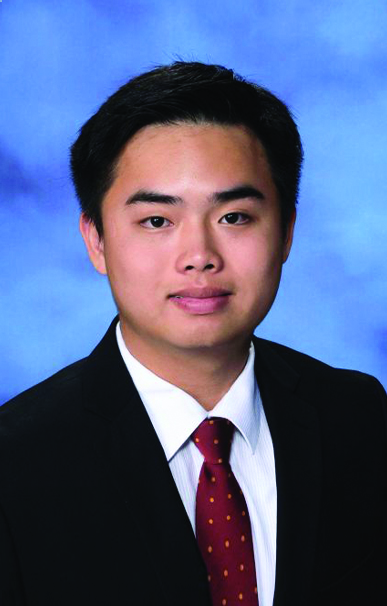 PROJECT
PROJECTEffect of Argon Addition on Plasma-Assisted Ammonia Synthesis
ORGANIZATION / LOCATIONKoel Group, Department of Chemical and Biological Engineering, Princeton University
MENTOR(S)Bruce Koel, Professor of Chemical and Biological Engineering; Sankaran Sundaresan, Norman John Sollenberger Professor in Engineering, Professor of Chemical and Biological Engineering
SEE PRESENTATIONPlasma-assisted catalysis of ammonia synthesis is a clean alternative to the industrial Haber-Bosch process — which uses high pressure for a chemical reaction — and it is able to operate at room temperature and pressure. I worked on creating a simulation of nitrogen-hydrogen-argon plasmas to determine the effects of argon addition on the kinetics of ammonia synthesis and intermediate species densities. I conducted extensive literature searches to tabulate and incorporate kinetic parameters of relevant reactions into ZDPlasKin software. Nitrogen-hydrogen plasma simulations were performed at varying electric-field strengths with and without argon addition to investigate the role of the Townsend number and argon addition in the overall reaction. I discovered that argon addition was responsible for a 15% increase in ammonia density. Argon addition also resulted in increases to all vibrationally excited and surface-adsorbed nitrogen species, which represent important intermediates in ammonia synthesis. Through my experience, I learned to code in Fortran, a useful tool that will assist my future studies in scientific computing. This internship sparked my interest in using simulations to model reactions and analyze data. I look forward to working with plasma-assisted reactions and catalysis in my independent work.
-
Manocha, Aneesha ’23
Electrical Engineering
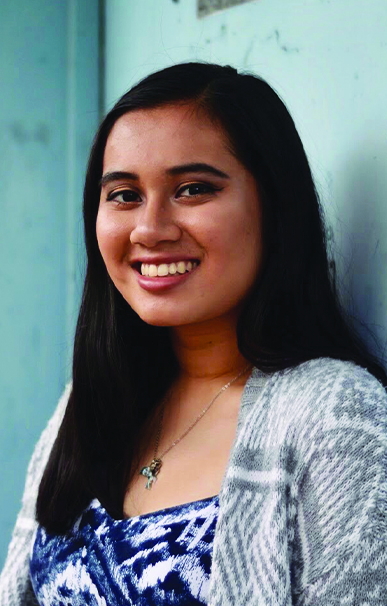 PROJECT
PROJECTPower System Modeling and Post-Processing Analysis
ORGANIZATION / LOCATIONZERO Lab, Department of Mechanical and Aerospace Engineering, Princeton University
MENTOR(S)Jesse Jenkins, Assistant Professor of Mechanical and Aerospace Engineering and the Andlinger Center for Energy and the Environment; Neha Patankar, Postdoctoral Research Associate, Andlinger Center for Energy and the Environment
Certificate(s): Environmental Studies, Sustainable Energy
I conducted research in the Zero-carbon Energy Systems Research and Optimization Laboratory (ZERO Lab) analyzing India’s power systems. The urgency of decarbonizing global energy systems to reach net-zero emissions means there is a need to characterize India’s energy systems. I focused on the northern India state of Rajasthan due to the potential of renewable-energy deployment. I spent my summer gathering and processing data on the Indian power sector and running various power-system analyses for Rajasthan using the GenX model. GenX is a highly configurable capacity-expansion model developed at the Massachusetts Institute of Technology and Princeton for analyzing future energy scenarios. I had the opportunity to learn about macro-energy system models and optimization methods, the necessary variables to consider in formulating energy and power systems, and how the power system in India differs from that in the United States. This internship was invaluable in influencing my future career plans. I will continue my research in this area through the academic year by taking more courses in energy systems, and hopefully attending graduate school.
-
Maskara, Anika ’23
Computer Science
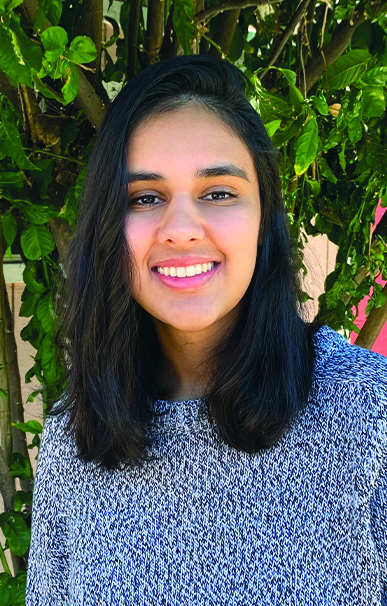 PROJECT
PROJECTDownscaling Energy-System Transitions
ORGANIZATION / LOCATIONEnergy Systems Analysis Group, Andlinger Center for Energy and the Environment, Princeton University
MENTOR(S)Eric Larson, Senior Research Engineer, Andlinger Center for Energy and the Environment; Chuan Zhang, Postdoctoral Research Associate, Andlinger Center for Energy and the Environment
I worked with the Zero-carbon Energy Systems Research and Optimization Laboratory (ZERO Lab) as part of the Rapid Switch project. I assisted on the PJM Deep Decarbonization project, which identifies and investigates realistic plans for decarbonizing the electricity supply of New Jersey and the PJM Interconnection — the largest electricity market region in the United States — by 2050. The goal of the project is to analyze the impact of clean-energy policies on energy costs and emissions in an effort to help guide policymakers and stakeholders in New Jersey and the region. ZERO Lab uses a power-system capacity expansion model for the analysis, relying on current energy and technology data to model possible future scenarios based on different policy and economic constraints. I assisted by writing R scripts that gathered information from publicly available sources, preprocessed data into formats accepted by the modeling software and wrote reusable data-visualization code to display modeling results in purposeful and creative ways. This experience has inspired me to pursue coursework related to environmental studies and continue exploring ways that data analysis and modeling can be used to enact social good.
-
Mays, Rebecca ’21
Chemical and Biological Engineering
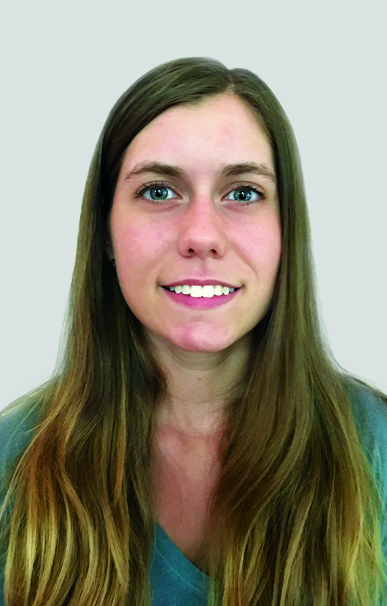 PROJECT
PROJECTNovel RF Plasma Heating for Low-Radioactivity Fusion Devices
ORGANIZATION / LOCATIONPrinceton Fusion Systems
MENTOR(S)Michael Paluszek, President, Princeton Satellite Systems; Stephanie Thomas, Vice President, Princeton Satellite Systems; Charles Swanson, Physicist, Princeton Satellite Systems
Certificate(s): Environmental Studies, Sustainable Energy
My project focused on updating the technology-to-market plan for Princeton Fusion Systems’ proposed Princeton Field Reversed Configuration (PFRC) fusion reactor in support of a grant they received from the U.S. Department of Energy. The PFRC has great potential as a cleaner, safer alternative to typical fission power. To determine the PFRC’s economic feasibility, I researched several different values that contribute to the predicted levelized cost of electricity, including operations, maintenance and fuel. I also analyzed the potential market for a PFRC as either a small-scale load-matching, or remote power, device. I learned about the economic analysis and regulations involved in bringing a new technology to market. I concluded my internship by using computational fluid dynamics software to begin an analysis of the heat-transfer properties within the PFRC, an analysis that has important applications to the reactor’s design and function. Overall, my summer work deepened my knowledge and experience in the economic and engineering principles that influence energy technologies and encouraged me to pursue a career in alternative energy.
-
Moolten, Shira ’21
Psychology
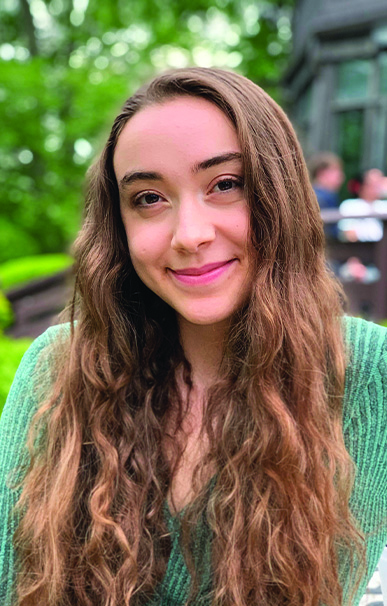 PROJECT
PROJECTNorm Dynamics and Rapid Decarbonization
ORGANIZATION / LOCATIONBehavioral Science for Policy Lab, Princeton University
MENTOR(S)Elke Weber, Gerhard R. Andlinger Professor in Energy and the Environment, Professor of Psychology and Public Affairs; Johanna Matt-Navarro, Research Lab Manager, Andlinger Center for Energy and the Environment; Jordana Composto, Ph.D. candidate, Psychology; Sara Constantino, Postdoctoral Research Associate, Princeton School of Public and International Affairs and the Program in Science, Technology and Environmental Policy, and Lecturer in the High Meadows Environmental Institute; Alicia Cooperman, Postdoctoral Research Associate, Princeton Institute for International and Regional Studies
My internship involved several projects, including two major ones. The first was a meta-analysis on environmental behaviors, for which we compiled research papers that assess the relationship between environmental behaviors and games played in laboratory experiments such as the Prisoner’s Dilemma game. The idea of this project was that people’s behavior during certain psychological games is indicative of how they behave in relation to the environment. The second major project was a multifaceted research project called Corporate Climates. For this, I looked into developing a survey of financial-sector employees regarding their feelings about the environmental ethics of their organizations and how they might be able to influence those ethics.
* This internship is connected to the HMEI Urban Grand Challenges project, “Norm Dynamics as Agents of Urban Social Change and Environmental Sustainability: Investigating Cross-Cultural Differences and Longevity of Intervention.”
-
Nagdee, Masi ’22
Civil and Environmental Engineering
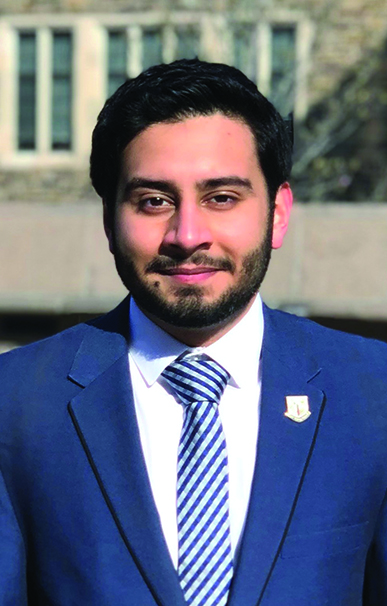 PROJECT
PROJECTUnderstanding Prospects for Indian Energy Infrastructure
ORGANIZATION / LOCATIONLane Group, Princeton Institute for International and Regional Studies (PIIRS), Princeton University
MENTOR(S)Joe Lane, Associate Research Scholar and Lecturer, Princeton Institute for International and Regional Studies
SEE PRESENTATIONCertificate(s): Statistics and Machine Learning, Technology and Society, Urban Studies
India’s energy economy will grow tremendously over the next few decades, and my project provided two distinct contributions to research on this issue. The first reviewed how much of the projected increases in energy use and carbon dioxide emissions related to cement, steel, fertilizer and chemicals production would likely be concentrated in developing economies. I combined a broad literature review of future scenarios with research into the opportunities for novel production technologies, which allowed me to estimate the extent to which emissions and energy use in these sectors could be limited. The second component contributed to a collaborative project developing models for energy-system change in the Indian state of Rajasthan. I analyzed and prepared data on the technological and spatial distribution of Rajasthan’s current electricity generation infrastructure. Through this, I helped design a system to compile and store equivalent information for India as a whole. The breadth of this work gave me a much greater appreciation of the wide range of stakeholders involved in bringing about environmental change. I will continue to research India’s energy sector through my junior independent work and apply statistical methods to improve electricity sector transition modeling.
-
Polson, Sarah ’23
Physics
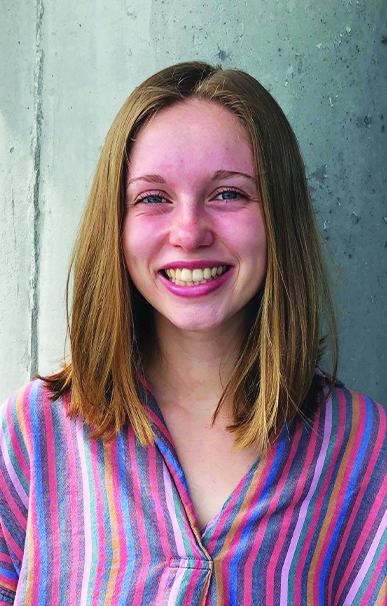 PROJECT
PROJECTClean, Small Fusion Reactors
ORGANIZATION / LOCATIONPrinceton Plasma Physics Laboratory
MENTOR(S)Samuel Cohen, Director, Program in Plasma Science and Technology, Princeton Plasma Physics Laboratory, Lecturer with the Rank of Professor in Astrophysical Sciences
SEE PRESENTATIONI interned in Professor Samuel Cohen’s group, the ultimate goal of which is to develop nuclear fusion as a clean and abundant energy source. The applications of this research are abundant, from producing small-scale, portable power-producing devices, to utilizing fusion as a source of propulsion in space travel. My research dealt predominantly with the rotating-magnetic field code, which simulates single-particle trajectories within a complex plasma (the hot, ionized gas that acts as a fuel for fusion reactions). In particular, I studied non-conservational occurrences within a plasma subjected to a magnetic mirror. Through this internship, I learned a lot about one of the fields at the forefront of my major, and had the opportunity to help work toward an amazing goal.
-
Reinhold, Emily ’21
School of Public and International Affairs
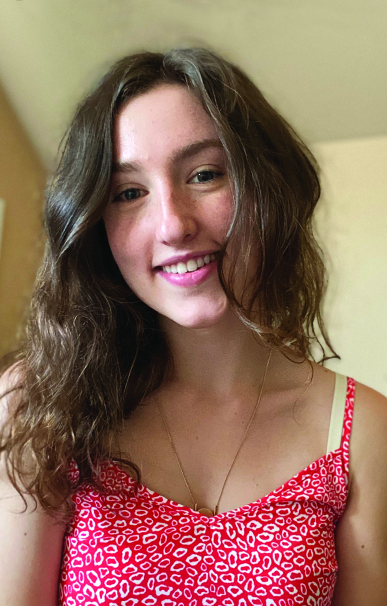 PROJECT
PROJECTNorm Dynamics and Rapid Decarbonization
ORGANIZATION / LOCATIONBehavioral Science for Policy Lab, Princeton University
MENTOR(S)Elke Weber, Gerhard R. Andlinger Professor in Energy and the Environment, Professor of Psychology and Public Affairs; Johanna Matt-Navarro, Research Lab Manager, Andlinger Center for Energy and the Environment; Jordana Composto, Ph.D. candidate, Psychology; Sara Constantino, Postdoctoral Research Associate, Princeton School of Public and International Affairs and the Program in Science, Technology and Environmental Policy, and Lecturer in the High Meadows Environmental Institute; Alicia Cooperman, Postdoctoral Research Associate, Princeton Institute for International and Regional Studies
Certificate(s): Environmental Studies
I contributed to several research projects. The first was a literature review on polycentric governance, a system in which policymakers at different scales overlap in making decisions and addressing environmental issues. I conducted a literature review on the circular economy — an innovative model for sustainable resource management — that inspired me to further study this model in relation to my interest in plastic waste. I also contributed to a literature review about the impacts of extreme events on people’s risk and time preferences, as well as a meta-analysis of what motivates people to share common-pool resources in a pro-environmental way. Lastly, I compiled New York state and city policies introduced in response to COVID-19 and to climate change, and built an organizational chart of the New York state government agencies involved in addressing environmental impacts. My internship was excitingly diverse in its projects, and it helped me put my own research and career interests in perspective. My interest in sustainable resource management fits into the circular economy field, and the research skills I gained have prepared me for contributing to this growing subject.
* This internship is connected to the HMEI Urban Grand Challenges project, “Norm Dynamics as Agents of Urban Social Change and Environmental Sustainability: Investigating Cross-Cultural Differences and Longevity of Intervention.”
-
Robang, Agnes ’22
Mechanical and Aerospace Engineering
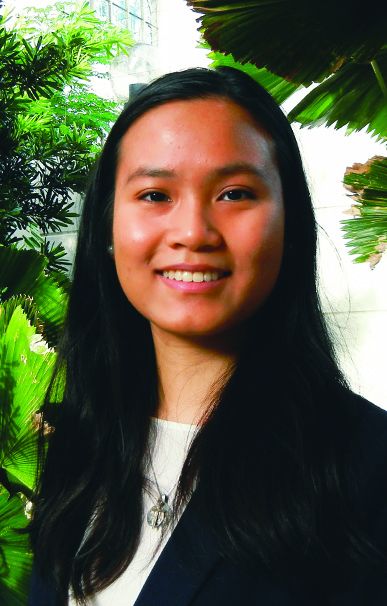 PROJECT
PROJECTEfficient Propulsion of a Robotic Tuna
ORGANIZATION / LOCATIONSmits Fluid Mechanics Lab, Department of Mechanical and Aerospace Engineering, Princeton University
MENTOR(S)Alexander Smits, Eugene Higgins Professor of Mechanical and Aerospace Engineering, Emeritus; Liuyang Ding, Postdoctoral Research Associate, Mechanical and Aerospace Engineering
SEE PRESENTATIONCertificate(s): Applied and Computational Mathematics, Robotics and Intelligent Systems
The team I worked on studied the mechanics of how tuna swim, which could contribute to the development of more efficient underwater vehicles. Tuna, which are one of the most efficient long-range swimmers in the ocean, move their tails in an oscillatory motion. Our study looked specifically at how the geometry of the tuna’s tail fin could potentially affect the thrust, drag, power and efficiency of the fish. We built upon our fluid-mechanics coursework by reading up on various marine animals and their locomotor methods. We then used computer-aided design to create tail fins and robotic assemblies with varying geometries for which we changed the sweep angle, but kept the planform area and aspect ratio constant. We analyzed our designs by simulating them in the software Ansys Fluent, a computational fluid dynamics tool. Although we were not able to simulate the entire parameter space during the summer, we picked up many new skills that will surely prove useful in our later engineering work. The experience provided kindling to my scientific curiosity and I am considering a future career in research.
-
Tao, JT ’22
Computer Science
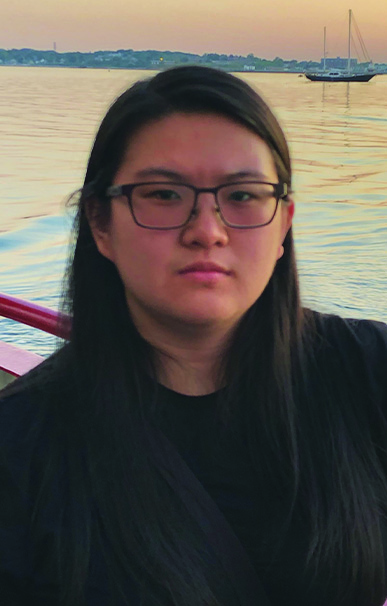 PROJECT
PROJECTEnvironmental Risk and Corporate Climate
ORGANIZATION / LOCATIONBehavioral Science for Policy Lab, Princeton University
MENTOR(S)Elke Weber, Gerhard R. Andlinger Professor in Energy and the Environment, Professor of Psychology and Public Affairs; Johanna Matt-Navarro, Research Lab Manager, Andlinger Center for Energy and the Environment
Certificate(s): American Studies, Statistics and Machine Learning
I worked on a project involving the relationship between natural disasters and perceived risk of environmental issues, and another regarding financial institutions and their environmental policies. For the first project, I looked at available spatial data in New York City, particularly land-use and the risk of different natural disasters. My research group focused on COVID-19 by looking at both how it affected different areas of New York City, as well as the number of community initiatives that exist in different neighborhoods. For the second project, I looked at third-party evaluations of financial institutions and how their environmental policies have been evaluated in the past.
* This internship is connected to the HMEI Urban Grand Challenges project, “Norm Dynamics as Agents of Urban Social Change and Environmental Sustainability: Investigating Cross-Cultural Differences and Longevity of Intervention.”
-
Wang, Ivy ’23
Civil and Environmental Engineering
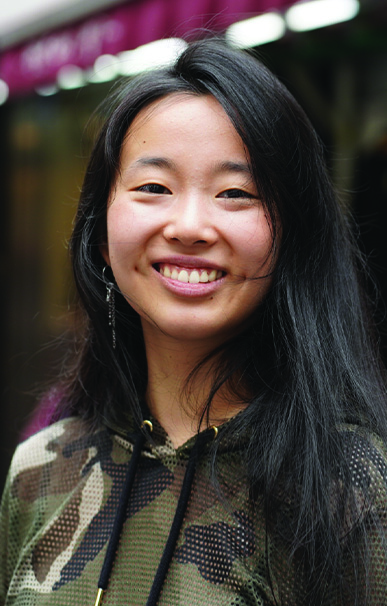 PROJECT
PROJECTDownscaling Energy-System Transitions
ORGANIZATION / LOCATIONEnergy Systems Analysis Group, Andlinger Center for Energy and the Environment, Princeton University
MENTOR(S)Eric Larson, Senior Research Engineer, Andlinger Center for Energy and the Environment; Erin Mayfield, Postdoctoral Research Associate, High Meadows Environmental Institute
I worked on analyses to inform decisions regarding the siting and associated impacts of energy-system infrastructure. I used geospatial analysis techniques to evaluate environmental, technical and safety criteria associated with siting existing biomass power plants in the United States. I also reviewed public filings for nuclear facilities to determine the safety criteria to be used in modeling. In addition, I created visualizations of how energy-systems transitions would impact employment for fossil fuel energy sectors. I also researched air pollutant emissions associated with different vehicle types. I found this work interesting because people talk a lot about the benefits of switching to renewable energy, but scarcely with concrete facts and figures or a scheduled plan. Through this project, I was able to look at the effects of different transition pathways modeled over time. I gained more experience with geospatial modeling software, programming in R, and data visualization. My summer internship reinforced my decision to study civil and environmental engineering at Princeton.
- Urban Systems and Planning for a Sustainable Future
-
Ajayi, Tobi ’22
Architecture
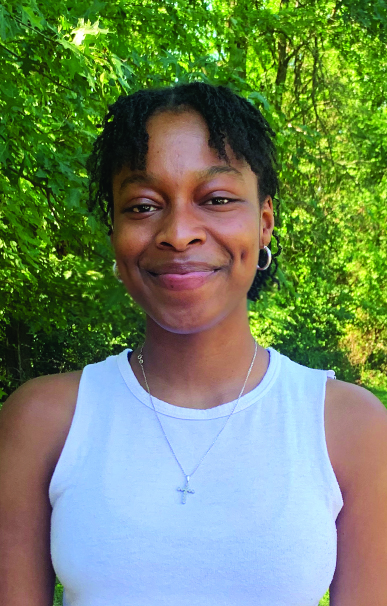 PROJECT
PROJECTManual of Physical Distancing: Space, Time and Cities in the Era of COVID-19
ORGANIZATION / LOCATIONLewis and Nordenson Group, School of Architecture, Princeton University
MENTOR(S)Paul Lewis, Professor of Architecture; Guy Nordenson, Professor of Architecture
SEE PRESENTATIONCertificate(s): Visual Arts
Our research project sought to create a published manual that illustrates the spatial consequences of COVID-19. We used existing research to determine what could be made visually legible through drawings. I worked on two sets of drawings. The first addressed how urban space has historically been reconfigured to address pandemics. For the second set, I worked on a proposal for a continuous biking network in New York City. My drawings provided close ups of key intersections in the city to visualize the cycling infrastructure that might be necessary. During the summer, I was able to refine my drawing and modeling skills and learn more about the translation of a concept into a confident proposal. My work confirmed my interest in modes of representation and research-driven art processes, which I hope to explore more in the future outside of urban design.
-
Brown, Sarah ’22
Geosciences
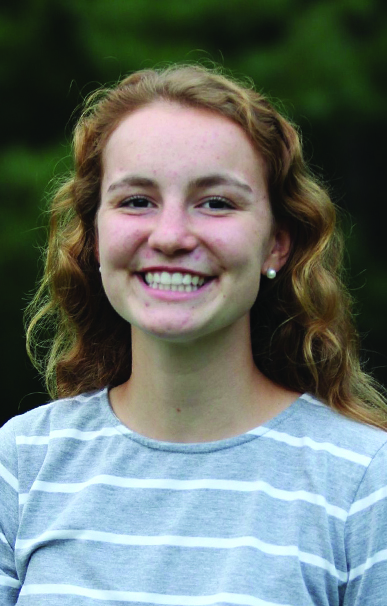 PROJECT
PROJECTCities: Happiness Factors Across Varying Scales and Provisional Changes in Response to COVID-19
ORGANIZATION / LOCATIONSustainable Urban Infrastructure Systems Lab, Department of Civil and Environmental Engineering, Princeton University
MENTOR(S)Anu Ramaswami, Sanjay Swani ’87 Professor of India Studies, Professor of Civil and Environmental Engineering and the High Meadows Environmental Institute; Dana Boyer, Research and Development Manager, High Meadows Environmental Institute; Kirti Das, Postdoctoral Research Associate, Civil and Environmental Engineering
Certificate(s): Cognitive Science, Environmental Studies
I worked on two projects related to creating more sustainable and resilient urban systems. The first focused on the factors that influence perceptions of well-being so that city planners can better identify their priorities. For my second project, I documented, analyzed and shared municipal responses to COVID-19 in order to help improve resiliency to future shocks. In this internship, I listened to and transcribed interviews with government officials, helped edit and test-run the subjective well-being survey, identified possible patterns in interview data, and analyzed data from the previous well-being survey. I learned how to design a survey using Qualtrics software, basic use of the Strata statistical software, and how to clean and manage data. Beyond these concrete skills, I greatly expanded my knowledge of city governance in reaction to shocks and of the complex and emerging study of subjective well-being. This work felt tangible, pressing and important. In a summer where COVID-19 disrupted most students’ plans, I was able to engage with and learn from challenges being experienced globally.
-
Dayoub, Diana ’21
School of Public and International Affairs
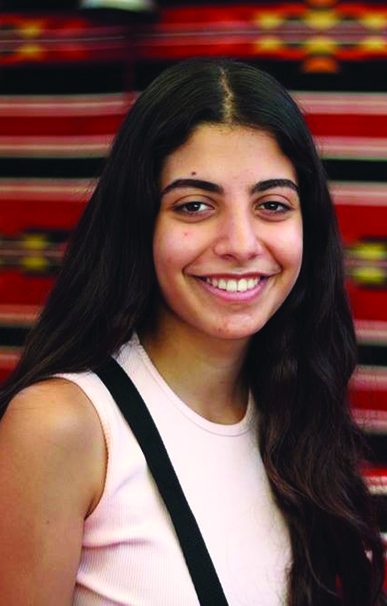 PROJECT
PROJECTCities, Sensors, Satellites and Sustainability: Mapping Cities and Urban Infrastructure Through Data Science
ORGANIZATION / LOCATIONSustainable Urban Infrastructure Systems Lab, Department of Civil and Environmental Engineering, Princeton University
MENTOR(S)Anu Ramaswami, Sanjay Swani ’87 Professor of India Studies, Professor of Civil and Environmental Engineering and the High Meadows Environmental Institute; Dana Boyer, Research and Development Manager, High Meadows Environmental Institute; Michael Milnar, Graduate Research Assistant, Sustainable Healthy Cities Network
SEE PRESENTATIONCertificate(s): Finance, Statistics and Machine Learning
I worked with another intern to locate certain types of infrastructure in satellite imagery using a machine learning task called object detection. A database of the locations of different types of infrastructure provides researchers and policymakers with a lot of insight about urban systems, such as sources of high greenhouse gas emissions, or how a given household’s distance from infrastructure services correlates with socioeconomic indicators. By the end of the summer, we were able to identify a methodology that will allow researchers in the lab to locate infrastructure in satellite imagery. This internship was my introduction to machine learning in general and object detection in particular. It taught me everything from technical deep-learning skills, to structuring a broad, demanding task and collaborating to tackle multifaceted and technically challenging problems. I will continue to work with Professor Ramaswami’s lab throughout the year and hopefully use the data I obtain for my thesis research.
-
Faciejew, Michael
History and Theory of Architecture
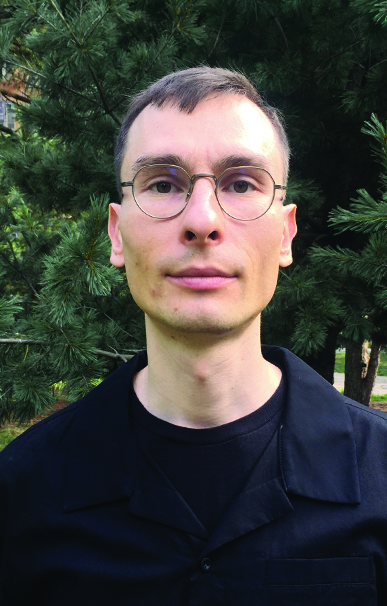 PROJECT
PROJECTConcrete Is 100 Years Old: A Historical and Technical Study
ORGANIZATION / LOCATIONMeggers Group, School of Architecture, Princeton University
MENTOR(S)Forrest Meggers, Assistant Professor of Architecture and the Andlinger Center for Energy and the Environment; Lucia Allais, Visiting Research Scholar, Architecture
This project investigated the relationship between narratives of anthropogenic climate change and the design of the built environment. Reinforced concrete — the life span of which is estimated to be 100 years — was studied from historical and technical perspectives to understand how the intersecting communities of concrete technology — materials scientists, engineers, architects, conservationists, etc. — employ knowledge about the built environment differently. As a historian of architecture, my work entailed bibliographic and historical research on reinforced concrete to help idenitfy why the awareness of concrete’s mortality has nonetheless had no significant impact on how the concrete industry navigates its environmental impact. Concrete accounts for 8% of global carbon emissions. I engaged an interdisciplinary framework to study the multiple agents and processes that shape concrete technology in order to contribute to the project’s ultimate goal of situating the historical relationship between materials, life span and environment in the design fields. This work will be further developed in an interdisciplinary conference hosted by the Princeton School of Architecture. My participation opened new avenues in my own research at the juncture of environmental and material histories.
-
Gliwa, Christopher ’21
Civil and Environmental Engineering
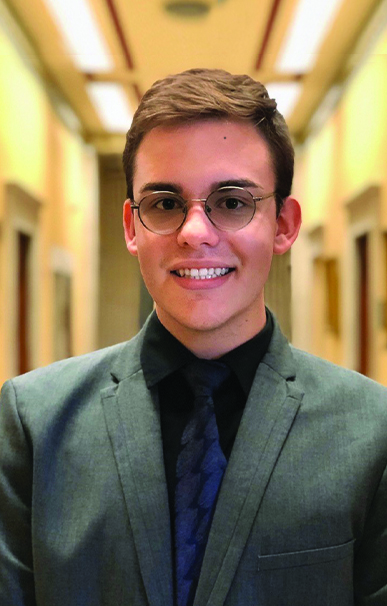 PROJECT
PROJECTAdvancing a Climate Park in the New Jersey Meadowlands
ORGANIZATION / LOCATIONRegional Plan Association (RPA)
MENTOR(S)Robert Freudenberg, Vice President, Energy and Environment, RPA
SEE PRESENTATIONCertificate(s): Environmental Studies
I worked under the Regional Plan Association’s Energy and Environment research team on an ambitious climate adaptability and resiliency project that would convert the Meadowlands of northern New Jersey into a climate park to help mitigate local climate change effects. My work focused on community engagement and outreach to citizens, lawmakers and organizations in the Meadowlands region in order to maximize public support and equity. My goal was to find the most effective way to communicate the issues of climate change and sea-level rise. I interviewed organizers of previously successful environmental projects in the Meadowlands and drafted community engagement guidelines using the insights gained from those interviews. What I found most interesting about my work was the disparity between relatively unresponsive lawmakers and highly responsive community members, and the difference in environmental commitments between those two parties. As a native of the Meadowlands region, this internship reaffirmed my personal and professional aspirations to combat the environmental inequities that exist in my community, a topic that also will be the focus of my senior independent research.
* This internship is connected to the HMEI Water and the Environment Grand Challenges project, “The Meadowlands: A National Climate Park.”
-
Guan, Victor ’21
Architecture
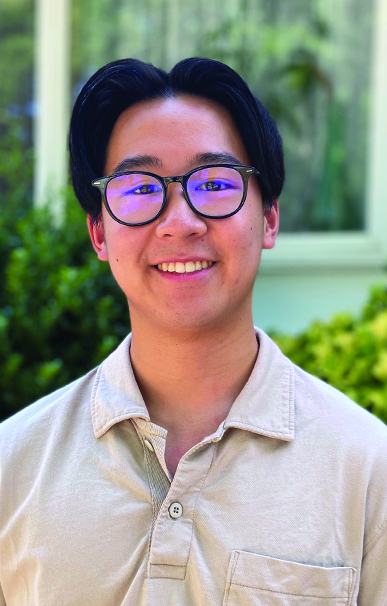 PROJECT
PROJECTManual of Physical Distancing: Strategies for Reconfiguring the City
ORGANIZATION / LOCATIONLewis and Nordenson Group, School of Architecture, Princeton University
MENTOR(S)Paul Lewis, Professor of Architecture; Guy Nordenson, Professor of Architecture
SEE PRESENTATIONCertificate(s): Visual Arts
My project focused on expanding the “Manual of Physical Distancing” publication project through a series of isometric drawings that better explain regulations and innovations developed as a result of COVID-19. Working alongside other undergraduate and graduate students, I first looked at responses to historical pandemics similar to the coronavirus, such as tuberculosis, and created drawings to inform readers of how past diseases were suppressed and treated. I then switched to a present case study of urban transformations in the New York City neighborhood of Jackson Heights, Queens. My partners and I drew a block from 82nd Street to illustrate variations of what the road could be, changing it from a space solely for cars to a public domain for pedestrians. Through isometric drawings, we showed the transition of the street lanes from being filled with parked automobiles to featuring outdoor seating and markets. This internship strengthened my technical drawing skills and opened my mind to reinterpreting urban systems that we take for granted, such as the configuration of the very streetscapes we walk on.
-
Kortum, Grace ’21
Geosciences
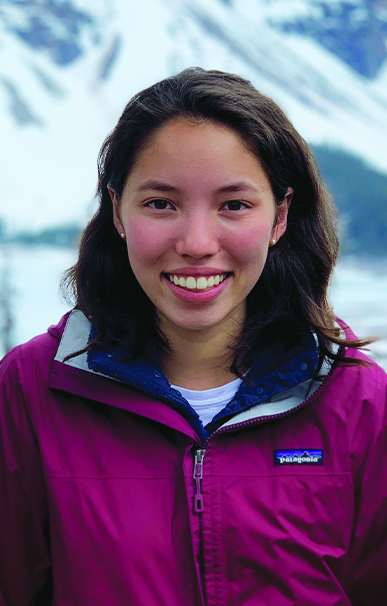 PROJECT
PROJECTCorporate Pollution Accountability in the Los Angeles Grocery Sector
ORGANIZATION / LOCATIONEnvironmental Defense Fund (EDF)
MENTOR(S)James Fine, Director, Energy Research and Senior Economist, Clean Energy, EDF
Certificate(s): Finance, Statistics and Machine Learning
I worked with the Corporate Pollution Accountability Project at the Environmental Defense Fund (EDF) to develop methods for attributing emissions from the movement of goods to specific companies. As a starting point, I worked on a case study to quantify emissions of particulate matter and nitrogen oxides from trucking related to the grocery sector in Los Angeles. These pollutants diminish local air quality and can cause community health problems. Although this project is still in progress, its results ultimately may have widespread applications such as supporting the advocacy efforts of local community groups, allowing consumers to make more informed decisions about where they shop, and helping companies assess the benefits of transitioning their truck fleets to electric vehicles. I valued the opportunity to analyze new topics, from vehicle electrification to grocery distribution, as well as the challenge of thinking about how to develop frameworks that assess and draw conclusions from limited data. In addition, it was great to learn more about the EDF as an organization and all of the important work that is being done there across different groups and departments. Thank you to the High Meadows Environmental Institute and EDF for this wonderful experience!
-
Lim, Tiffany ’21
Civil and Environmental Engineering
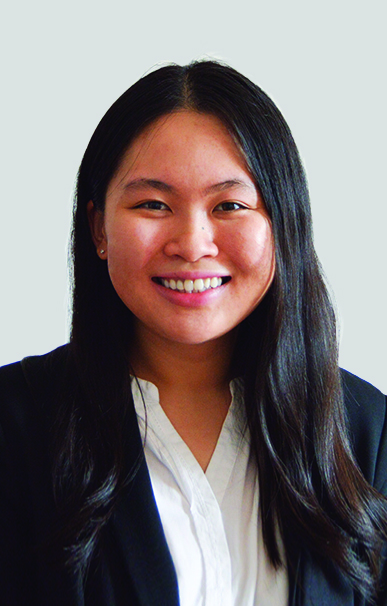 PROJECT
PROJECTManual of Physical Distancing: Space, Time and Cities in the Era of COVID-19
ORGANIZATION / LOCATIONLewis and Nordenson Group, School of Architecture, Princeton University
MENTOR(S)Paul Lewis, Professor of Architecture; Guy Nordenson, Professor of Architecture
SEE PRESENTATIONI worked on a publication called the “Manual of Physical Distancing,” which is a visual assessment of the spatial consequences and urban challenges of COVID-19. My role involved investigating historic pandemics, researching cycling initiatives amid COVID-19, and designing a proposal for connected bike paths in New York City’s Union Square. Building off the Regional Plan Association’s Five Borough Bikeway plan, I assessed existing infrastructure using Google Maps and ArcGIS. I then visualized potential rapid and permanent solutions for bike path improvements using Adobe Illustrator, InDesign and Rhino. Through this internship, I gained exposure to architectural practices by working with a team of architects and architecture students, developed my 2D and 3D visualization skills, and gained knowledge on urban design relative to crisis response. As someone who is interested in urban infrastructure, I hope to use the skills and perspectives I developed to inform my senior thesis and future projects.
-
Martin Dit Neuville, Hugues ’21
Operations Research and Financial Engineering
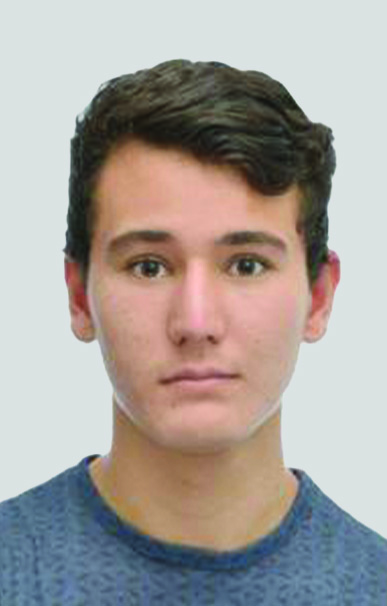 PROJECT
PROJECTEnvironmental Dilemmas of Cooperation in Heterogeneous Populations
ORGANIZATION / LOCATIONLevin Lab, Department of Ecology and Evolutionary Biology, Princeton University
MENTOR(S)Simon Levin, James S. McDonnell Distinguished University Professor in Ecology and Evolutionary Biology; Elke Weber, Gerhard R. Andlinger Professor in Energy and the Environment, Professor of Psychology and Public Affairs; Fernando Santos, Postdoctoral Research Fellow, Ecology and Evolutionary Biology; Vitor Vasconcelos, Postdoctoral Research Associate, Princeton Institute for International and Regional Studies
SEE PRESENTATIONCertificate(s): Environmental Studies
I helped peer-review a paper by my postdoctoral mentors about the effect that expectation biases have on cooperation in nonlinear public goods games. With the help of my fellow intern, Cathy Teng, I built a simulation model that verified the results of the paper’s theoretical model. I was then given the opportunity to expand the paper by delving into a topic that interests me. I explored the effect that network topologies have on mitigating or enhancing the effects that expectation biases have on cooperation. I was able to show that community networks outperformed other network structures in populations suffering from under-trust and pluralistic ignorance. When no bias is present in the population, interconnected communities perform better. However, when pluralistic ignorance or under-trust is introduced, then isolated communities with little interaction are better. This could indicate that in cases where cooperators are distrustful or skeptical about the behaviors of others — which is often the case in climate treaties — it may be more effective to construct multiple regional agreements instead of a singular treaty with a large membership, as has been the case for almost all major climate agreements.
-
McGrath, Lauren ’21
Anthropology
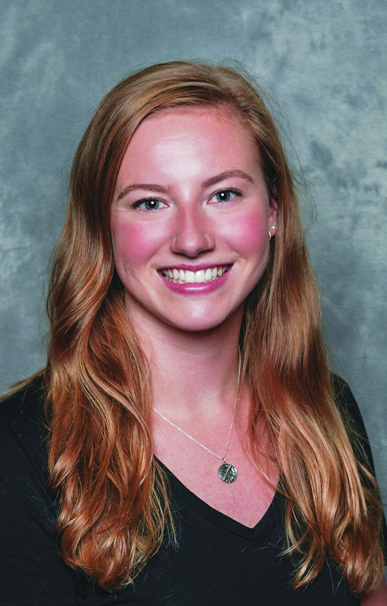 PROJECT
PROJECTVisualizing Urban Structural Violence: Ethnographic Investigation Into the Current Impact of Historical Lead Smelting in Philadelphia’s River Wards
ORGANIZATION / LOCATIONEthnographic Data Visualization Lab, Department of Anthropology, Princeton University
MENTOR(S)Jeffrey Himpele, Director, Ethnographic Data Visualization Lab, Department of Anthropology; Aaron Shkuda, Program Manager, Princeton-Mellon Initiative, Architecture
SEE PRESENTATIONI examined how structural violence degrades the health of Philadelphia residents, specifcially in the northeastern corridor along the Delaware River. Structural violence refers to the specific health challenges residents encounter, such as lead contamination. It also refers to whether these residents’ narratives are privileged or ignored in the collection and visualization of local health data. My goal was to determine how residents envision the conditions that account for structural violence. I employed remote interviews and archival research, as well as visualizations synthesized from data provided by the city of Philadelphia and the Visualizing Philadelphia project at Princeton. I found that urban residents prioritize health concerns to different extents — for instance, lead contamination has a large impact on some residents’ lives, while others regard it as passive. I plan to continue this work for my thesis by comparing visualizations of local data that differ by whose perspective and narrative is considered. Future research will investigate how different populations perceive health conditions caused by structural violence, which will provide greater context as to how to confront and mitigate those conditions.
-
Pathak, Sam ’23
Politics
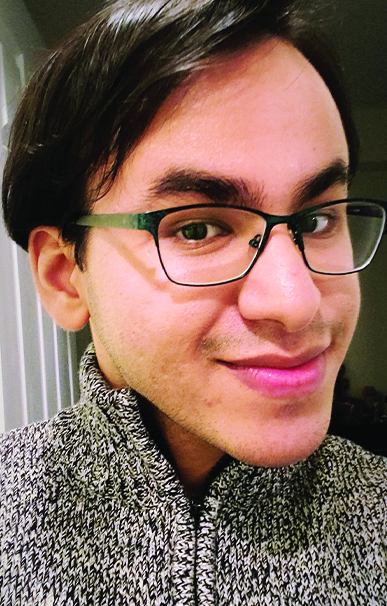 PROJECT
PROJECTUnderstanding Size, Scale and Diversity of Nonconventional Farms in Minnesota
ORGANIZATION / LOCATIONSustainable Urban Infrastructure Systems Lab, Department of Civil and Environmental Engineering, Princeton University
MENTOR(S)Anu Ramaswami, Sanjay Swani ’87 Professor of India Studies, Professor of Civil and Environmental Engineering and the High Meadows Environmental Institute; Dana Boyer, Research and Development Manager, High Meadows Environmental Institute; Graham Ambrose, Research Project Specialist, Civil and Environmental Engineering; Kirti Das, Postdoctoral Research Associate, Civil and Environmental Engineering
SEE PRESENTATIONCertificate(s): Journalism
I worked on a project to understand the size and diversity of small farms across the United States that sell directly to consumers through farmers’ markets and programs such as community supported agriculture. I focused on farms that were registered with Minnesota Grown, a program that connects consumers to local producers. I updated the information in the lab’s records of all the farms registered with Minnesota Grown, and obtained data of total acreage and produce acreage from about 50 farms in Minnesota using remote sensing applications. This internship was incredibly productive and fruitful, despite the challenges of working remotely. I learned valuable data collection, management and conversion skills, and a lot about parcel boundary and geospatial data and analytical tools such as QGIS and ArcGIS. Furthermore, the work that I did opened my eyes to the potency and scope of research that can be carried out using geospatial data, and I look forward to continuing and building on my work next year as well.
-
Rodrigues, Isabel ’23
Undeclared
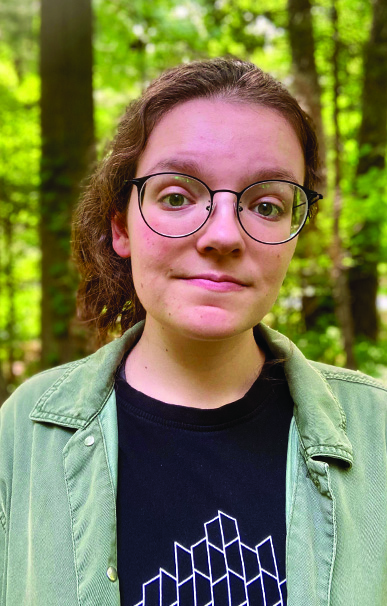 PROJECT
PROJECTMitigating Acid Attack in Sustainable Cements
ORGANIZATION / LOCATIONSustainable Cements Group, Department of Civil and Environmental Engineering and the Andlinger Center for Energy and the Environment, Princeton University
MENTOR(S)Claire White, Associate Professor of Civil and Environmental Engineering and the Andlinger Center for Energy and the Environment; Christine Pu, Ph.D. candidate, Civil and Environmental Engineering
SEE PRESENTATIONCertificate(s): Statistics and Machine Learning
I worked on two projects studying alkali-activated metakaolin cement, which is a sustainable alternative to conventional Portland cement. The first was part of a life-cycle assessment quantifying carbon dioxide emissions from Portland cement and alkali-activated metakaolin cement. I calculated transportation-related emissions by verifying mine/plant locations for the components of both cements by tracing their registration in various government databases. I also documented relevant greenhouse gas emission databases. The second project involved analyzing infrared spectroscopy data procured from metakaolin cement samples. We traced the development of the cement using relative peak intensities, which indicate the presence of metakaolin and an aluminosilicate gel. After combing through the data by hand, I shifted my focus to developing a Python application that would run the procedure automatically and implemented an automatic baseline-correction to improve consistency between files. The general-purpose application I created can now be used by anyone in the lab. Both projects inspired me to continue studying data science, and working with the Sustainable Cements Group showed me how exciting and fun the lab is – even while remote!
* This internship is connected to the HMEI Urban Grand Challenges project, “Fate of Heavy Metals in Valorization of Municipal Solid Waste Incineration Ash.”
-
Roth, Clara ’21
Architecture
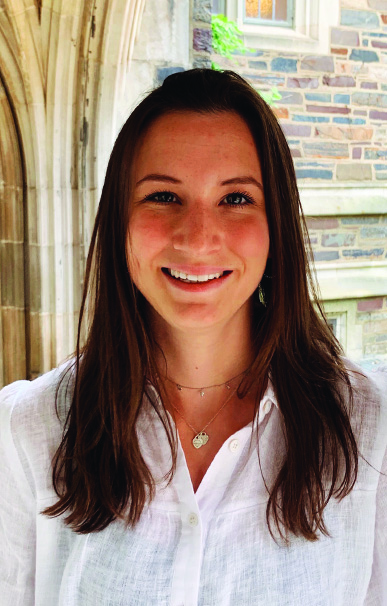 PROJECT
PROJECTManual of Physical Distancing: Space, Time and Cities in the Era of COVID-19
ORGANIZATION / LOCATIONLewis and Nordenson Group, School of Architecture, Princeton University
MENTOR(S)Paul Lewis, Professor of Architecture; Guy Nordenson, Professor of Architecture
SEE PRESENTATIONCertificate(s): Urban Studies
My internship addressed the challenge of implementing physical distancing in urban settings during the COVID-19 pandemic. My research group used New York City as a case study for recalibrating the city to better negotiate the incompatibility between urban density and safeguarding public health in response to a communicable disease. Our goal was to propose new strategies for restructuring the city that will mitigate the spread of COVID-19 while maintaining the city’s diversity and vibrancy. My research focused on the transformation of streetscapes primarily occupied by cars into pedestrian spaces. I analyzed various street typologies and created a number of drawings proposing temporary and permanent transformations. Some of the programs I proposed included event spaces, marketplaces, restaurant streets, playgrounds and recreational zones. I gained familiarity with methods of urban planning and design and had the opportunity to combine my academic interests with an extremely current and important issue. Given my interest in sustainability, my favorite part of the internship was working toward a more ecologically viable city.
-
Spruill, Jaylin ’22
East Asian Studies
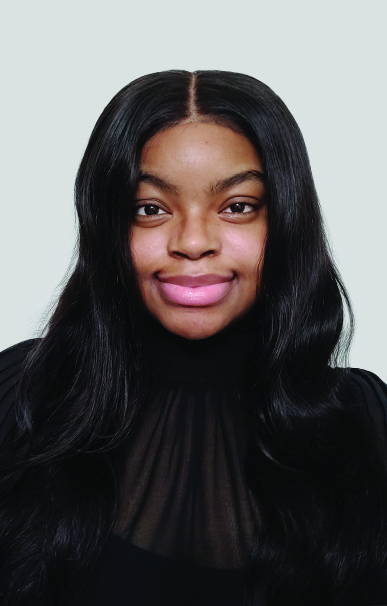 PROJECT
PROJECTAMBI: Visualizing Urban Media, Ecologies and Sensibilities
ORGANIZATION / LOCATIONPrichard Group, Department of East Asian Studies, Princeton University
MENTOR(S)Franz Prichard, Assistant Professor of East Asian Studies; Aaron Shkuda, Program Manager, Princeton-Mellon Initiative, Architecture
My project’s aim was to propose an artistic digital-learning module that would encourage others to examine the post-human condition within urban and media ecologies, and the extent to which this synthetic environment affects us. In today’s fast-paced society, many of us are adorned with unnatural technological accessories, if not fully immersed in them. I engaged in a personal case study to examine the implications of this condition, specifically in Japanese urban apparatuses. I immersed myself in Japanese depictions of the city through various visualizations and media, such as photography and city pop. I then combined my reactions and memories in a sketchbook of several artistic and subjective reimaginings. By recreating what I saw and felt, I recognized patterns in the sensibilities, or aesthetics, formed by cities and their depictions. I also created a self-made glossary of urban entities, including cyborgs, abandoned buildings and uncanny objects. Through this experience, I not only gained an opportunity to engage with materials directly related to my major, but the capability to examine the subjectivities and agencies formed from living in un-environments so others may do the same.
-
Stengel, Anton ’23
Mathematics
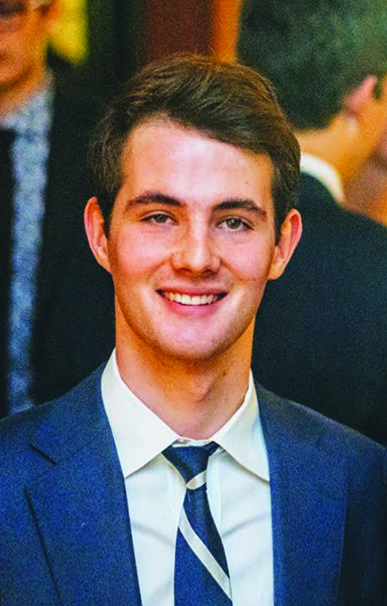 PROJECT
PROJECTCities, Sensors, Satellites and Sustainability: Mapping Cities and Urban Infrastructure Through Data Science
ORGANIZATION / LOCATIONSustainable Urban Infrastructure Systems Lab, Department of Civil and Environmental Engineering, Princeton University
MENTOR(S)Anu Ramaswami, Sanjay Swani ’87 Professor of India Studies, Professor of Civil and Environmental Engineering and the High Meadows Environmental Institute; Dana Boyer, Research and Development Manager, High Meadows Environmental Institute; Michael Milnar, Graduate Research Assistant, Sustainable Healthy Cities Network
SEE PRESENTATIONCertificate(s): Computer Science
I studied sanitation and wastewater treatment in India, where the lack of access to sanitation and clean water kills tens of thousands of Indians every year through waterborne diseases. I helped develop a deep learning model to identify wastewater treatment plants (WTTPs) from satellite imagery. I compiled from satellite imagery a data set of labeled images of thousands of WTTPs in the United States, as well as a few hundred Indian WWTPs identified from a web-scraping algorithm on Google Maps. I then created a preliminary deep learning model using state-of-the-art YoloV5 architecture in PyTorch that can pinpoint the location of an object based on an image inputted through a mathematical model. While the project is not complete, hopefully this research will help inform policy questions related to public health and pave the way for more deep learning research in the lab. My internship provided me with a broad exploration of environmental work as well as machine learning, and it has definitely encouraged me to pursue more of a mission-based career.
-
Tamama, Yuri ’22
Geosciences
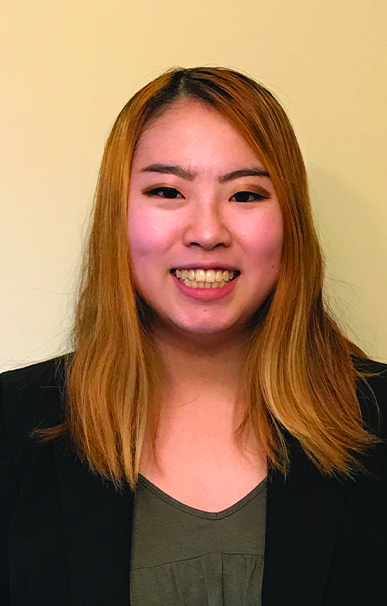 PROJECT
PROJECTGuyotPhysics: Princeton University Campus as a Seismic Observatory
ORGANIZATION / LOCATIONGuyotPhysics Lab, Department of Geosciences, Princeton University
MENTOR(S)Frederik Simons, Professor of Geosciences; Jessica Irving, Visiting Research Collaborator, Geosciences
I analyzed the continuous ground motion recorded by a seismometer in the basement of Guyot Hall at Princeton University to understand what these movements communicate about the Earth and campus environment. I wrote computer programs to process the data by creating figures that capture patterns. The most prominent signals were those of earthquakes. I found this remarkable, as Princeton is thousands of kilometers away from large earthquakes zones. Furthermore, each earthquake emits different waves that travel along distinct paths from the epicenter to Guyot Hall. I also studied the seismic background noise, which consists of the signals left over after excluding earthquakes from the seismic data. I learned that these signals are produced by ongoing environmental phenomena, including changes in atmospheric pressure, ocean waves interacting with land, and human activity. I have been using time-frequency analysis to examine these seismic and non-seismic signals and their temporal evolution over the course of three years, including the period of the pandemic lockdown. My internship taught me much about seismology and its applications to environmental science. I intend to continue research in these fields through my undergraduate independent work and a Ph.D. program.
* This internship is connected to the HMEI Urban Grand Challenges project, “Guyot Physics: Princeton University as an Urban Science Node.”
-
Teng, Cathy ’22
Computer Science
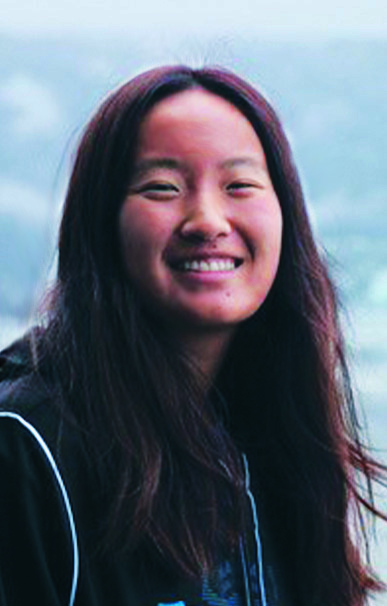 PROJECT
PROJECTEnvironmental Dilemmas of Cooperation in Heterogeneous Populations
ORGANIZATION / LOCATIONLevin Lab, Department of Ecology and Evolutionary Biology, Princeton University
MENTOR(S)Simon Levin, James S. McDonnell Distinguished University Professor in Ecology and Evolutionary Biology; Elke Weber, Gerhard R. Andlinger Professor in Energy and the Environment, Professor of Psychology and Public Affairs; Fernando Santos, Postdoctoral Research Fellow, Ecology and Evolutionary Biology; Vitor Vasconcelos, Postdoctoral Research Associate, Princeton Institute for International and Regional Studies
SEE PRESENTATIONI explored environmental dilemmas of cooperation in heterogeneous populations. Environmental dilemmas can be represented as nonlinear public-goods games. Previous research has shown that participants’ decisions to cooperate or defect are influenced by what they perceive other people are doing. People tend to systematically underestimate the climate change consensus among scientists and the general public. I studied cooperation levels in a population composed of groups that can have different levels of bias. I introduced an arbitrary fraction of unbiased individuals into otherwise biased populations to evaluate the efficacy and extent to which, for example, providing accurate information to a fraction of the population recovers cooperation. I built a Python model to simulate the cooperation level in a nonlinear public-goods game with two groups: an unbiased group and a group exhibiting under-trust, pluralistic ignorance or false consensus. I found that we only need 20-30% of the population to be unbiased to obtain sufficient cooperation. I gained valuable insight into the perception biases that prevent us from tackling our environmental problems. I plan to seek more opportunities at the intersection of tech and the environment!
-
Uberoy, Urvashi ’20
Computer Science
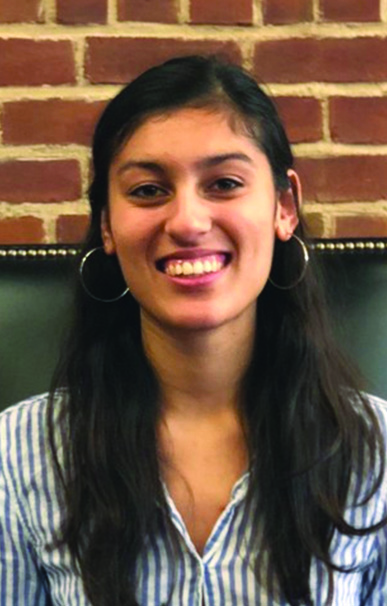 PROJECT
PROJECTConcrete Is 100 Years Old: A Historical and Technical Study
ORGANIZATION / LOCATIONMeggers Group, School of Architecture, Princeton University
MENTOR(S)Forrest Meggers, Assistant Professor of Architecture and the Andlinger Center for Energy and the Environment; Lucia Allais, Visiting Research Scholar, Architecture
Certificate(s): Architectural Engineering
The primary goal of this project was to explore the impact of a single equation — which calculates the time any reinforced concrete structure will fail due to carbonation — on the study of concrete from technical and historical perspectives. As part of my contribution, I researched notions of concrete longevity in India to see if any historical or technical publications describe a particular life span for concrete. This research was to corroborate my mentors’ findings that revealed that concrete has widely been considered a durable, long-lasting material despite its susceptibility to carbonation. To expand the search range, I connected with an architecture firm in New Delhi and interviewed Indian structural engineers to determine whether there is an approximate life span for reinforced concrete in post-independence India. Conducting interview-based research was a new experience for me, and it showed me the way in which conversations with the right people can sometimes point you toward relevant material faster than scouring internet archives. I plan to take this skill forward in my future academic projects.
-
Xia, Ryan ’22
Computer Science
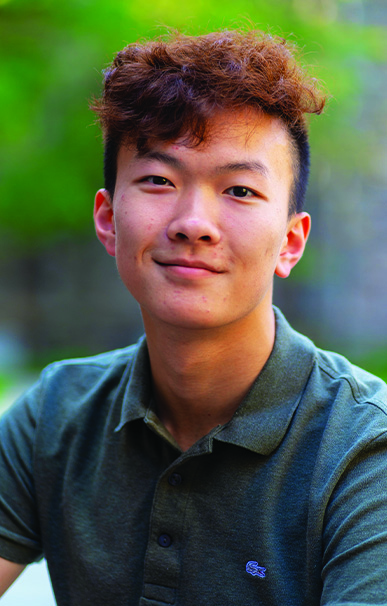 PROJECT
PROJECTCreating Visual Data for the Web
ORGANIZATION / LOCATIONMeggers Group, School of Architecture, Princeton University
MENTOR(S)Forrest Meggers, Assistant Professor of Architecture and the Andlinger Center for Energy and the Environment; Lucia Allais, Visiting Research Scholar, Architecture
The goal of my project was to design and build an interactive visualization program about the carbonation process in concrete. The primary focuses of the program were to show the uneven front of carbonation, the exponential relationship between time and concrete cover thickness, and uncertainty in time projections with known formulas. I primarily contributed to the design of the program and a website, which were built in conjunction with my mentors. Through this project, I gained valuable skills in using code libraries to develop data visualizations that are user friendly and clear. As a result, I have found myself moving toward working with data and designing visualizations as part of my future academic studies.
- Water and the Environment
-
Alessio, Ben ’21
Physics
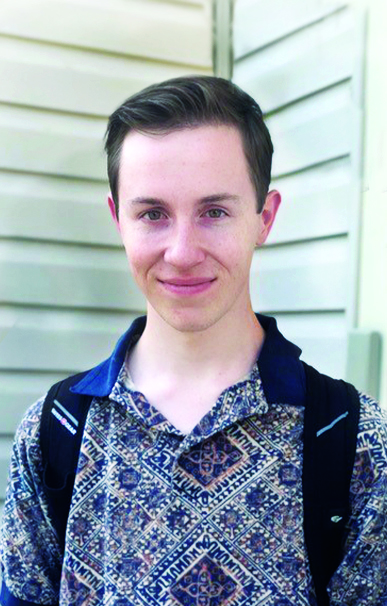 PROJECT
PROJECTElectrokinetics for Separation of Particles and Potential Water Purification
ORGANIZATION / LOCATIONComplex Fluids Group, Department of Mechanical and Aerospace Engineering, Princeton University
MENTOR(S)Howard Stone, Donald R. Dixon ’69 and Elizabeth W. Dixon Professor of Mechanical and Aerospace Engineering
SEE PRESENTATIONI researched diffusiophoresis, which is the transport of charged colloids — mixtures of microscopic particles of one substance suspended in another — by a concentration gradient in a solution. Diffusiophoresis has been demonstrated to serve as a mechanism to aid water-purification processes, though it has numerous potential applications in the field of fluid mechanics. I focused on the numerical modeling of pore-geometry experiments in which diffusiophoresis forced the compaction or ejection of colloids from a small pore. I expanded the numerical model to include theorized physical effects that had been previously neglected, including constant colloidal charge, two-dimensional fluid-velocity field arising from solute-wall interactions, and multiple solutes with co-dependent electro-neutrality. With these effects in the numerical model, the predicted transport closely matched experiments being performed by the research group. Throughout this internship, I came to understand the importance of numerical modeling and the patience required for it. As a physics major, I was initially out of my comfort zone working on a chemical engineering problem. However, my experience with partial differential equations and coding helped guide me toward a productive and fulfilling research experience, which I will be continuing for my senior thesis.
* This internship is connected to the HMEI Water and the Environment Grand Challenges project, “Diffusiophoresis of Control of Particles in Water Systems.”
-
Aranda Reina, Celia ’21
Civil and Environmental Engineering
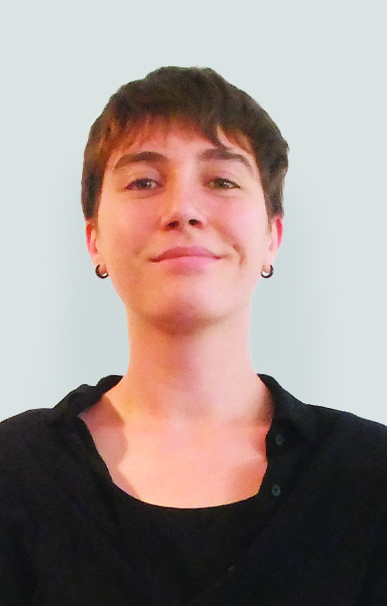 PROJECT
PROJECTMineral Dissolution
ORGANIZATION / LOCATIONInterfacial Water Group, Department of Civil and Environmental Engineering, Princeton University
MENTOR(S)Ian Bourg, Assistant Professor of Civil and Environmental Engineering and the High Meadows Environmental Institute; Bastien Wild, Postdoctoral Research Associate, Andlinger Center for Energy and the Environment
SEE PRESENTATIONCertificate(s): Latin American Studies
I studied the mechanism and speed in which minerals dissolve. Mineral dissolution could help address essential environmental problems, from the development of sustainable agricultural practices to carbon capture and storage. In order to better understand mineral dissolution, I learned how to compute theoretical mineral-dissolution rates using a soil solution’s composition, temperature and pH. I then helped in the scaling of mineral dissolution experiments at the Mer de Glace glacier in France and at The Watershed Institute in New Jersey. Moreover, I used data from synchrotron experiments — which impart high speeds to charged particles — to study the evolution of alteration layers that can impact mineral-dissolution rates. I performed data pretreatment and fitted the data to determine parameters such as the thickness or density of these alteration layers. This internship produced useful insights into mineral dissolution at different scales, part of which will be used for the preparation of upcoming experiments for my senior thesis. This experience made me want to pursue graduate education in environmental engineering after I graduate.
-
Celik, Aydan ’22
Civil and Environmental Engineering
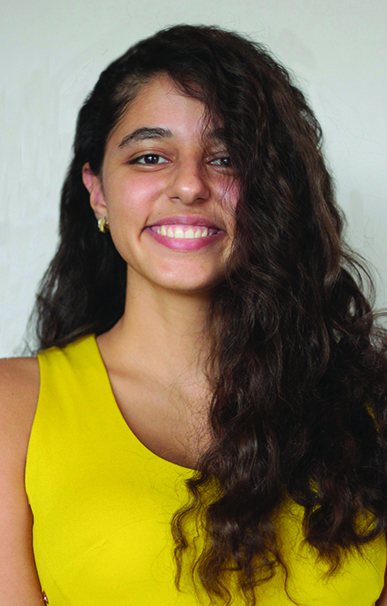 PROJECT
PROJECTMineral-Water-Organic Interactions in Soils
ORGANIZATION / LOCATIONInterfacial Water Group, Department of Civil and Environmental Engineering, Princeton University
MENTOR(S)Ian Bourg, Assistant Professor of Civil and Environmental Engineering and the High Meadows Environmental Institute; Emily Wei-Hsin Sun, Ph.D. candidate, Civil and Environmental Engineering
SEE PRESENTATIONCertificate(s): Materials Science
I worked in the Interfacial Water Group simulating organic molecules that represented natural organic matter such as sorgoleone and pyrro-quinoline. I developed these molecules using programming tools such as Visual Molecular Dynamics, Avogadro, Large-scale Atomic/Molecular Massively Parallel Simulator (LAMMPS) and the Optimized Potentials for Liquid Simulations (OPLS). I then validated my molecular simulations with experimental data to better understand how these molecules would interact with quartz surfaces in the presence of water and supercritical carbon dioxide. Due to this exposure, I am more curious about the role of organic molecules and their interactions with carbon and am aware that our understanding of these properties will allow us to improve carbon sequestration and mitigate climate change.
-
Cho, Stanley ’23
Chemical and Biological Engineering
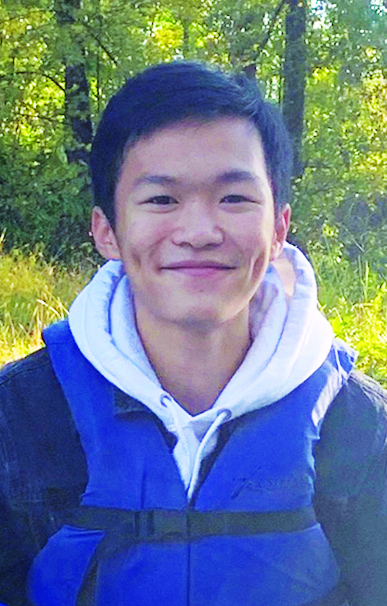 PROJECT
PROJECTMineral Dissolution
ORGANIZATION / LOCATIONInterfacial Water Group, Department of Civil and Environmental Engineering, Princeton University
MENTOR(S)Ian Bourg, Assistant Professor of Civil and Environmental Engineering and the High Meadows Environmental Institute; Bastien Wild, Postdoctoral Research Associate, Andlinger Center for Energy and the Environment
SEE PRESENTATIONI studied the manner and rates at which minerals dissolve, focusing on certain carbonates, phosphates and silicates. This has important implications for the management of inorganic nutrients in soils, the development of sustainable agricultural and forestry practices, and the carbon cycle and carbon sequestration. I used the PHREEQC software for geochemical speciation modeling to write code for calculating theoretical dissolution rates in the field. I also learned about the lab techniques X-ray reflectivity (XRR) and grazing-incidence small-angle X-ray scattering (GISAXS), and I experienced how to analyze synchrotron data using programs like IgorPro and Excel. Most of my work involved normalizing and correcting experimental data and extracting important mineral properties such as roughness, thickness and density. I believe the technical and interpersonal skills I gained have prepared me for academic research in this field. I look forward to incorporating these skills to better understand environmental issues and complete my senior thesis.
-
Cryan, Samuel ’22
Geosciences
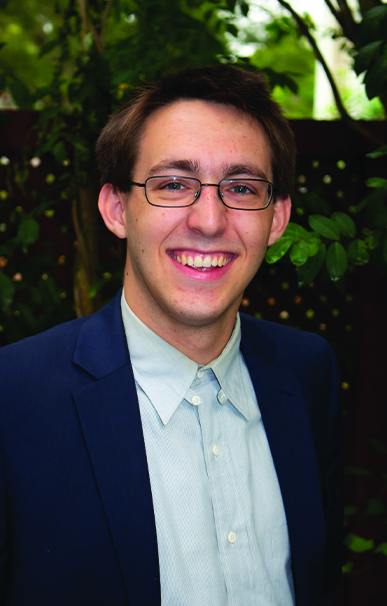 PROJECT
PROJECTTheoretical Simulations of Calcium Complexes in Seawater
ORGANIZATION / LOCATIONMolecular Environmental Geochemistry Group, Department of Geosciences, Princeton University
MENTOR(S)Satish Myneni, Professor of Geosciences; Kewei Zhao, Ph.D. candidate, Chemistry
SEE PRESENTATIONCertificate(s): Environmental Studies
I worked on a project analyzing how the various ions in seawater affect the formation of calcium carbonate. Calcium carbonate is an important building material in the ocean, especially as a protective shell for organisms such as corals and coccolithophores. I investigated the effect of chlorine on the properties of calcium in an aqueous environment. I conducted simulations of calcium chloride solutions at various concentrations of calcium and chlorine using the GROMACS molecular dynamics software package. I examined the radial distribution function, coordination number of chlorine and calcium, and the residence time of the water around the calcium and chlorine to gain an understanding of how the reactivity of calcium changes in the presence of chlorine. I also examined the speciation of calcium chloride based on various concentrations and engaged in a literature review of molecular simulations. I gained a greater appreciation for the role of computer analysis in research and greatly improved my coding ability, which I plan to further develop during my time at Princeton as I search for more opportunities to apply it to scientific research.
-
Culley, Sasha ’21
Economics
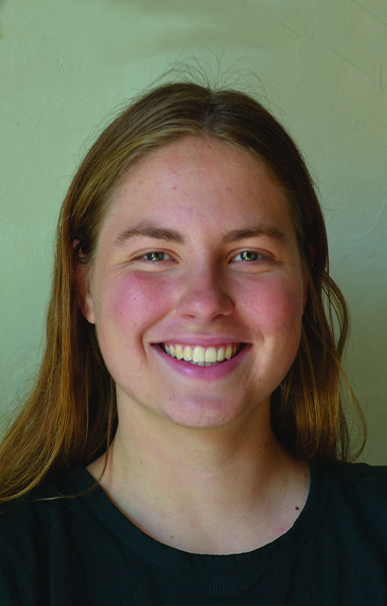 PROJECT
PROJECTNew Jersey Future: Water Infrastructure
ORGANIZATION / LOCATIONNew Jersey Future
MENTOR(S)Lauren Belsky, Program Coordinator, New Jersey Future
Certificate(s): Cognitive Science, Environmental Studies
I worked on a data visualization project for not-for-profit organization Jersey Water Works (JWW), which is creating flood-impact maps overlaid with demographic data on race, income and other vulnerability and resilience measures. My work focused on the consequences of combined sewer overflows (CSOs), a particularly dysfunctional type of water infrastructure that most acutely threatens the public health of communities of color. I gathered demographic and flood data for future analysis and motivated the mapping project by researching economic disparities within the context of water infrastructure. After analyzing the results, I presented summaries to inform JWW member action and policy recommendations related to the inextricably linked environmental and racial-justice implications of CSO investment. The analysis and consequent maps will aid the identification of environmental-justice hotspots and help effectively direct investments in equitable and sustainable water-infrastructure solutions.
-
Diallo, Nancy ’22
Mechanical and Aerospace Engineering
 PROJECT
PROJECTOil Spill Remediation Through Enhanced Turbulence
ORGANIZATION / LOCATIONSmits Fluid Mechanics Lab, Department of Mechanical and Aerospace Engineering, Princeton University
MENTOR(S)Alexander Smits, Eugene Higgins Professor of Mechanical and Aerospace Engineering, Emeritus; Liuyang Ding, Postdoctoral Research Associate, Mechanical and Aerospace Engineering
Certificate(s): French Language and Culture, Sustainable Energy
As a result of oil drilling, several ocean ecosystems face disruption due to oil spills. In order to protect these ecosystems, it is important to develop new and more efficient ways to clean up oil spills. My research analyzed one possible method: dispersion through means of enhanced turbulence propagated by synthetic jets. Dispersion is the process of breaking oil up into small droplets that are then mixed with ocean water, which happens naturally due to the turbulence of breaking waves. Synthetic jets that force water to flow through small openings could also be used to create turbulence in water and cause dispersion. Our group designed a synthetic jet array and research tank using computer-aided design software, and experimented with image analysis tools to study the sizes of oil droplets. We also conducted a mini at-home experiment using a fish tank to visualize fluid mechanics concepts. This work improved my technical writing abilities and knowledge of image analysis, as well as further developed my experimental and mechanical design skills. It helped cement my fascination with fluid mechanics and the environment, and I now plan to pursue graduate study in sustainable fluid mechanics.
-
Dickinson, George ’22
Civil and Environmental Engineering
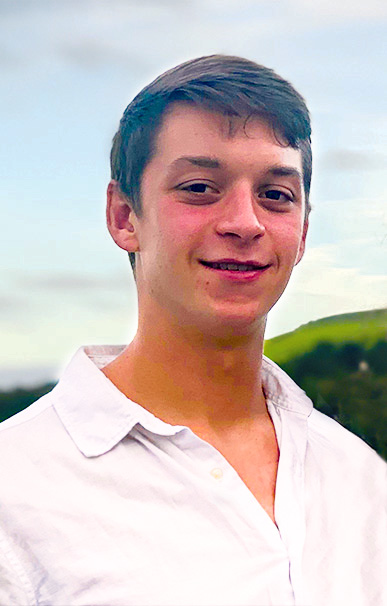 PROJECT
PROJECTMineral-Water-Organic Interactions in Soils
ORGANIZATION / LOCATIONInterfacial Water Group, Department of Civil and Environmental Engineering, Princeton University
MENTOR(S)Ian Bourg, Assistant Professor of Civil and Environmental Engineering and the High Meadows Environmental Institute; Xiaohan Li, Ph.D. candidate, Civil and Environmental Engineering
My project investigated the interface between water and black carbon in our atmosphere. As black carbon is the second largest anthropogenic contributor to global warming, it plays a significant role in understanding how humans contribute to climate change. I focused on creating a simulation of graphene oxide and water particles, and I worked on finding the angle a water droplet makes with a graphene oxide sheet. This will determine whether carbon particles sit on the surface of water droplets where they absorb sunlight, or if they enter the water droplet. I gained skills in using MATLAB, Large-scale Atomic/Molecular Massively Parallel Simulator (LAMMPS) and Visual Molecular Dynamics (VMD) computer software, and improved my coding and problem-solving skills. Learning about molecular dynamic simulations was the most interesting part of the internship. The process of finding and experimenting with different parameters and becoming familiar with the computer software was very interesting. I discovered that it can be applied in many areas outside of environmental engineering. I hope to be able to use these skills and knowledge during my Princeton career.
-
Fleury, Maria ’22
Civil and Environmental Engineering
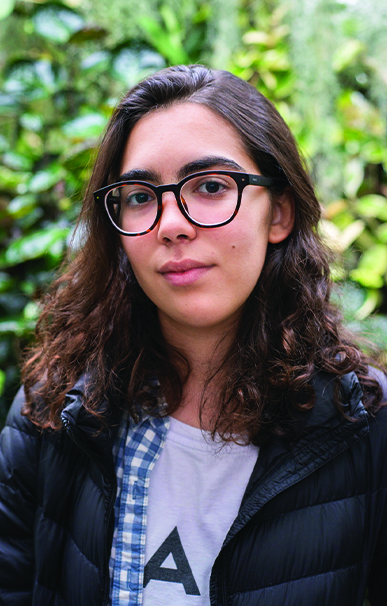 PROJECT
PROJECTAn Ecohydrology Analysis of the Stony Brook-Millstone Watershed
ORGANIZATION / LOCATIONPorporato Research Group, Department of Civil and Environmental Engineering, Princeton University
MENTOR(S)Amilcare Porporato, Thomas J. Wu ’94 Professor of Civil and Environmental Engineering, Professor of Civil and Environmental Engineering and the High Meadows Environmental Institute
SEE PRESENTATIONMy research focused on the ecohydrology of the Stony Brook-Millstone watershed in Hopewell Township, New Jersey. Ecohydrology describes the interactions between water and ecological systems. My project aimed to better characterize local water dynamics for an emerging partnership with The Watershed Institute. I analyzed rainfall and soil-moisture data collected at The Watershed Institute during the past five years. These data were supplemented by streamflow and groundwater data from the U.S. Geological Survey to identify yearly and seasonal patterns, which are important to understand for the sustainable use of water resources. I also replicated a basic soil-moisture model and used our findings to perform a sensitivity analysis on the model’s parameters so that it better represented the water dynamics of the Stony Brook-Millstone watershed. The model — and its limitations — generated interesting new questions about water-table and soil-moisture interactions. The eight weeks spent working with the Porporato Research Group provided me with a basic understanding of the field of ecohydrology and, consequently, a new dimension of knowledge on water issues. I am excited to continue with the research group in fall 2020!
-
Gourabathina, Abinitha ’23
Operations Research and Financial Engineering
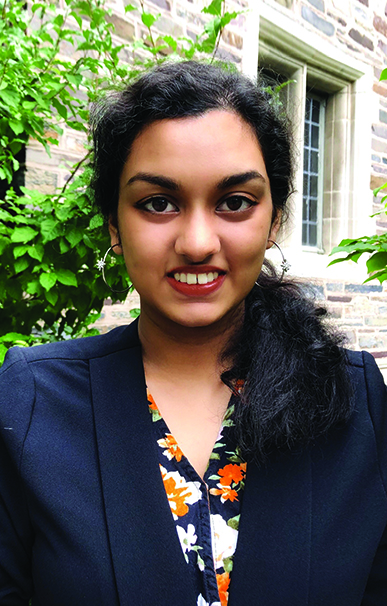 PROJECT
PROJECTSimulating Multiphase Flow Through Large-Scale Water Systems
ORGANIZATION / LOCATIONInterfacial Water Group, Department of Civil and Environmental Engineering, Princeton University
MENTOR(S)Ian Bourg, Assistant Professor of Civil and Environmental Engineering and the High Meadows Environmental Institute; Emily Wei-Hsin Sun, Ph.D. candidate, Civil and Environmental Engineering
SEE PRESENTATIONCertificate(s): Linguistics, Statistics and Machine Learning
My project focused on using molecular dynamics (MD) to simulate quartz-water surface interactions with large-scale water droplets. Using the open-source program Large-scale Atomic/Molecular Massively Parallel Simulator (LAMMPS), we modeled water molecules in both prism and disk conformations to analyze how water droplets spread and behave on quartz surfaces. The relatively large water droplets for atomistic simulations will push the boundaries of MD system scales, which will allow us to make connections between micro- and macro-scale properties and contribute to improving coarse-grained modeling in the future. After this project, I will work with the Bourg Research Group to investigate how changing the hydrophilicity of the surface will affect the behavior of the water as well and extract the resulting wetting properties. From the MD simulations, we would like to compare the extracted wettability data to that of typically larger-scale continuum fluid dynamics simulations.
-
Henry II, Benjamin ’22
Civil and Environmental Engineering
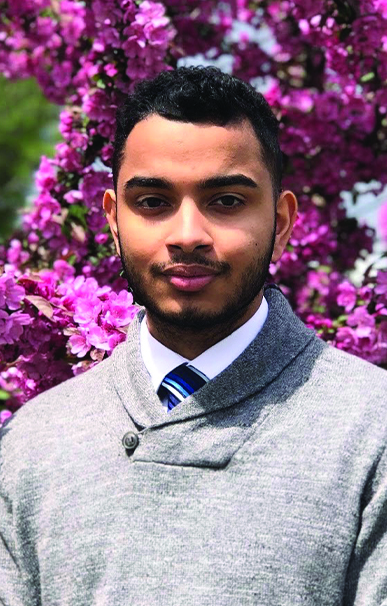 PROJECT
PROJECTMineral-Water-Organic Interactions in Soils
ORGANIZATION / LOCATIONInterfacial Water Group, Department of Civil and Environmental Engineering, Princeton University
MENTOR(S)Ian Bourg, Assistant Professor of Civil and Environmental Engineering and the High Meadows Environmental Institute; Xiaohan Li, Ph.D. candidate, Civil and Environmental Engineering
I worked to understand and quantify the interaction between black carbon (BC) and water in the atmosphere. When present in precipitation, BC makes snow and ice darker, which causes melting and a lower global albedo — or reflection of solar radiation back into space — that can increase global temperatures. Not much is known about the direct radiative forcing of BC, but its effect on precipitation and ice depends on how hydrophilic or hydrophobic it becomes after aging via oxidation or being coated by sulfates and organics. Our work used molecular dynamics simulations to manually oxidize pure carbon structures — in this case carbon nanotubes — and calculate their resulting contact angles with water to quantify hydrophilic/hydrophobic effects. Utilizing MATLAB, Large-scale Atomic/Molecular Massively Parallel Simulator (LAMMPS) and Visual Molecular Dynamics (VMD), I developed and executed scripts that simulated my carbon structures and analyzed their interactions with water via contact angles. Through this internship, I developed a stronger desire to better understand the microphysics of the atmosphere and resulting effects on climate, and I plan to pursue similar work in the future.
-
Iwasaki, Yuno ’23
Physics
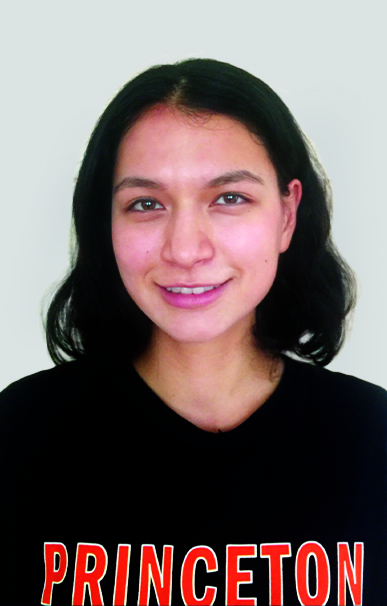 PROJECT
PROJECTCharacterizing the Microphysics of Atmospheric Organic Aerosols Using Molecular Dynamics Simulations
ORGANIZATION / LOCATIONInterfacial Water Group, Department of Civil and Environmental Engineering, Princeton University
MENTOR(S)Ian Bourg, Assistant Professor of Civil and Environmental Engineering and the High Meadows Environmental Institute; Xiaohan Li, Ph.D. candidate, Civil and Environmental Engineering
Certificate(s): Computer Science
I investigated the thermodynamics of water in secondary organic aerosols (SOA), which form via reactions of precursor organic compounds emitted into the atmosphere. I focused on interactions between water and 2-methyl-threitol, a photooxidation product of isoprene. Isoprene is the most highly emitted non-methane hydrocarbon. Isoprene oxidation products condense less readily into aerosol particles due to their volatility, but low yields can still impact global SOA composition due to the magnitude of isoprene emission. I analyzed the dispersion of 2-methyl-threitol on the surface of water droplets using molecular dynamics (MD) simulations, a computer simulation of the movement of molecules. MD simulations are commonly used to study biophysical systems, but atmospheric aerosol research is a new application of MD and a new direction for the research group. Natural and anthropogenic atmospheric aerosols can have a net-cooling or net-warming effect, and also affect cloud formation and air quality. The exact mechanism remains poorly characterized, however, partly due to uncertainties in the behavior of liquid water in aerosol particles. Gaining a thorough understanding of atmospheric aerosols is critical to improving existing atmospheric models.
* This internship is connected to the HMEI Water and the Environment Grand Challenges project, “Microphysics of Water in Secondary Organic Aerosol.”
-
Maruri, Philip ’23
Civil and Environmental Engineering
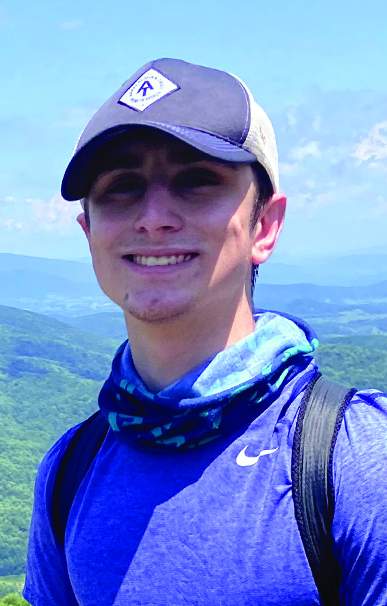 PROJECT
PROJECTMineral-Water-Organic Interactions in Soils
ORGANIZATION / LOCATIONInterfacial Water Group, Department of Civil and Environmental Engineering, Princeton University
MENTOR(S)Ian Bourg, Assistant Professor of Civil and Environmental Engineering and the High Meadows Environmental Institute; Jennifer Willemsen, Ph.D. candidate, Civil and Environmental Engineering
SEE PRESENTATIONI worked under Jennifer Willemsen on her research into the interaction of smectite clay minerals — a major component of soil — with various under-researched polluting organic molecules called contaminants of emerging concern (CECs). Much of this research is achieved through molecular dynamic (MD) simulations of the interaction these contaminants have with clay surfaces, which requires accurate computable models of each molecule. In the first four and a half weeks, I developed models for nine of the 53 CECs Willemsen set out to analyze. I then learned how to test the accuracy of my models by comparing experimentally reported density values with values predicted by MD simulations. During my last three and a half weeks, good agreement was achieved for eight of the nine molecules. This work is a central step in Willemsen’s research, which will improve our mechanistic and thermodynamic understanding of organic-mineral interactions. More concretely, this research can be used to predict partition coefficients, a value that translates the interactions between molecules and soil into equations of mass flux. These allow scientists to more accurately combat groundwater pollution and predict the environmental impacts of various industrial activities.
* This internship is connected to the HMEI Water and the Environment Grand Challenges project, “Adsorption of Emerging Organic Contaminants on Clay Surfaces.”
-
Moran, Izabella ’22
Mechanical and Aerospace Engineering
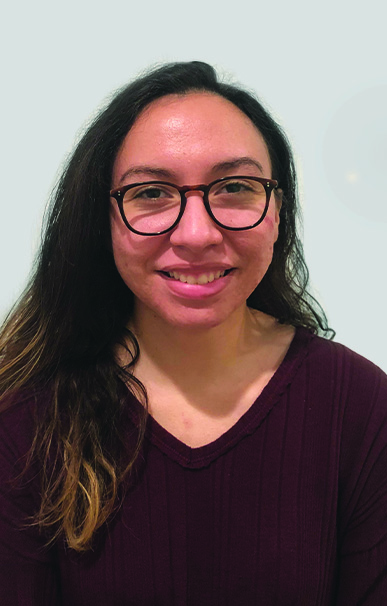 PROJECT
PROJECTOil Spill Remediation by Enhanced Turbulence
ORGANIZATION / LOCATIONSmits Fluid Mechanics Lab, Department of Mechanical and Aerospace Engineering, Princeton University
MENTOR(S)Alexander Smits, Eugene Higgins Professor of Mechanical and Aerospace Engineering, Emeritus; Liuyang Ding, Postdoctoral Research Associate, Mechanical and Aerospace Engineering
The purpose of this project was to design an apparatus that creates enhanced turbulence to aid in cleaning oil spills and mitigate marine pollution. I used computer-aided design to model a tank that can hold six synthetic jets and integrated both designs to create a functional system for testing the effects of turbulence on the dispersion of oil droplets. I also learned about various methods for image processing, specifically, how to analyze images of oil droplets in MATLAB by applying the circular Hough transform, a feature-extraction technique used in image analysis. This allowed me to visualize and determine the size distribution of the oil droplets. Through this internship, I was able to gain firsthand experience in academic research, and it has given me an opportunity to see the possibilities of using engineering in conservation.
-
Ralston, Nadia ’22
Civil and Environmental Engineering
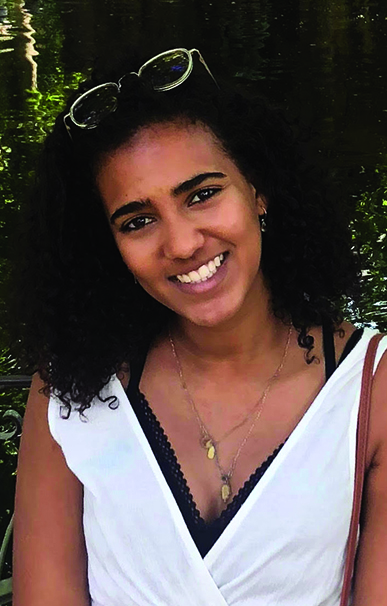 PROJECT
PROJECTMineral-Water-Organic Interactions in Soils
ORGANIZATION / LOCATIONInterfacial Water Group, Department of Civil and Environmental Engineering, Princeton University
MENTOR(S)Ian Bourg, Assistant Professor of Civil and Environmental Engineering and the High Meadows Environmental Institute; Emily Wei-Hsin Sun, Ph.D. candidate, Civil and Environmental Engineering
SEE PRESENTATIONMy project observed the wettability of water versus carbon dioxide on quartz in the presence of organic molecules in order to determine the characteristics relevant to carbon sequestration. Wettability is an indication of the interactions between a liquid and a solid surface. I installed the program Large-scale Atomic/Molecular Massively Parallel Simulator (LAMMPS) to simulate atomistic wetting phenomena and Visual Molecular Dynamics (VMD) to visualize the results on my laptop. I produced four molecules: tyrosine, p-Hydroxyphenyl, tannic acid and guaiacyl. After verifying that they moved correctly according to the various Newtonian forces acting on them, I duplicated the organic molecules and added them to the two simulations we are observing — one with water in between two layers of quartz, and a similar system with carbon dioxide in between as well. I plan to continue my work by observing these interactions to see how the results can be applied to multiphase flow through mineral matrices. I also plan to investigate the effects of these organics in mica and clay systems that are more relevant to soil carbon and soil fertility with the ultimate goal of applying this knowledge to agriculture in arid regions.
* This internship is connected to the HMEI Water and the Environment Grand Challenges project, “Adsorption of Emerging Organic Contaminants on Clay Surfaces.”
-
Tseitlin, Misha ’21
School of Public and International Affairs
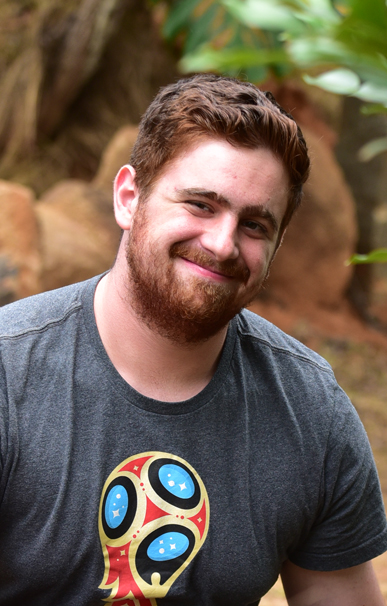 PROJECT
PROJECTData-Intensive Analysis of the Climate Water Crisis in India
ORGANIZATION / LOCATIONNITSAN Sustainable Development Lab, Tel Aviv University
MENTOR(S)Ram Fishman, Assistant Professor of Public Policy, Tel Aviv University; Deepak Malghan, Assistant Professor, Indian Institute of Management Bangalore
Certificate(s): Neuroscience, Statistics and Machine Learning
I modeled the climate econometrics of commercial-loan sector behavior on agricultural loans throughout Karnataka, India, by analyzing a comprehensive data set of private and public financial loans. I mainly contributed to organizing, cleaning and interpreting existing data to generate a usable starting point for panel and spatial methods, leveraging nonlinear methods when working with binary outcome variables for loan status designation. These financial metrics were combined with various sociodemographic controls on caste, various social status markets such as government and military status, and gender to present a more holistic picture of the winners and losers in the commercial marketplace. These data and findings also were synthesized with rainfall data to deconstruct a highly granular relationship between extreme weather patterns and agricultural laborers in the largely rural Indian state. By generating visualizations, write-ups and models, I honed my econometrics skills and learned to cross-apply these methods to novel and highly relevant environmental challenges that affect some of the world’s most vulnerable people.
-
Xu, Kaylin ’22
Chemistry
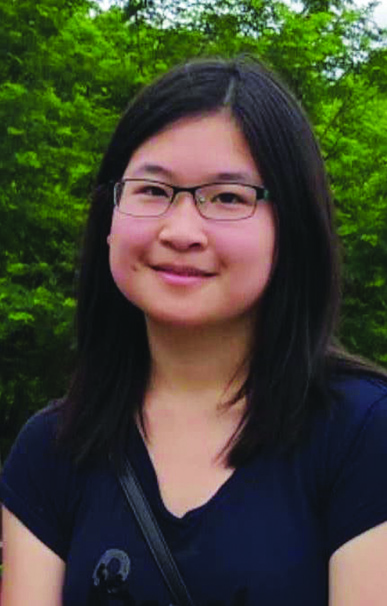 PROJECT
PROJECTInvestigating the Use of Teeth as Biomarkers for Exposure to Inorganic Pollutants
ORGANIZATION / LOCATIONMolecular Environmental Geochemistry Group, Department of Geosciences, Princeton University
MENTOR(S)Satish Myneni, Professor of Geosciences
Certificate(s): French Language and Culture, Materials Science and Engineering, Urban Studies
Current methods assessing exposure to inorganic pollutants, such as blood analysis, are costly and detect only recent exposure. Inorganic pollutants substitute into mineralized body tissues such as bone and teeth, where they can remain for decades. Such hard tissues, particularly deciduous (or baby) teeth, offer a promising avenue of screening people for past long-term exposure to inorganic pollutants. Assessing arsenic and zinc was of particular interest to me, as I was building on previous work in the Myneni Group on arsenic in ancient Mayan remains and zinc in teeth samples from Bangladesh. I conducted literature reviews about arsenic metabolism, teeth nucleation and the in-vitro simulation of teeth nucleation. I learned how to use two thermodynamic codes, MINTEQ and Geochemist’s WorkBench. I modified their thermodynamic databases by adding new minerals from the literature and updating solubility constants. Using those edited codes, I was able to thermodynamically model the arsenic and zinc solids that could precipitate in human teeth at various physiological ranges of different ions. I also had the opportunity to contribute to writing a scientific manuscript. Because I deeply enjoyed this internship, I feel motivated to seek a research-related career in a field related to the environment and sustainability.



